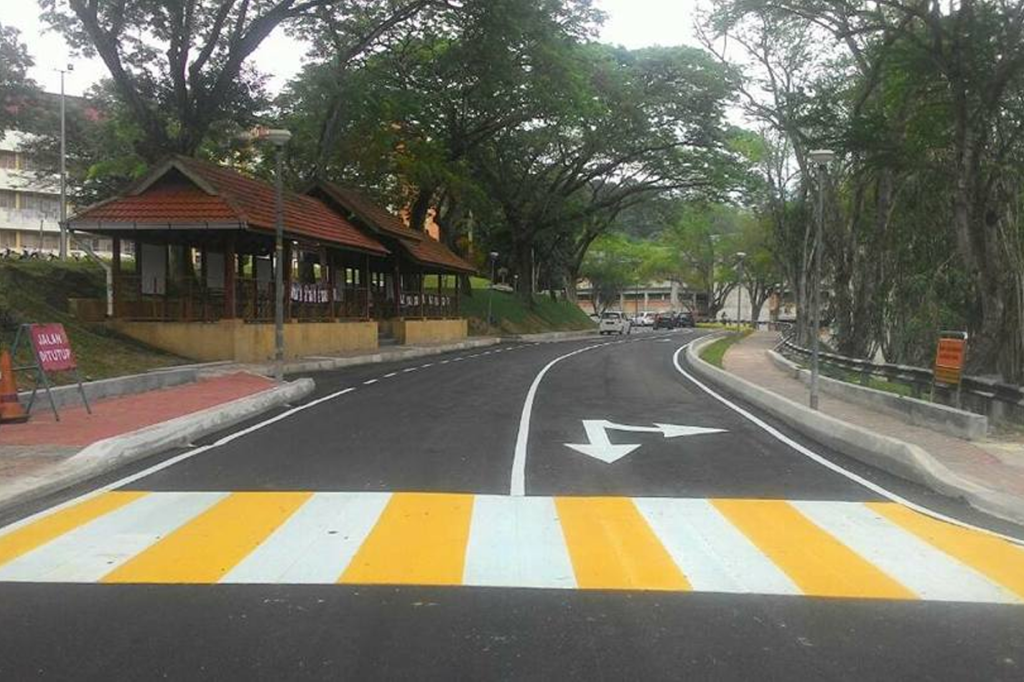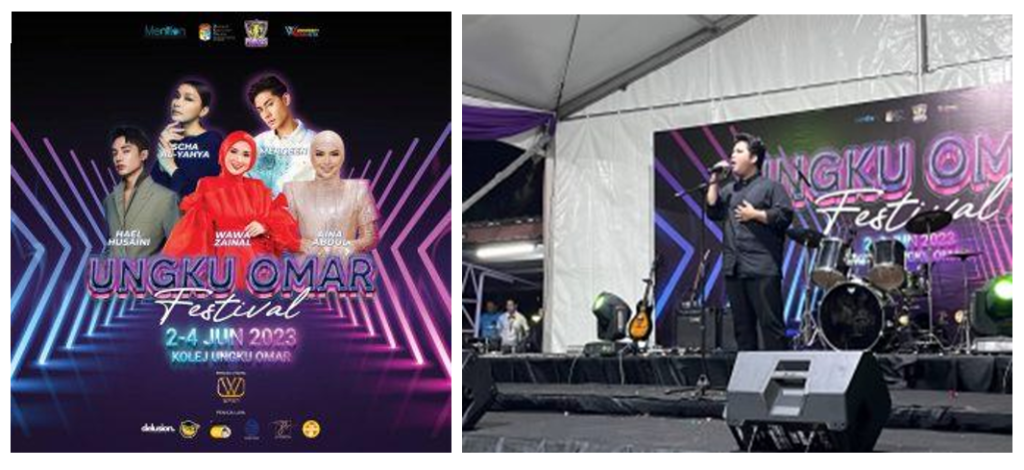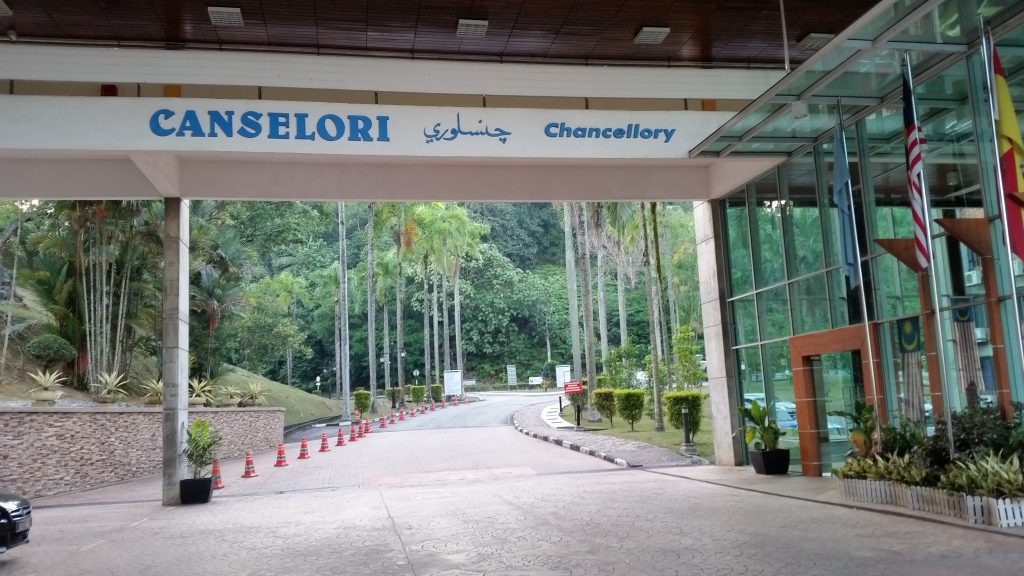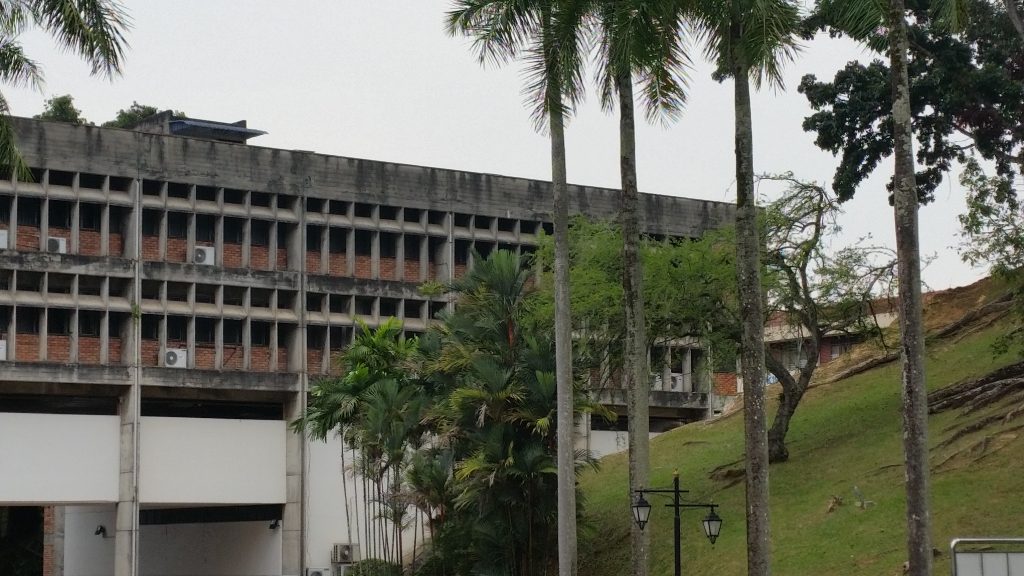
Last updated on: 31 March 2025
Universiti Kebangsaan Malaysia (UKM) commitment to arts, heritage, and sustainability positions it as a leader in promoting sustainable cities and communities. By offering free access to culturally significant buildings, green spaces, and promoting local arts, UKM ensures the preservation of Malaysia’s cultural heritage while driving sustainable urban development. Its dedication to eco-friendly practices, affordable housing, and inclusive commuting solutions reflects UKM leadership in achieving SDG 11 and setting a model for sustainable living and working environments.
Istana Puteri Bongsu, Taman Pantun
The Istana Puteri Bongsu, Taman Pantun is a treasured cultural heritage site nestled within the Malay Institute of Nature and Civilization (ATMA) at UKM’s Bangi Campus. This unique architectural marvel celebrates the depth and beauty of Malay pantun poetry, offering a rare glimpse into traditional Malay culture and artistic expression. Open to the public with free admission, the Istana Pantun invites visitors to immerse themselves in the elegance of Malay literary heritage. Through this accessible cultural space, UKM preserves and promotes Malaysia’s rich traditions, fostering an appreciation for the nation’s artistic legacy and providing an inspiring venue for learning and cultural exploration.
The construction of Rumah Tengku Bongsu in Taman Pantun at UKM is a commendable effort in preserving and maintaining a piece of Malay architecture that dates back over a century. Its unique architectural features, particularly in the central living area, retain the essence of traditional Malay design, even after hundreds of years. This historic building provides an invaluable platform for researchers in the fields of architecture and heritage to study the foundational principles and philosophies of traditional Malay architecture embodied in its design. It serves as a living testament to the preservation and sustainable development of Malay heritage architecture, inviting engagement and appreciation from diverse communities and ensuring that this rich cultural legacy remains alive and celebrated. This initiative reflects UKM dedication to cultural preservation, education, and community engagement.
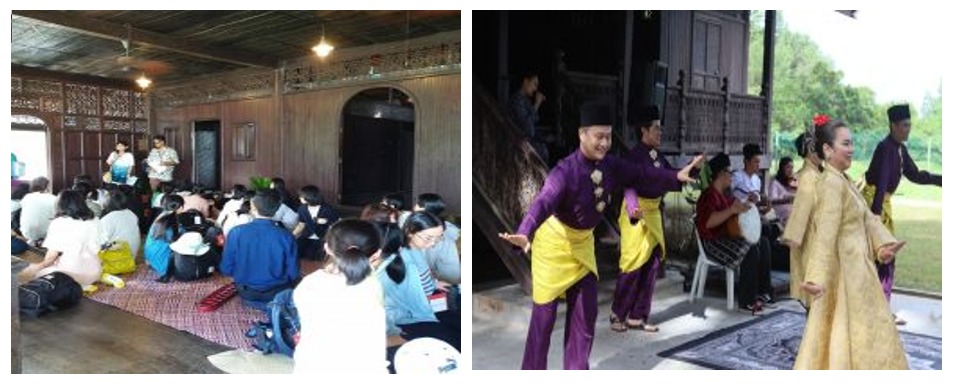
Source: https://www.ukm.my/atma/istana-puteri-bongsu/
Chancellery Building
The Chancellery Building at UKM stands as an iconic symbol of leadership and vision at the heart of the campus. Serving as the university’s administrative centre, it houses the offices of the Vice-Chancellor, Deputy Vice-Chancellors, and other pivotal administrative figures who drive UKM’s mission of academic excellence and societal impact. Although certain areas have restricted access, the building remains generally accessible to the public, reflecting UKM’s commitment to transparency and community engagement. The staffed information counter during working hours provides guidance and support for visitors, ensuring a welcoming experience. More than just an administrative centre, the Chancellery Building embodies UKM dedication to fostering an inclusive environment where leadership and the public intersect to support transformative educational goals.
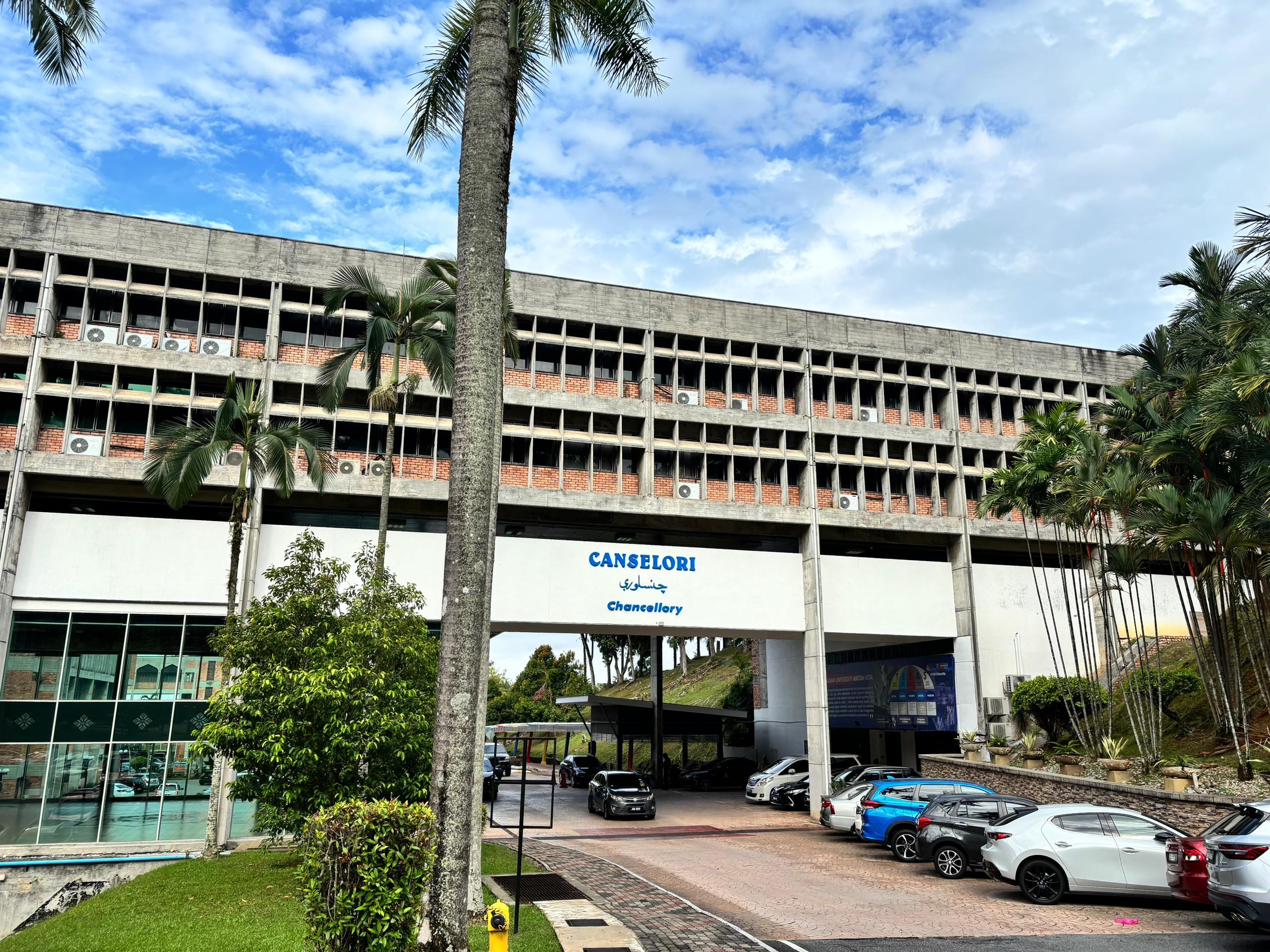
Tun Seri Lanang Library
The Tun Seri Lanang Library (PTSL), UKM building is located within the Bangi campus. It is typically situated in a central location on campus, easily accessible to students and staff. The building operates Monday to Friday from 8:00 AM to 10:00 PM, with operations beginning at 8:30 AM. On weekends, it remains open on Saturday and Sunday from 10:00 AM to 5:00 PM, except for the first Saturday of each month, when it is closed.
Faculty of Science and Technology (FST)
The Faculty of Science and Technology (FST) building located on the Bangi campus, is generally accessible to the public, especially during university opening hours with certain restrictions or requirements for laboratories, research facilities and office areas.
Dato’ Onn Residential College
The first residential college, Dato’ Onn Residential College (KDO) located on the Bangi campus is generally accessible to the public around the public areas during university hours. However, access to residential areas within the college is strictly restricted to students and authorized personnel.

UKM Stadium
The UKM Stadium, also known as the UKM Stadium, is a premier sports facility that welcomes public access during non-event days or when no matches or events are scheduled. Designed to promote community well-being and active lifestyles, this stadium serves as a vibrant space for both students and the wider community to engage in sports and recreational activities. By opening its doors to the public, UKM fosters a spirit of inclusivity, encouraging health, fitness, and social interaction in a top-tier athletic environment. This initiative reflects UKM commitment to community engagement and enhancing public health.
University Health Center (PKU)
The University Health Center (PKU), UKM provides accessible healthcare services to both the university community and the general public. Open to all, PKU UKM offers essential health services, including basic medical checkups, minor treatments, and personalised health consultations, in a welcoming and supportive environment. This centre plays a crucial role in promoting public health awareness and preventive care, empowering individuals to take proactive steps towards their well-being. Through this initiative, UKM demonstrates a strong commitment to community health, enhancing quality of life and fostering a healthier society.
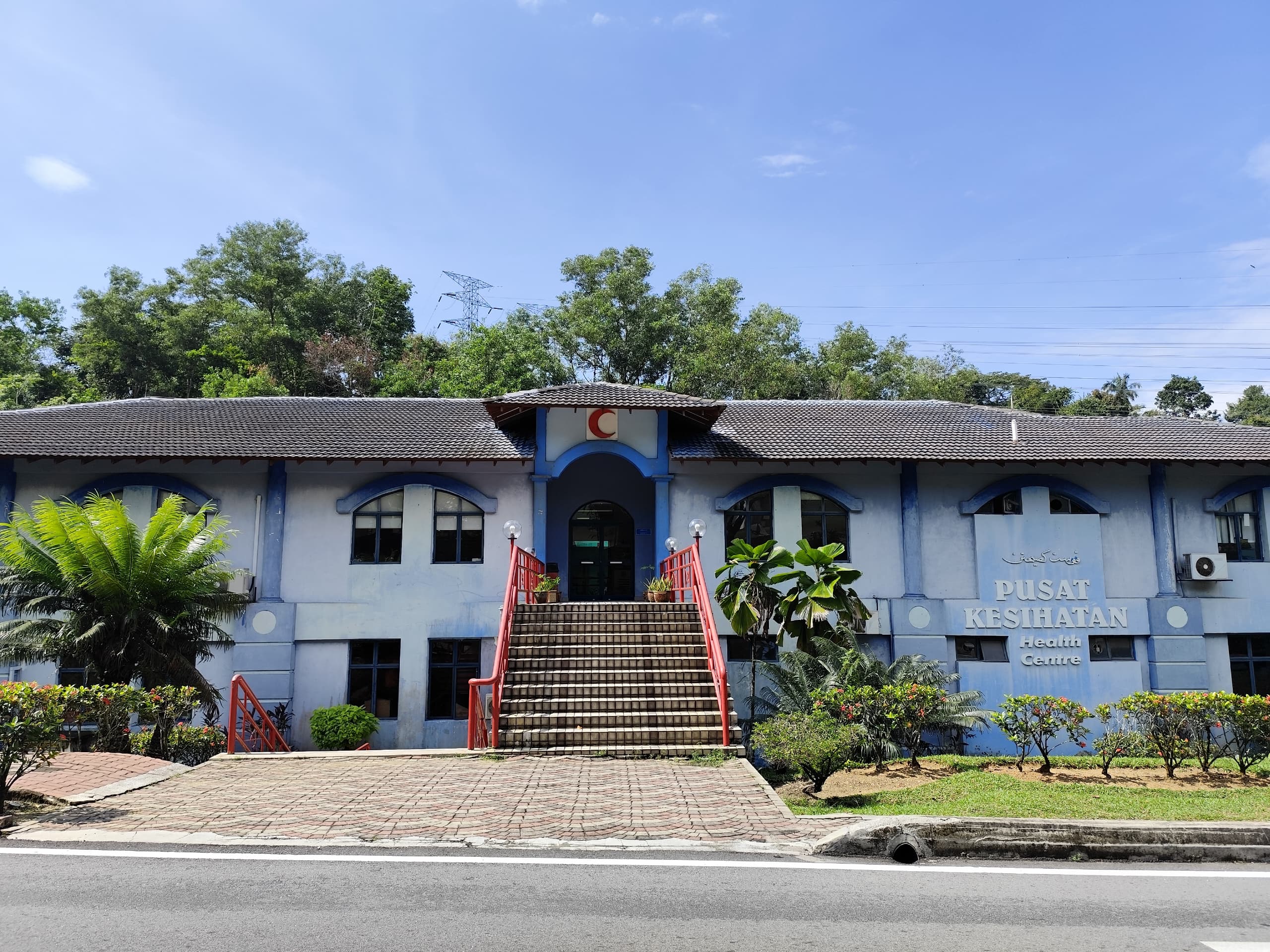
Institute for Environment and Development (LESTARI)
The Institute for Environment and Development (LESTARI) building at UKM stands as a beacon of sustainability and environmental research, embodying UKM commitment to fostering a sustainable future. Open to the public, especially during university hours, LESTARI provides a valuable opportunity for visitors, students, and researchers to explore pioneering environmental projects and sustainable development initiatives. While some restrictions may apply depending on the nature of the visit, the institute remains dedicated to engaging with the community, encouraging collaborative learning, and sharing insights into critical environmental issues. This openness reinforces UKM role as a leader in environmental stewardship, inviting the public to witness impactful research in action and inspiring a collective commitment to preserving our planet for future generations.
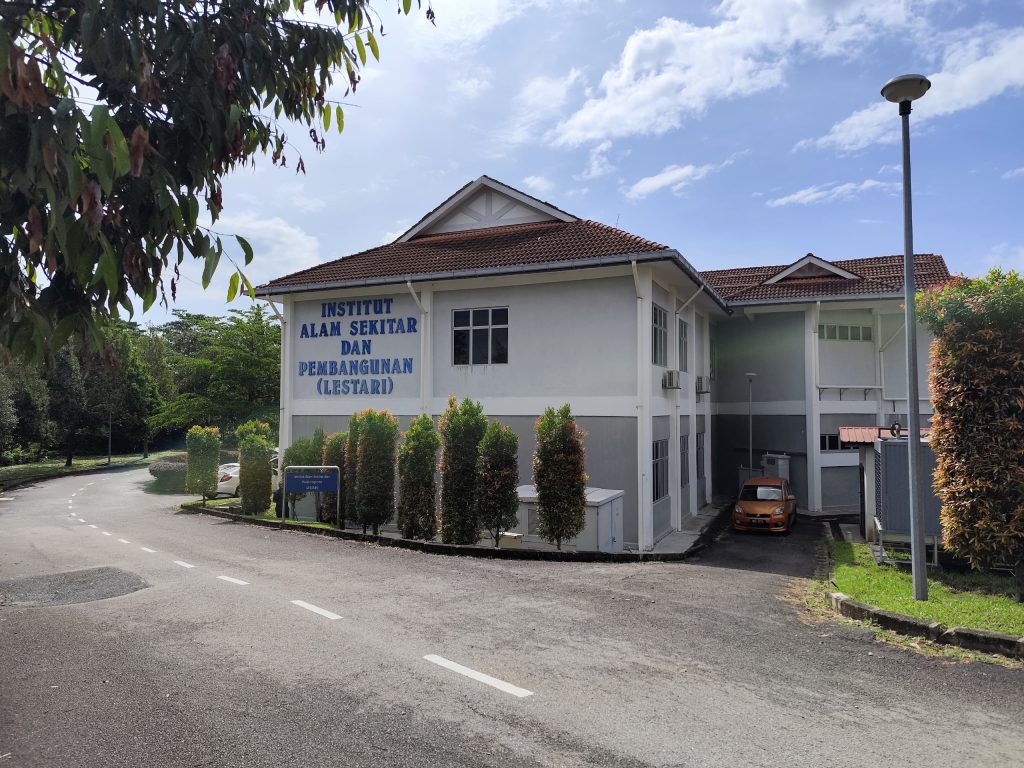
Universiti Kebangsaan Malaysia (UKM) is home to two distinguished library facilities, each designed to support the diverse academic and research needs of its community: the Perpustakaan Tun Seri Lanang (PTSL) and the Lingkungan Kedua Library (PL2).
Established in 1970 and officially named in 1980, PTSL is the main library located on UKM’s Bangi campus. This six-story facility is a dynamic center for knowledge, housing extensive collections and providing access to four specialized branch libraries, including the Malay World & Civilisation Branch Library, the Law Branch Library, the Dr. Abdul Latiff Branch Library, and the UKM Hospital Branch Library. PTSL not only supports academic growth but also serves as a custodian of Malay heritage and legal scholarship, making it a valuable cultural and educational resource for both the university and the broader community.
Opened in 2013, the Lingkungan Kedua Library (PL2) is a vital resource for students and faculty in the Faculty of Engineering and Built Environment (FKAB), the Faculty of Technology and Computer Science (FTSM), and the Faculty of Law (FUU). Strategically located and equipped with specialized resources, PL2 facilitates focused learning and research, fostering innovation and academic excellence in these fields.
Together, these libraries underscore UKM’s dedication to creating a rich academic ecosystem that inspires discovery, preserves cultural heritage, and provides all students and researchers with the resources they need to excel in their studies and contribute to society. Through these facilities, UKM affirms its role as a beacon of knowledge and cultural preservation in Malaysia.
Both Perpustakaan Tun Seri Lanang (PTSL) and Lingkungan Kedua Library (PL2) are dedicated to empowering learning and research by ensuring seamless access, efficient retrieval, and insightful interpretation of knowledge from an array of sources. Offering an extensive collection of over 50,000 volumes of books, journals, and multimedia resources in both physical and digital formats, these libraries cater to a diverse range of disciplines, with approximately 15,000 volumes devoted specifically to engineering and related fields.
In their commitment to inclusivity and community service, these libraries extend access and borrowing privileges to a broad audience, including academic and non-academic staff, UKM students, alumni, and even external individuals and corporate entities under university regulations. By providing these resources and services, UKM libraries actively contribute to academic advancement and lifelong learning, fostering a culture of intellectual exploration and knowledge-sharing. This commitment positions UKM as a leader in providing accessible, high-quality resources that not only support the university community but also strengthen connections with society at large, promoting an informed and educated public.
FACILITIES AT UKM Library
i) Abdul Aziz Shaik Mydin 24 Hours Area
Located at Level 4 next to the Reference Collection. It has a spacious reading area and is equipped with Wi-fi coverage. Kwik-print service is also provided in this area.
ii) Tun Seri Lanang 24 Hours Reading Area
Located at Tun Seri Lanang Foyer and it provides a spacious reading area. Library clients can make use of this space for discussion because they are not allowed to make discussions in the reading area unless in discussion rooms. Vending machines and Wi-Fi are also provided in this area.
iii) Café
Refreshments are provided at a café located at Tun Seri Lanang foyer. Clients can have a break to enjoy food and drinks at the café due to no food and drink policy in the library.
iv) Anjung Ilmu PTSL
Anjung Ilmu PTSL can be used by all library clients. It provides two (2) discussion rooms that can accommodate eight (8) clients for every room and twelve (12) carrel desks equipped with power sources and Wi-fi.
v) Anjung Pro-Canselor Tun Ahmad Sarji
Located at Level 4 and placed in the Tun Ahmad Sarji Special Collection. This space provides a spacious reading area and is suitable for discussion.
vi) Training Lab
The training lab can accommodate 35 clients at one time and is located at Level 4, User Education Unit. There is another training lab at siber@ptsl that can accommodate 40 clients at one time.
vii) Self-Check Machine
The library provides one (1) self-check machine for borrowing and returning books. This machine is located at Level 4.
viii) Reading Area
The library provides a reading area that can accommodate 1,633 clients at one time.
ix) Discussion Rooms
There are eighteen (18) discussion rooms, three (3) are available at Level 4, ten (10) are available at Level 3 and Level five (5) are available at Level 2. These rooms are free of charge. Registration can be done online via discussion rooms booking system (drbs.ukm.my).
x) Siber@ptsl
Library clients can access the Internet including online databases and e-mail. CD-ROM, typing and printing services are also available on this premise.
xi) Sanggar Ilmu
This facility can be used for the library’s official events and can accommodate around 150 people at one time. It is located at the User Education Unit, Level 4.
xii) Room For Disabled Clients
It provides basic facilities for visually impaired clients and is accessible/located at Level 4. This room provides one (1) computer equipped with JAWS software.
xiii) Locker
The library provides three (3) methods of locker rental for everyone.
xiv) Free of charge self-service lockers
Monthly rental locked lockers with RM5.00 rental fee and RM15.00 deposit. Free of charge daily lockers and can be registered at Checkout Counter, Level 4
xv) Multipurpose / Seminar Room
There are three (3) seminar rooms that can accommodate 20, 30 and 50 clients at one time, and one (1) multipurpose room that can accommodate up to 150 clients. These facilities are provided for the library clients and are suitable for video presentations and lecture sessions. Library clients who want to use these facilities can make a reservation at the counter of Multimedia Unit, Level 2.
xvi) Zainal Azman Rajudin Training Room
This facility is excellent for training purposes and official events. This room is located at the Multimedia Unit, Level 2 and can accommodate 40 people at one time.
The Perpustakaan Tun Seri Lanang (PTSL) and Lingkungan Kedua Library (PL2) offer extensive opening hours, ensuring students and members can access essential resources and study spaces at convenient times. With immediate access to the online catalog, holdings information, electronic journals and specialized scientific search engines, the libraries empower users to navigate vast amounts of information effortlessly.
The libraries subscribe to leading online journal databases, including IEEE Xplore and Emerald, which provide access to high-impact academic content across diverse fields. Additional resources such as Science Direct, ACM Digital Library, Taylor & Francis, and SpringerLink are available upon request, allowing members to obtain specific research materials as needed. Through the I-Quest service, members can request these resources anytime by visiting I-Quest Online Request, offering a seamless, user-friendly experience to support research at every stage.
Information on the libraries, including access to these digital resources, is readily available through the PTSL Library Website. Faculty members and students can also request resources not currently in the library’s collection through the I-Quest facility, further extending the range of academic materials accessible to the UKM community. This expansive suite of resources reflects UKM’s commitment to fostering a world-class research environment and supporting a vibrant intellectual ecosystem, ensuring that all members have the tools needed to achieve academic excellence and contribute to groundbreaking discoveries.
| Perpustakaan Tun Seri Lanang (PTSL) | |
Schedules of PTSL and PLK Libraries Opening Hours
| PTSL Library During Semester | Monday – Friday Saturday and Sunday First Saturday on the month and Public Holiday | 8.30 am – 10.00 pm 10.00 am – 5.00 pm Closed |
| PL2 Library During Semester | Monday – Thursday Friday Saturday, Sunday and Public holiday | 8.00 am – 7.00 pm 8.00 am – 12.15 noon 2.45 pm – 7.00 pm Closed |
Source: PTSL’s website.
Universiti Kebangsaan Malaysia (UKM) safeguards a wealth of national and academic treasures through its 18 diverse museums and galleries. These spaces, open to the public, showcase a range of cultural, scientific, and historical themes. From the Museum of Asian Art, which highlights regional artifacts, to the Geological and Biodiversity Museums, which celebrate the natural world, UKM offers a comprehensive cultural experience. The university is also dedicated to preserving the Malay language and culture, with dedicated spaces showcasing the rich history and evolution of these traditions.
Tuanku Chancellor Gallery
The Tuanku Chancellor Gallery is another landmark on the beautiful campus. This gallery is a recording of the history of the establishment, development and excellence of the University for a period of three centuries. Since its establishment on 18 May 1970, every day that passes is history for UKM which has succeeded through various obstacles and challenges in its efforts to stand as a center of excellence in knowledge.
Source: https://www.ukm.my/muzium/galeri-tuanku-canselor/
Academic Heritage Museum
The filling and layout of the Academic Heritage Museum collection are made by the institute’s memory concept for a higher education center which is a park of knowledge and information. To create a harmonious and cheerful museum atmosphere, the combination of yellow, brown and golden colors is the main choice. The collection on display at the museum includes posters, photographs, artefacts, research results, a collection of professors’ inaugural lectures, publications, medals, certificates of appreciation, awards and recognition.
Source: https://www.ukm.my/muzium
1. Lithograph, Caricature, and Manuscript Gallery, FSSK
This gallery displays collection that are never been cataloged by any research institutions. Lithographs, caricatures, and manuscripts are the main exhibits and they are important for understanding a country’s history and heritage. The lithographs in the gallery are the works of colonial artists invited by the Portuguese, Dutch, English, and French colonial governments to record the historical events that occurred in the Malay world. Among the subjects of the artworks are events, Malay society and culture, and the tropical flora and fauna found on the Malay Peninsula.
Source: https://www.ukm.my/sphea/en/about-us/facilities/lithograph-caricature-and-manuscript-gallery/
2. Malay Fashion Center, FSSK
Malay Fashion Center is a mini museum that exhibits traditional Malay fashion or clothing. This hall is used for teaching and learning sessions for students at Bitara Melayu.
Source: https://www.ukm.my/ppbkkm/muzium-seni-warisan/
3. The Geological Museum, FST
The Geological Museum was launched in 1990. Since the establishment of the Geological Department in conjunction with the establishment of UKM itself in 1970, efforts to develop this museum took time to complete, especially the collection of local mineral, rock and fossil samples. To date, the total number of samples collected is over 7000 samples covering the Geological Museum, Geological Gallery and Rock Archives.
Source: https://www.ukm.my/msa/en/repository/geology/introduction-geology/
4. Malaysian National University Zoological Museum, FST
The zoological museum has a diverse and unique collection of specimens of marine life, fish, amphibians, reptiles, birds and mammals. These specimens have been preserved since the 80s and there are also several specimens from the 70s, where these specimens are preserved using several curing methods such as curing methods in formalin and alcohol solutions of ethanol, taxidermy, bone and diaphanized.
Source: https://www.ukm.my/msa/en/repository/zoology/introduction-zoology/
5. Seed Bank of Universiti Kebangsaan Malaysia (UKMSB), FST
The UKMSB is one of the units under the Natural History Museum, Faculty of Technology Science. This unit serves as a conservation center and preservation of plant genetic resources such as paddy, fruits and vegetables in particular used in research in UKM. This unit keeps various types of crop access including traditional varieties, wild varieties, modern cultivars and biakasonic droplets. To date, for paddy crops alone, UKMSB has more than 100 traditional varieties, 50 modern cultivars, and more than 600 droplets. Additionally, UKMSB also has over 25 chilli accesses, 30 salad access, 30 access tails, 10 nut access, and various vegetable access and other fruits. These accessories are obtained through research activities, fieldwork and seed sharing with individuals/research institutions/education from within and outside the country.
Source: https://www.ukm.my/msa/en/repository/seed-bank/introduction-seed-bank/
6. Universiti Kebangsaan Malaysia Herbarium (UKMB), FST
The UKMB is located at the Faculty of Science and Technology (FST), is part of UKM’s facility center used in teaching, education and research. The UKMB Herbarium has received visits from students, lecturers and researchers from various domestic and foreign institutions.
7. Center for Insect Systematics (CIS), FST
The CIS of UKM is one of its kind in Southeast Asia. CIS is also one of the UKM’s centres of excellence. CIS was established in 1993 following the Agenda 21 of the Rio Declaration. Since its inception, the centre has a collection of over 100,000 specimens, of which >120 are type specimens. CIS has its world-circulated journal SERANGGA, which is dedicated to the publication of research findings in insect systematics and diversity, particularly in Southeast Asia as well as other parts of the world.
Source: https://www.ukm.my/cis/about-cis/
8. FKAB Gallery
A gallery that serves to increase understanding of the history of UKM’s Faculty of Engineering and Built Environment as well as increase awareness of the diversity of the faculty’s activities and achievements.
Source: www.ukm.my/jurutera
9. Tun Fatimah Hashim Gallery
The Tun Fatimah Hashim Gallery was established at UKM to appreciate the services and contributions of a female national leader – Tun Fatimah Hashim. Tun Fatimah Hashim is the first woman appointed as a Minister in the Malaysian Cabinet. He held the portfolio of Minister of General Welfare from 20 May 1969 to the end of February 1973. Tun Fatimah Hashim has contributed a lot in an effort to fight for women’s rights in Malaysia through the UMNO Mothers’ Movement and the National Council of the Malaysian Women’s Organization (NCWO). This gallery displays Tun Fatimah Hashim’s personal collection, documentation and research materials about Tun Fatimah Hashim in an effort to preserve her treasures.
Source: http://www.ukm.my/women/galeri-tun-fatimah-hashim
10. Anatomy and Pathology Museum, Cheras Campus
The Anatomy Museum is located on the 3rd floor of the Preclinical Building, PPUKM. This museum was established as one of the department’s efforts to diversify teaching methods in addition to fostering self-learning. Among the collection of specimens on display is a collection of plastination and jar specimens. To facilitate learning, specimens are displayed according to the body system starting from the body system as a whole, hands, feet, respiratory system, urinary system, endocrine system, reproductive system, cardiovascular system, thorax, abdomen and others. Some of the jar specimens are also colored and labeled to make it easier for students to identify the parts involved.
Source: https://www.ukm.my/anatomifper/muzium-anatomi/
11. Parasitology & Entomology Gallery
The Entomology Laboratory conducts research based on entomological samples which are divided into Medical Entomology and Forensic Entomology. The laboratory is equipped with specialized equipment and chemicals for entomological research and slide preparation. Apart from that, this laboratory is also a laboratory for preparing equipment for entomology fieldwork. All materials and equipment for entomology fieldwork can be found in this laboratory.
12. Physiology Gallery
The Department of Physiology was established in 1970 with the establishment of the Faculty of Medicine, Universiti Kebangsaan Malaysia. At the beginning of its establishment, the Department of Physiology was located at Jalan Dr. Latif, Kuala Lumpur. When the permanent faculty building was completed in 1978, the Department of Physiology was located on the 4th floor, Jalan Raja Muda Abdul Aziz, Kuala Lumpur. In July 2014, the Department of Physiology was moved to the Pre-Clinical Building at Chancellor Tuanku Muhriz Hospital, UKM Medical Center, Cheras, Kuala Lumpur. The administration section is on the 18th Floor, while the laboratory & research section is on the 9th Floor.
13. Langkawi Research Center Gallery
The Langkawi Research Center (PPL) is located at Tuanku Abdul Halim Mu’adzam Shah Campus, Langkawi UNESCO Global Geopark. Langkawi Research Center is a focused center under UKM’s Institute of Environment and Development (LESTARI), responsible for carrying out research and academic services related to integrated heritage conservation and geopark development.
Source: https://www.ukm.my/ppl/en
14. Sheikh Othman Sarawak Gallery
The Sheikh Othman Sarawak Gallery is situated within the Faculty of Islamic Studies, UKM. This gallery commemorates the legacy and contributions of Sheikh Othman, a prominent figure in the Sarawak Islamic community, and highlights the Islamic historical and cultural heritage of Sarawak. The gallery showcases artifacts and exhibits that provide insights into the Islamic history of the region, emphasizing Sheikh Othman’s impact on local religious and socio-cultural life.
Source: https://www.ukm.my/kursisos
15. Tun Ahmad Sarji Collection
UKM Pro-Chancellor Tun Ahmad Sarji handed over his personal collection to UKM for the storage and reference of the public. That personal collection consists of letters, minutes of meetings, gifts, historic photographs, posters and CDs he received during his service with the Government and the corporate sector. Tun Ahmad Sarji said he chose to place his collections at UKM because the university is an institution that appreciates the legacy.
16. ATMA Rare Collection
ATMA Rare Collection is a Malay collection from the entire archipelago and the Malay-Polynesian world including the Malay Collection of Sri Lanka, South Africa, Surinam Malay Language Collection and rare materials in the Dutch language (information related to the Malay language and society in the 16th century).
Source: https://www.facebook.com/media/set/?set=a.10153911144782237&type=3
UKM offers free access to various green spaces, including the FKAB Lake, Botanical Gardens, walking and jogging paths at the University Stadium, and the Bangi Permanent Forest Reserve. These serene spaces contribute to environmental sustainability and enhance the quality of life for students, staff, and the local community. Such initiatives demonstrate UKM’s commitment to environmental sustainability and community well-being by creating serene green spaces accessible to all.
FKAB Lake
The Faculty of Engineering and Built Environment (FKAB) Lake offers a serene green space, accessible to students, staff, and the local community. This aligns with UKM commitment to sustainable development, promoting healthy lifestyles through activities like canoeing, jogging, and other exercises.
Botanical Gardens
The Botanical Garden at UKM offers a serene green space that is open to the public. It’s a great place for nature enthusiasts, researchers, and the general public to relax, learn, and appreciate the diversity of plant life. The garden houses a variety of plant species, including native and exotic plants. It provides a tranquil environment for visitors to enjoy a leisurely stroll, conduct research, or simply relax in nature.
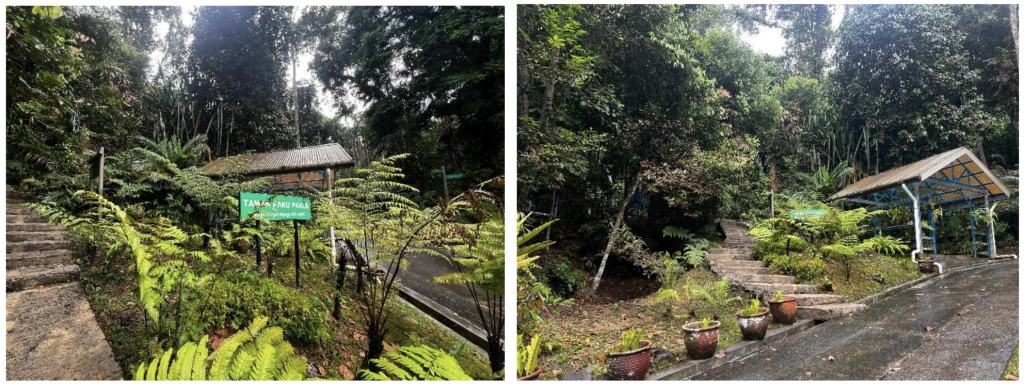
Walking and Jogging Paths
The UKM Stadium offers green spaces that are accessible to the public, particularly for activities like jogging. The surrounding areas of the stadium often provide well-maintained paths and open spaces, perfect for a leisurely walk or a brisk jog.
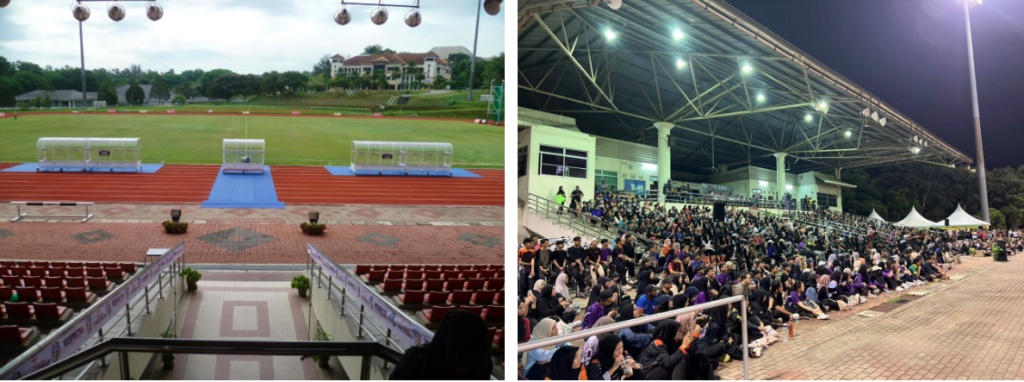
Green space
Bangi Permanent Forest Reserve was gazetted in 1906 and handed over to UKM in 1970 for campus construction. This dipterocarp-type tropical forest was renamed the Universiti Kebangsaan Malaysia Permanent Forest Reserve with an area of 138 hectares. The highest peak is Bukit Rupa, 105 meters above sea level. There are approximately 600 species of flora and 800 species of fauna that can be found in the Bangi Forest Reserve. This species is a botanical study for B.Sc., M.Sc. and Ph.D. level graduates.

UKM contributes to local arts, in terms of the number of annual public performances of university choirs/ theatre groups/ orchestras and etcetera. UKM’s engagement with the arts is demonstrated through its vibrant cultural scene. In 2023, the university hosted over 30 cultural performances, ranging from theatre productions to musical concerts and traditional dance showcases. These events highlight UKM’s ongoing dedication to promoting local arts and creating opportunities for the public to experience Malaysia’s rich cultural traditions.
1. KONSERT CITRA SENI UKM
The 2023 CITRA SENI UKM concert, held on 28 and 29 January 2023, showcased the culmination of 35 CITRA courses. This event served as a platform for students to demonstrate their artistic talents and skills. The Citra Seni Gala Concert, the grand finale, was graced by the presence of distinguished guests, including Assoc. Prof. Dr. Suzeren Md. Jamil, Deputy Vice Chancellor of Student and Alumni Affairs and Prof. Dr. Khairul Anwar Mastor, Dean of Citra Studies Center.

2. BENGKEL SENI TEATER UKM
This workshop, held from February 27 to March 1, 2023, was open to all UKM students. It aimed to elevate theatre performance standards at UKM by providing specific training in directing, scenography, and acting.
3. IHYA RAMADHAN
The University Cultural Center, in collaboration with Geng Ngaji Global, will host an Ihya’ Ramadan program on April 6, 2023. The program will include a Yasin Reading Ceremony, ‘Lambuk’ Porridge Distribution, and an Al-Fatihah Recitation Review.
4. PANGGUNG MALAYA POP
The Malaya Pop Theater, held on May 13, 2023, aimed to inspire young people, particularly students, to appreciate local music. The concert featured performances by Hariz Fayahet, Heidi Mouru, and Shahril Nizam, alongside bands like Nadir Music Official, Motherwits, Sekumpulan Orang Gila (SOG), and Masdo.
In addition to the performances, the event included an edutainment component to enhance understanding of improvisation and song composition in Malaysian pop music.
5. PEMANTAPAN BUDAYA: TENAGA PENGAJAR KEBUDAYAAN
The program ” Pemantapan Budaya: Tenaga Pengajar Kebudayaan” is specifically designed to improve the competence and knowledge of teachers who are involved in the field of culture at Universiti Kebangsaan Malaysi, held on 13 May 2023.
6. FESTIVAL UNGKU OMAR (UOFEST) 2023
The Ungku Omar Festival, UOFEST 2023, a vibrant celebration of arts, culture, and community, was a highlight of UKM’s academic year. This annual festival of Ungku Omar College showcased the diverse talents of UKM students, featuring a captivating array of performances, including music, dance, theater, and visual arts. The event that held on 2 – 4 June 2023 also included exciting competitions, engaging workshops, and cultural exhibitions, creating a vibrant and inclusive atmosphere for all attendees. UOFEST 2023 was a testament to UKM’s commitment to fostering creativity, innovation, and a strong sense of community among its students.
7. UKM’S INTER COLLEGE ART FESTIVAL (ICAF) 2023 – TRADITIONAL DANCE
The Inter-College Arts Festival (ICAF) 2023 showcased a vibrant array of traditional dance performances on 3 July 2023. Talented students from various colleges within UKM showcased their skills and passion for preserving cultural heritage through captivating dance routines. The performances highlighted the diversity of Malaysian culture, featuring dances from different ethnic groups and regions.
8. UKM’S INTER COLLEGE ART FESTIVAL (ICAF) 2023 – PENCIL DRAWING
The Inter-College Arts Festival (ICAF) 2023 featured a captivating pencil drawing competition on 5 July 2023. Talented artists from various colleges within UKM showcased their skills by creating stunning pencil drawings that ranged from realistic portraits to abstract art. The competition fostered creativity, technical skill, and an appreciation for the art of drawing among the participants.
9. UKM’S INTER COLLEGE ART FESTIVAL (ICAF) 2023 – VOCAL ENSEMBLE
The Inter-College Arts Festival (ICAF) 2023 featured a captivating Vocal Ensemble program on 6 July 2023. Talented vocalists from various colleges within UKM came together to perform a variety of musical genres, including classical, pop, and traditional Malay music. The performances showcased the vocal prowess and musicality of the participants, creating a harmonious and inspiring atmosphere.
10. UKM’S INTER COLLEGE ART FESTIVAL (ICAF) 2023 – BAND
The Inter-College Arts Festival (ICAF) 2023 featured a dynamic Band program on 7 July 2023. Talented musicians from various colleges within UKM showcased their skills in a variety of genres, including rock, pop, jazz, and traditional Malay music. The performances were energetic, engaging, and showcased the diverse musical talents of the participants.
11. KM’S INTER COLLEGE ART FESTIVAL (ICAF) 2023 – FASHION SHOWCASE
The ICAF – Fashion Show, held on July 8, 2023, was a highly anticipated event that showcased student creativity in fashion design, makeup, and stage performance.
12. UKM’S INTER COLLEGE ART FESTIVAL (ICAF) 2023 – GROOMING
The ICAF – Tatarias, held on July 5, 2023, highlighted the importance of makeup in enhancing stage performances and visual impact.
13. UKM’S INTER COLLEGE ART FESTIVAL (ICAF) 2023 – MONOLOGUE THEATER
The Inter-College Arts Festival (ICAF) 2023 featured a captivating Monologue Theater program on 4 July 2023. Talented actors and actresses from various colleges within UKM showcased their solo performance skills, delivering powerful and emotive performances. The monologues explored a wide range of themes, from personal struggles to societal issues, highlighting the versatility and depth of the participants’ acting abilities.
14. FESTIVAL BORNEO (KAAMATAN X GAWAI)
The Borneo Festival, held on June 10-11, 2023, celebrated the rich cultural heritage of Borneo’s indigenous communities. The festival showcased a diverse range of traditions, customs, and arts, including sales booths, Mr. & Ms. Borneo competitions, and captivating performances of singing and dancing.
15. THEATRE FESTIVAL – RAHIM KAJAI (KRK) & IBRAHIM YAACOB (KIY) RESIDENTIAL COLLEGE
The UKM Theater Festival, formerly known as the UKM Theater Town (PTUKM), is an annual event organized by the Cultural Center and Jungle Theater Club (KTR), ARTISUKMA UKM. Starting in 2014, PTUKM is fully organized by KTR under the name UKM Theater Festival. In 2023, the University Cultural Center returns to lead this competition in collaboration with KTR to improve program and competition management. UKM Theater Festival 2023 is now rebranded to PROSENIUM (UKM Theater Festival). This program is organized with the main purpose of unearthing and celebrating theater arts talents among UKM students. Throughout its organizing period, the UKM Theater Festival has successfully gathered many activists and fans of theater art from inside and outside UKM. On 19 June 2023, two colleges present their theater with according to assigned theme for Kolej Rahim Kajai was “Rahsia Kolej Melur” (3 pm) and Kolej Ibrahim Yaakub was “Rumah Sewa” (8.30 pm).
16. THEATRE FESTIVAL – AMINUDDIN BAKI (KAB) & TUN HUSSEIN ONN (KTHO) RESIDENTIAL COLLEGE
This program is organized with the main purpose of unearthing and celebrating theater arts talents among UKM students. Throughout its organizing period, the UKM Theater Festival has successfully gathered many activists and fans of theater art from inside and outside UKM. On 20 June 2023, two colleges present their theater with according to assigned theme for Kolej Aminuddin Baki “Terpinggir” (3 pm) and Kolej Tun Hussein Onn “Hidup” (8.30 pm)
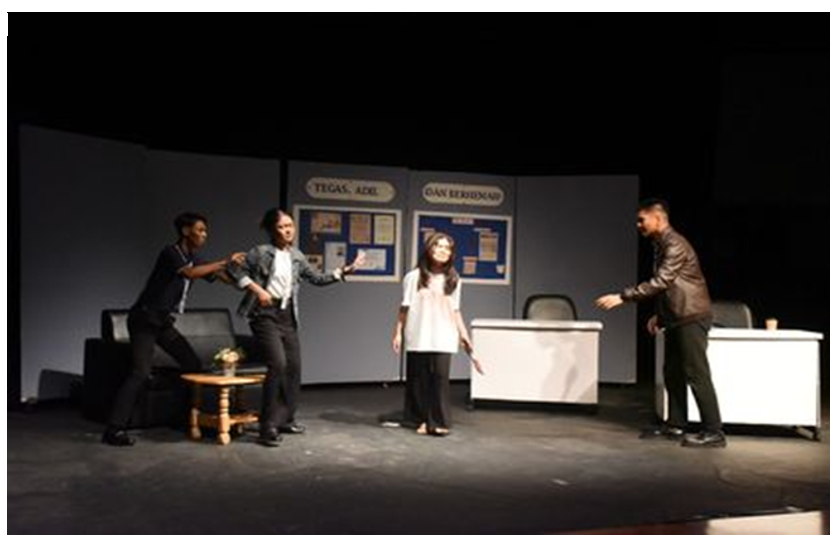
17. THEATRE FESTIVAL – DATO ONN (KDO) & UNGKU OMAR (KUO) RESIDENTIAL COLLEG
This program is organized with the main purpose of unearthing and celebrating theater arts talents among UKM students. Throughout its organizing period, the UKM Theater Festival has successfully gathered many activists and fans of theater art from inside and outside UKM. The arrangement program on 21 June 2023, two colleges present their theater with the assigned theme for Kolej Dato Onn “Sasau” 3 pm and Kolej Ungku Omar “Duri” 8.30 pm.
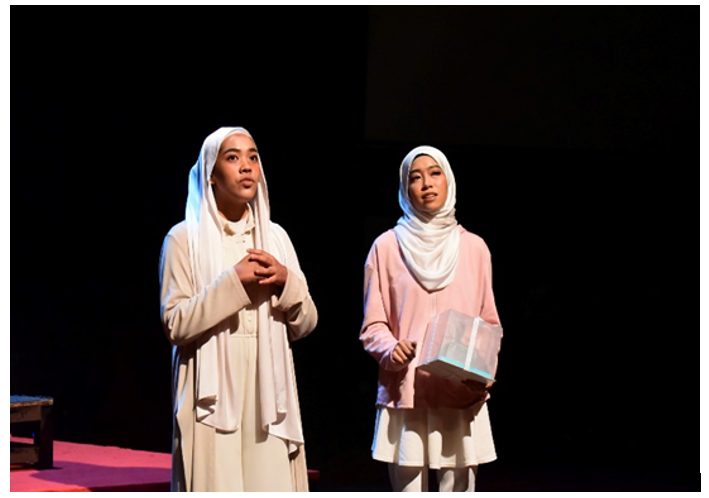
18. THEATRE FESTIVAL- PENDETA ZA’AB (KPZ) & BURHANUDDIN HELMI (KBH) RESIDENTIAL COLLEGE
This program is organized with the main purpose of unearthing and celebrating theater arts talents among UKM students. Throughout its organizing period, the UKM Theater Festival has successfully gathered many activists and fans of theater art from inside and outside UKM. The arrangement program on 22 June 2023, two colleges present their theater with according to assigned theme for Kolej Pendeta Za’ba “Tunding Jari” 3 pm and Kolej Burhanuddin Helmi “Di Balik Kata” 8.30 pm
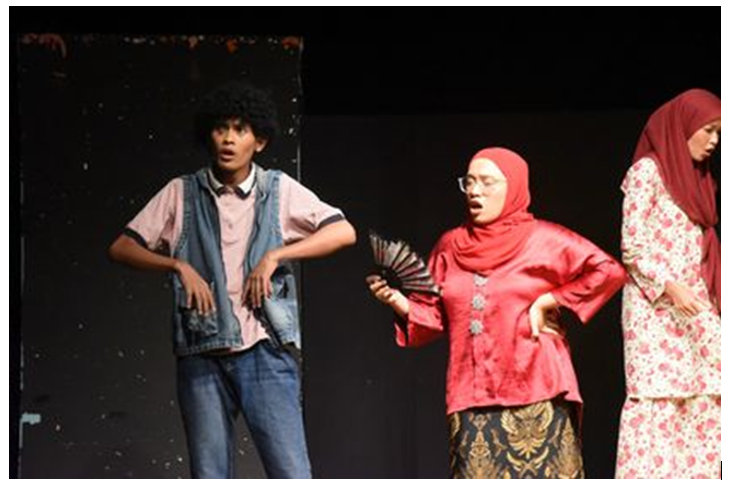
19. THEATRE FESTIVAL- KERIS MAS (KKM) & TUN SYED NASIR (KTSN) RESIDENTIAL COLLEGE
This program is organized with the main purpose of unearthing and celebrating theater arts talents among UKM students. Throughout its organizing period, the UKM Theater Festival has successfully gathered many activists and fans of theater art from inside and outside UKM. The arrangement program on 23 June 2023, two colleges present their theater with according to assigned theme for Keris Mas “Gadai” 3 pm and Kolej Tun Syes Nasir “Titian Berdarah Ku Junjung” 8.30 pm
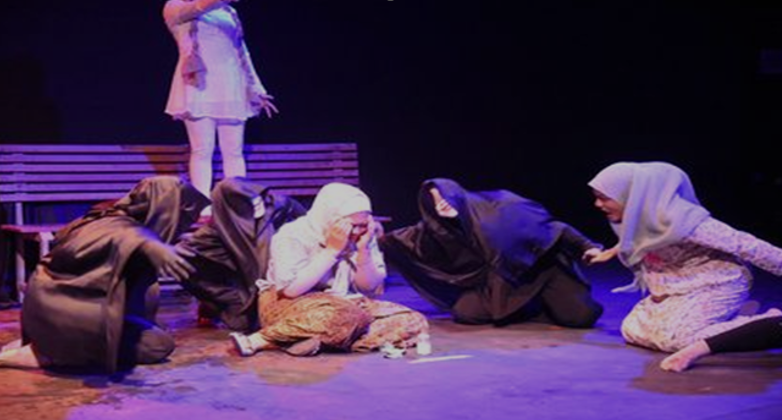
20. UKM 2023 THE STAR NIGHT
UKM 2023 The Star Night , held on August 19, 2023, was a dazzling celebration of talent, creativity, and university spirit. This annual event showcased the diverse talents of UKM students, featuring a captivating array of performances, including music, dance, and theatre. The night was filled with electrifying performances, stunning visuals, and a festive atmosphere that brought the entire UKM community together. Star Night 2023 was a testament to the vibrant and dynamic culture of UKM, leaving a lasting impression on all who attended.
21. THE NATIONAL INTANGIBLE CULTURAL HERITAGE CONFERENCE 2023
The National Intangible Cultural Heritage Conference 2023 or Persidangan Kebangsaan Warisan Kebudayaan Tidak Ketara 2023, held at UKM on 11 – 13 September, brought together experts to discuss and develop strategies for preserving intangible cultural heritage. The conference aimed to strengthen Malaysia’s commitment to safeguarding its rich cultural heritage, particularly considering its recent success in securing a seat on the UNESCO Intergovernmental Committee for the Safeguarding of the Intangible Cultural Heritage. The event emphasised the importance of collaborative efforts between government agencies, academic institutions, and communities to ensure the sustainability of intangible cultural heritage for future generations.
22. THE UKM INDEPENDENCE DAY 2023
The UKM Independence Day Concert 2023 was a vibrant celebration of Malaysia’s independence was held on 30 August 2023 at Dataran Panggung Seni, showcasing the talents and patriotism of the university’s students and staff. The event featured a diverse range of performances, including traditional dances, modern music, and theatrical acts. The concert was a platform for students to express their creativity and love for their country through art and culture. The festive atmosphere, coupled with patriotic songs and performances, made the event a memorable experience for all who attended.
23. FESTIVAL OF COLORS OF THE WORLD 2023 (FESCO 2023)
The Festival of Colors of the World 2023 was a vibrant celebration of cultural diversity and artistic expression. Held at UKM on 22 July 2023, the festival showcased a mesmerising display of traditional dance performances from various countries, including Malaysia, India, and Indonesia. Participants from different age groups, from primary school students to university students, showcased their talents and passion for dance. The event was a visual spectacle, with colourful costumes, energetic performances, and a festive atmosphere that captivated the audience.
24. WATAN APPRECIATION WEEK 2023
In conjunction with the closing of Watan Appreciation Week 2023, UKM’s new students showcased their talents through various cultural performances, including skits, singing, dancing, dikir barat, boria, and musical instrument performances at the Mara Watan ke Puncak Menara Program on 4 October 2023.
Held at DECTAR UKM, the program also featured a performance by the university leadership, who sang two songs: “Polaroid” and “Kau Ilhamku.” UKM’s Vice Chancellor, Prof. Dato’ Gs Ts Dr Mohd Ekhwan Hj Toriman, made a special appearance at the end of the program to perform a patriotic song titled “Warisan.” The Mara Watan ke Puncak Menara program is the highlight of Watan Appreciation Week for the 2023/2024 academic session.
The event was also attended by Dato’ Dr. Mohd Zaidi Md Zain @ Zakaria, a member of the University’s Board of Directors; Deputy Vice-Chancellors, Dato’ Registrars, Chief Librarians, Pro-Vice-Chancellors of UKM; and Deans and Center Directors.
25. THE DANCE FESTIVAL UKM 2023
The Dance Festival UKM 2023, or Festival Tari UKM 2023 (FesTA23), was a vibrant celebration of dance and culture. Held at UKM, the festival showcased a diverse range of dance performances from various institutions, including schools, colleges, and universities.
The festival aimed to promote and preserve traditional and contemporary dance forms. It provided a platform for talented dancers to showcase their skills and creativity. The event featured a variety of dance styles, such as traditional Malay dance, contemporary dance, and international dance forms. The Dance Festival UKM 2023 was a memorable event that brought together dance enthusiasts and performers from all over Malaysia.
26. FESTIVAL SENI SUARA ALUNAN MELODI 2023
Festival Seni Suara Alunan Melodi 2023 was an annual event organized by UKM, designed to provide a platform for participants to showcase their vocal talents. Held on November 11, 2023, at the Art Theatre, UKM, the festival attracted talented young singers from various levels, including schools and universities.
In addition to the competitions, the festival offered scientific sharing sessions by music experts. The event was further enlivened by diverse groups and individual music performances. The closing night featured performances by guest singers Azizul Haqiem and Elda Susanti, followed by the announcement of winners and award ceremony.
27. OKESTRA TRADISIONAL MALAYSIA (OTM)
Istana Budaya collaborated with the Cultural Center of Universiti Kebangsaan Malaysia (UKM) as a strategic partner to ensure the success of the Gegar Kembara Musik Tradisional on October 14, 2023. Over 2,000 people gathered at DECTAR (Tun Abdul Razak Chancellor’s Hall), UKM, to celebrate this extraordinary traditional music festival. The event featured renowned guest artists such as Putra Muhammad, Nadeera, and Shiha Zikir. Additionally, UKM alumni Hariz Fayahet and Syafiqah Khambali also graced the stage with their performances.
The festival provided a platform for talented UKM students, including Vokalisukma UKM, Aadyamatra UKM, Tunas Warisan UKM, Gamelan Gita Sahmura UKM, Caklempong Gemersik Watan UKM, and the Chinese Traditional Music Group UKM, to share the stage with established artists. The event was attended by Encik Mohd Yusri Mohd Yusoff, Deputy Secretary General (Culture), Ministry of Tourism, Arts and Culture; Prof. Emeritus Dato’ Dr. Mohamad Abd. Razak, Chairman of the University Board of Directors; and Assoc. Prof. Dr. Suzeren Md. Jamil, Deputy Vice Chancellor of Student and Alumni Affairs.
https://www.facebook.com/share/p/hxsLAT5Q2e97hcvY
28. UKM 51 CONVOCATION FESTIVAL
The UKM Convocation Festival 2023 (Karnival Konvokesyen UKM-51) was a multifaceted event was held on 23 – 30 November 2023, marked by academic achievements and vibrant cultural celebrations. The festival featured the main convocation ceremony honoring thousands of graduates, along with a lively carnival organized entirely by UKM students. The carnival showcased various activities, including food stalls, performances, and exhibitions, creating a festive atmosphere for graduates and their families. This student-led initiative reflected UKM’s commitment to empowering students and fostering a sense of community.
29. PERKAMPUNGAN BUDAYA PUSAT KEBUDAYAAN UKM
Cultural Village coordinated by the University Cultural Center, UKM, which took place on 3 October 2023, Tuesday, in conjunction with the Universiti Kebangsaan Malaysia Territory Appreciation Week Session 2023/2024.
Source: https://www.facebook.com/media/set/?set=a.800567368745663&type=3

30. MAJLIS PERASMIAN PENUTUPAN BULAN KEBANGSAAN & HARI MALAYSIA 2023
The @aadyamatra Dance Club of Universiti Kebangsaan Malaysia is invited to grace the Closing Ceremony of National Month & Malaysia Day 2023 organized by the Ministry of Higher Education. The ceremony was attended by YBHG. The Deputy Minister of the Ministry of Higher Education was held at the Zaaba Hall, Ministry of Higher Education.
Source: https://www.facebook.com/media/set/?set=a.763612745774459&type=3

31. MAJLIS PERASMIAN ARENA SUKAN AZMAN HASHIM
The Opening Ceremony of the Azman Hashim Sports Arena was graced with a dance performed by the @aadyamatra dance club. In addition, the UKM Cultural Center’s Music Cultural Artist also graced the ceremony with 10 songs accompanied by students from the Vokalisukma Club, namely Jibril. The ceremony was attended by UKM Vice Chancellor, YBhg. Prof. Dato’ Mr. Ts. Dr. Mohd Ekhwan Hj. Toriman, together with the UKM Board of Directors Chairman, Prof. Emeritus Dato’ Dr. Mohamad Abd. Razak, who accompanied Tan Sri Azman Hashim as Trustee of Azman Hashim, as well as the Chairman of Amcorp Group, who officiated the ceremony at Arena Azman Hashim, UKM.
Source: https://www.facebook.com/pusatkebudayaanukm

32. MAJLIS SANJUNGAN BUDI LAMBAIAN KASIH
The UKM Cultural Center is involved in the performance invitation for the LAMBAIAN KASIH VIRTUE CELEBRATION CEREMONY. This event is organized by the Malaysian Ministry of Higher Education and is located at HOTEL TENERA BANGI
Source: https://www.facebook.com/photo/?fbid=651432190325849&set=pcb.651436066992128

The record and preservation of cultural heritage at Universiti Kebangsaan Malaysia (UKM) encompass a range of unique collections and artifacts that highlight the historical, intellectual, and cultural richness of Malaysia. Notable among these are the Schacht Collection, an extensive library resource containing rare and valuable materials on Islamic studies; The Galeri Litograf, Karikatur & Manuskrip, showcasing lithographs, caricatures, and manuscripts that provide insights into the social and cultural landscape of Malaysia through historical visual records; and the Tun Ahmad Sarji Collection, which features materials donated by the former Pro-Chancellor, covering subjects from civil service to arts and heritage. Additionally, the earliest Malay manuscripts and distinctive local dialects, such as the Segamat dialect, represent Malaysia’s linguistic and historical diversity. These initiatives, collections, and exhibitions demonstrate UKM’s commitment to preserving Malaysia’s cultural heritage, ensuring its accessibility to future generations and promoting research that deepens our understanding of Malay civilization.
National Cultural Heritage
1. The Schacht Collection
Schacht Collection is the first conscious attempt by the UKM library to set up a special collection. This sizable collection consists of a diverse and extensive range of materials. Its strength is not only its size, but more importantly the rare materials, books with fine binding and first editions of famous works. These materials are valuable to researchers on hadith, Qur’an, Islamic law, Sufism, history and civilization and biography-related studies of Islam. It is important to note that good care of these materials cannot be taken for granted. Library staff and readers need constant reminders of the importance of careful handling, proper storage and cleanliness so that these materials could be preserved as far as possible in their original formats for posterity.
Source: https://journalarticle.ukm.my/4151
Source: https://ptsldigital.ukm.my/jspui/handle/123456789/388891

2. The earliest manuscripts of the Malay world
The earliest manuscripts of the Malay world refer to written texts or documents produced during the early development of Malay civilization. These manuscripts were typically written in Jawi script or other ancient scripts, such as Pallava and Kawi, which originated from Indian cultural influences before evolving into local writing forms. These manuscripts play a crucial role in the history, literature, religion, law, and culture of Malay and broader Southeast Asian societies. The earliest Malay manuscripts are now preserved in Muzium Warisan Akademik UKM. This effort is essential to ensure that this heritage endures and remains accessible to future generations.

Local Cultural Heritage
1. First Student Magazine: SEMESTA
The first student magazine at Universiti Kebangsaan Malaysia (UKM) was SEMESTA, published in 1971 by the First Residential College at UKM. The initial editorial team was led by Chamhuri Siwar. SEMESTA served as a platform for students to voice their opinions, share ideas, and showcase their creative works. It also acted as a medium for disseminating information about campus activities, current issues, and academic developments at UKM. This publication reflects the intellectual and cultural spirit of students during that era and has become an important part of the history of campus publications in Malaysia.

2. Tun Ahmad Sarji Collection
This collection consists of material donated by The Most Honorable Tun Ahmad Sarji Abdul Hamid, Pro-Chancellor of UKM and also Former Chief Secretary to the Government of Malaysia in 1990-1996. His collection consists of various subjects such as civil service, corporate administration, art and heritage, religion, humanities and sport. This collection can be used for reference only and placed at Anjung Pro-Canselor Tun Ahmad Sarji, level 4, main library.
Source: https://www.ukm.my/ptsl/?page_id=789&lang=ms#
Source: https://www.facebook.com/media/set/?set=a.1622004711189613.1073742330.366371043419659&type=3&_rdr

Heritage of Displaced Communities
1. The Galeri Litograf, Karikatur & Manuskrip
The Galeri Litograf, Karikatur & Manuskrip at Universiti Kebangsaan Malaysia (UKM) is a unique gallery within the Faculty of Social Sciences and Humanities (FSSK), showcasing an exceptional collection of lithographs, caricatures, and manuscripts. These items, which are not cataloged by other research institutions, provide invaluable insights into Malaysian heritage and history. The lithographs include works by colonial artists invited by the Portuguese, British, and French governments, depicting significant cultural events, society, and the unique flora and fauna of Peninsular Malaysia. The caricatures, drawn by local artists and originally published in newspapers and magazines, reflect political, economic, and social themes from the 1930s through the Malaya era and up to the formation of Malaysia. The manuscript collection includes Malay and Bugis texts, featuring an 18th-century diary from the Sultan of Bone, which documents the daily lives of the Bugis community and their trade relationships with regions like southern Johor and Sulawesi. The gallery is located on the 4th floor of Block A in the Faculty of Social Sciences and Humanities at UKM’s Bangi campus in Selangor, Malaysia.
Sources: https://www.ukm.my/sphea/mengenai-kami/kemudahan-2/galeri-litograf-karikatur-manuskrip/

2. The Segamat Dialect
The Segamat dialect is a unique variant of the Malay language spoken in the Segamat district of Johor. This dialect has distinctive features that set it apart from standard Malay and other dialects in Malaysia. In terms of phonology, the Segamat dialect shows variations in vowel and consonant pronunciation compared to standard Malay. For example, the vowel ‘a’ at the end of words often changes to ‘o,’ as in “saya” becoming “sayo.” Lexically, it includes unique vocabulary not found in other dialects, such as the word “ghok,” which means “to sleep.” Morphologically, the dialect has distinct prefixes and suffixes; for instance, the prefix ‘me-‘ in standard Malay may be replaced with ‘nge-,’ as in “membaca” becoming “ngebaco.” Syntactically, variations in word order and sentence structure give the dialect its unique identity.
The Segamat dialect has special cultural significance. It reflects the cultural identity of the Segamat community and serves as a symbol of local pride. As part of Malaysia’s linguistic heritage, it contributes to the country’s linguistic diversity and is important for preservation and study. The dialect is also influenced by Segamat’s geographical proximity to Negeri Sembilan and Melaka, which has led to a unique blend of linguistic elements from these regions. For further information on the Segamat dialect and its distinctive features, refer to an article by Ungku Mohd Zaman Tahir in the book “Segamat: Sejarah & Mitosnya (Bahagian 2),” published in 2001. A copy of this article is available at the Library of the Institute of the Malay World and Civilization (ATMA) at Universiti Kebangsaan Malaysia, with the call number 7845.
Sources: https://malaycivilization.com.my/omeka/items/show/215102
UKM actively measures and sets ambitious targets for sustainable commuting, focusing on reducing reliance on carbon-intensive vehicles. The university provides an array of eco-friendly commuting options, including dedicated pedestrian and cycling paths, shuttle buses, and electric vehicle (EV) charging stations. These facilities are designed not only for the broader community but also for individuals with disabilities, ensuring inclusiveness in sustainable commuting. This strategy directly tackles carbon emissions, aligns with Malaysia’s national climate targets, and reinforces UKM’s role as a sustainability leader in higher education.
Target a Low-Carbon Campus
UKM has implemented several sustainable commuting initiatives as part of its Low Carbon Campus 2030 Plan. The goal is to reduce on-campus carbon emissions and achieve net-zero emissions by 2050. UKM aims to increase sustainable commuting across the campus to 70% by 2030. To achieve this target, UKM has made significant progress. In 2022, 20% of campus commuters adopted sustainable transportation. This figure increased to 30% in 2023 and is projected to reach 40% in 2024.
| 2022 | 2023 | 2024 | 2030 (campus low carbon) | |
| Target of sustainable communing in campus. | 20% | 30% | 40% | 70% |
Initiatives toward Campus Low Carbon
UKM supports sustainable commuting from 2022 including electric bicycles, with 130 units available across 30 bike stations and e-scooters, with 250 units accessible to students and staff. These zero-emission transportation methods aim to reduce reliance on personal vehicles, contributing to a greener campus.
Furthermore, UKM offers 19 shuttle buses that connect various campus locations to nearby transport hubs, like the UKM Komuter station, which aids in reducing single-occupancy vehicle traffic. The campus also supports pedestrian-friendly facilities with designated pathways and zebra crossings, enhancing safe and convenient walking routes. UKM’s commitment to carbon neutrality by 2050 is further solidified through additional sustainable efforts such as solar energy projects and hydrogen vehicle initiatives, in collaboration with industry partners like Petronas. In 2024, UKM furthered its commitment to sustainability by introducing a new electric shuttle bus.
These ongoing strategies underscore UKM’s commitment to environmental sustainability, aiming to reduce carbon emissions by 70% by 2030 through sustainable commuting options, infrastructure upgrades, and industry partnerships.
Source: https://drive.google.com/file/d/1N129Vsmpr95LHU-M8YhNPwNzFIfbv3e-/view




UKM goes beyond infrastructure by fostering a culture of sustainability among its students and staff besides driving to support the target of 70% sustainable commuting by 2030. The university promotes carpooling, encourages cycling, and supports walking as a primary commuting mode through awareness campaigns and institutional incentives. These efforts shift behavior toward more sustainable choices, positioning UKM as a trailblazer in reshaping campus commuting practices. UKM’s sustainable commuting initiatives directly challenge the vehicle-centric culture that plagues many urban areas, showcasing how universities can lead societal transformation.
UKM is Accessible via Public Transportation
There are various modes of public transportation such as buses and trains, available for both UKM staff and students. MRT Kajang and UKM Komuter station are the nearby train stations situated close to the campus area which can be reached via the RapidKL public bus. In addition, the students have established a ride-sharing Telegram group where students communicate about their transportation needs within as well as outbound the campus area.
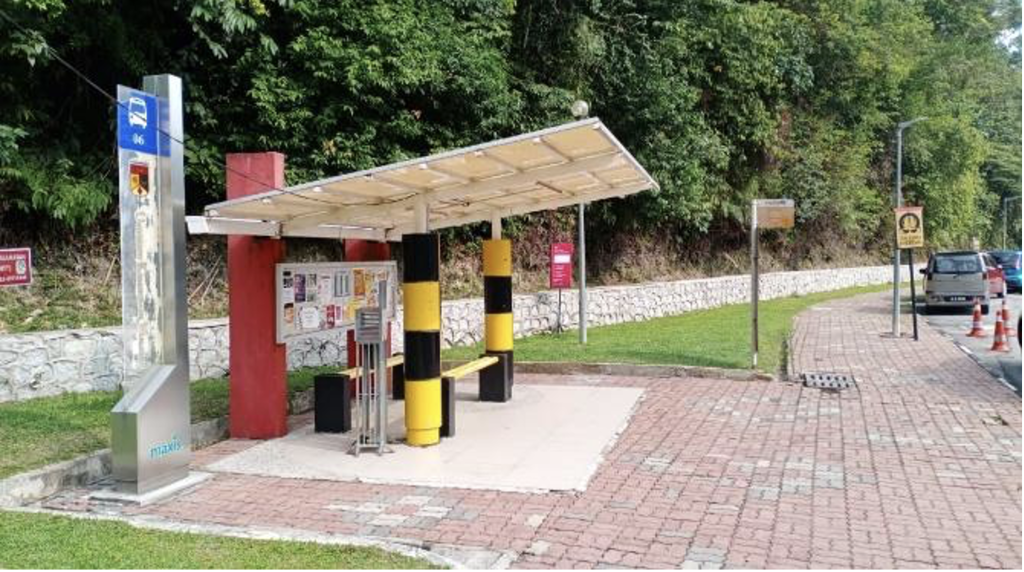
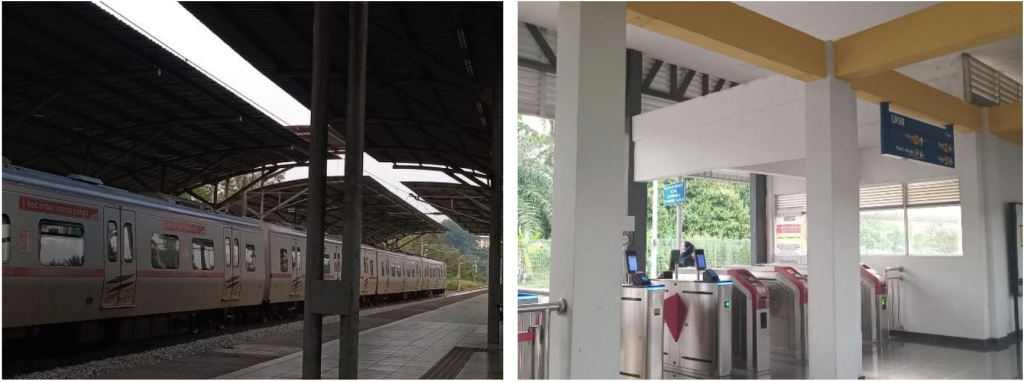
Encouragement of Walking Within the Campus Area
Since 2011, UKM has encouraged their community to practice walking around the campus area to reduce the use of private vehicles within the campus area as well as maintain a healthy lifestyle. In addition, the UKM Strategy Center (Strategy UKM) has developed a mobile application, Sustain Your Step which tracks the number of walking steps among UKM staff members in 2023.

Carbon Emission Fee (Vehicle Sticker)
UKM implements a carbon emission fee for fossil fuel vehicles by setting high fees for vehicle stickers and limiting their availability, aiming to reduce private car usage on campus. In 2022, UKM developed the Universiti Kebangsaan Malaysia Regulations (TRAFFIC) 2022, which clearly outlines the guidelines regarding traffic at UKM. The regulation explicitly restricts first-year students from bringing vehicles to campus, allowing limited exceptions only for those with valid, essential needs. Additionally, sticker fees increase progressively for staff and students with multiple vehicles, reinforcing UKM’s commitment to sustainability and carbon emission reduction.
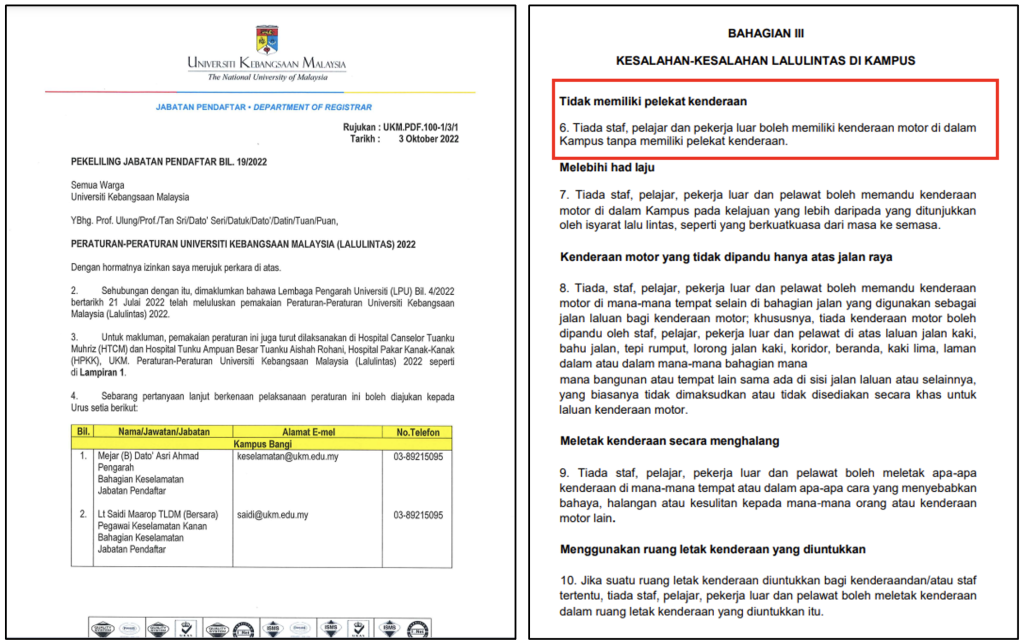
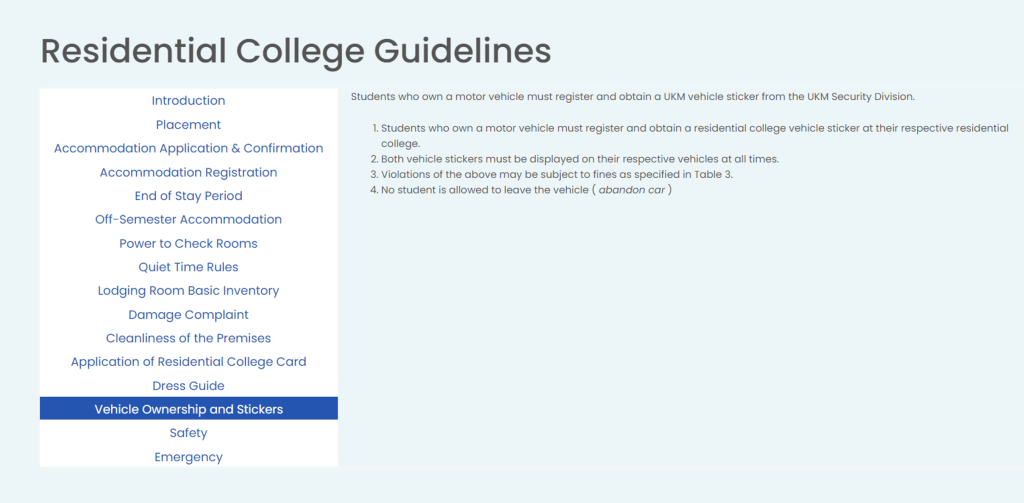
Prohibition on First Year Students on bringing personal vehicles.
From March 2012 until 2023, UKM’s Security Division has been enforcing the Universiti Kebangsaan Malaysia Regulations (TRAFFIC) 2022 in which the university prohibits first year students from bringing their vehicles to campus. Accordingly, the relevant students would be given time to send their vehicles back to their hometown.
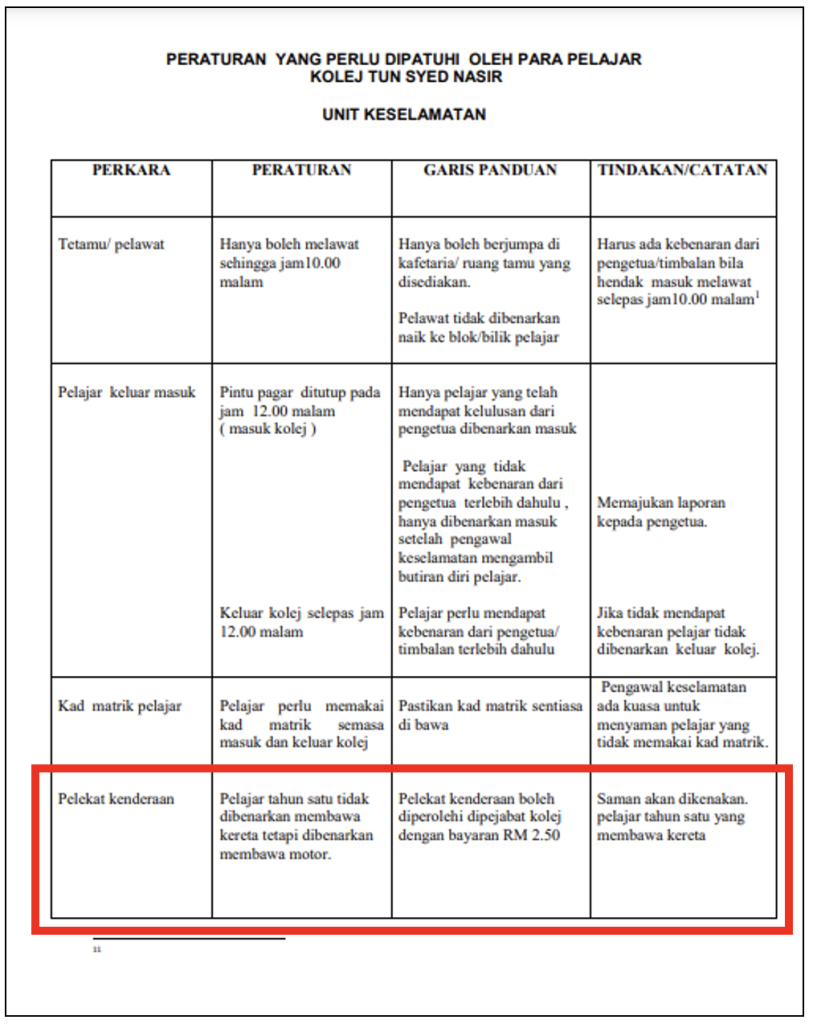
Ride Bicycles services for Students
UKM has strict rules on students driving on campus. Because of that, UKM offers a “Ride Bicycle” initiative to encourage sustainable transportation among students, providing a convenient and eco-friendly alternative to motorized vehicles on campus. This program aims to reduce carbon emissions, promote physical activity and alleviate traffic congestion within the university. Bicycles are strategically placed across the campus, allowing students to easily access them for short commutes between facilities. This initiative aligns with UKM’s commitment to sustainability and contributes to creating a greener campus environment.
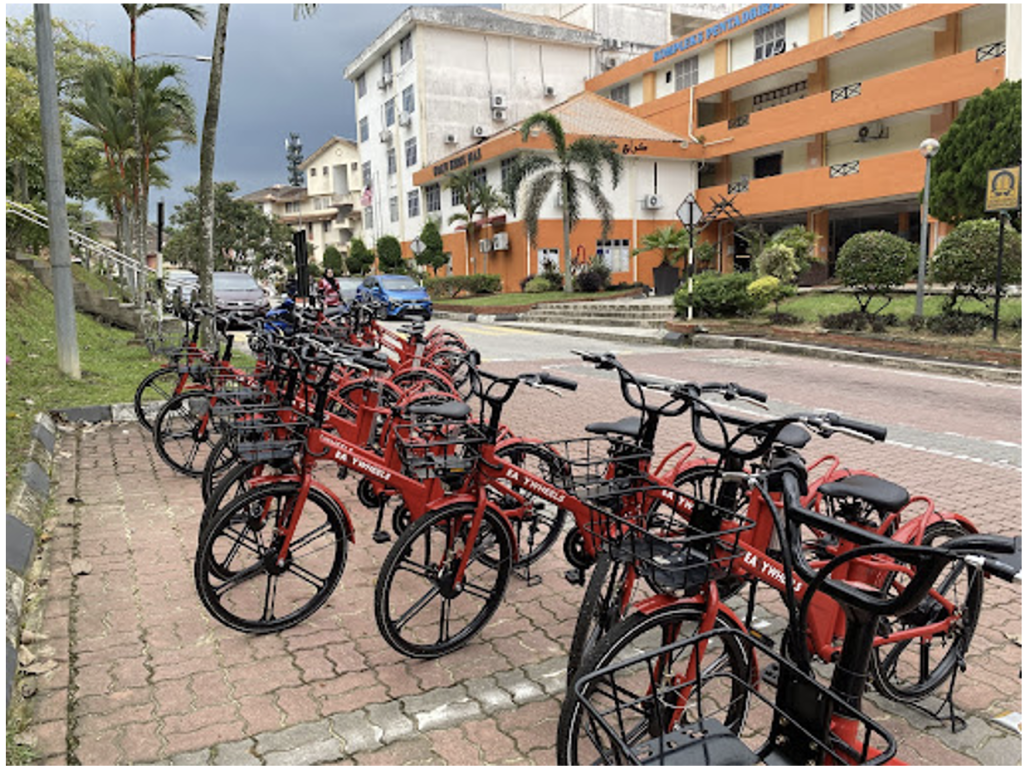
Park and Ride Service
As part of the UKM Bangi Campus Physical Development Master Plan 2007-2020, a Park and Ride service has been in operation since July 1, 2009. This initiative is designed to reduce and limit the parking footprint within the campus by encouraging staff, students, and visitors to park in designated areas outside the main campus and use shuttle services for convenient access to campus facilities.
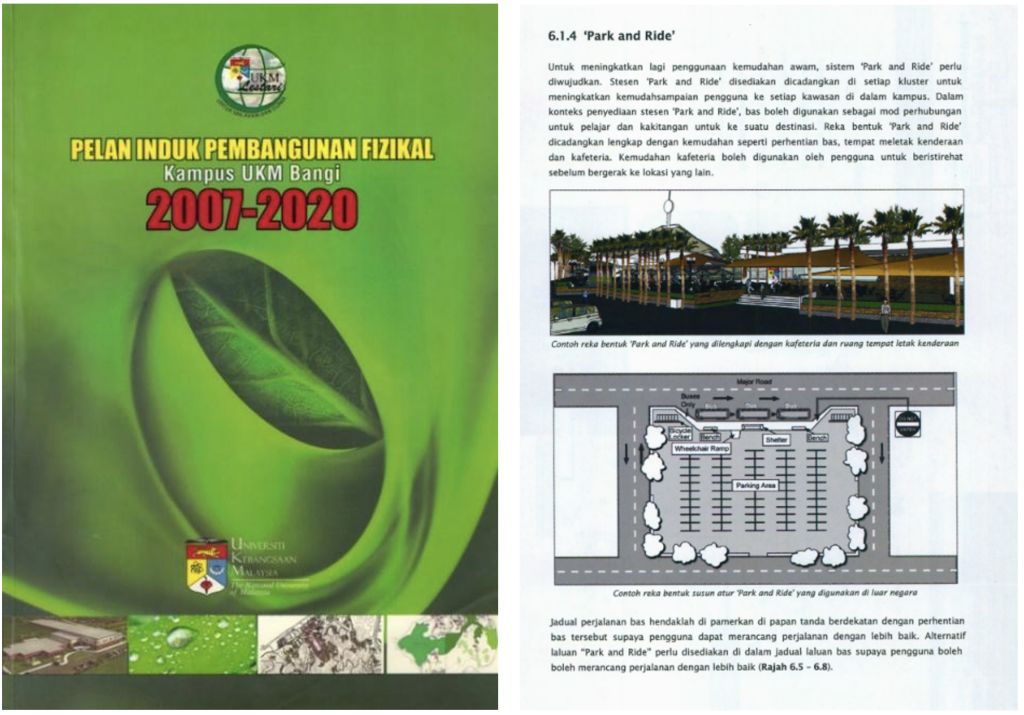
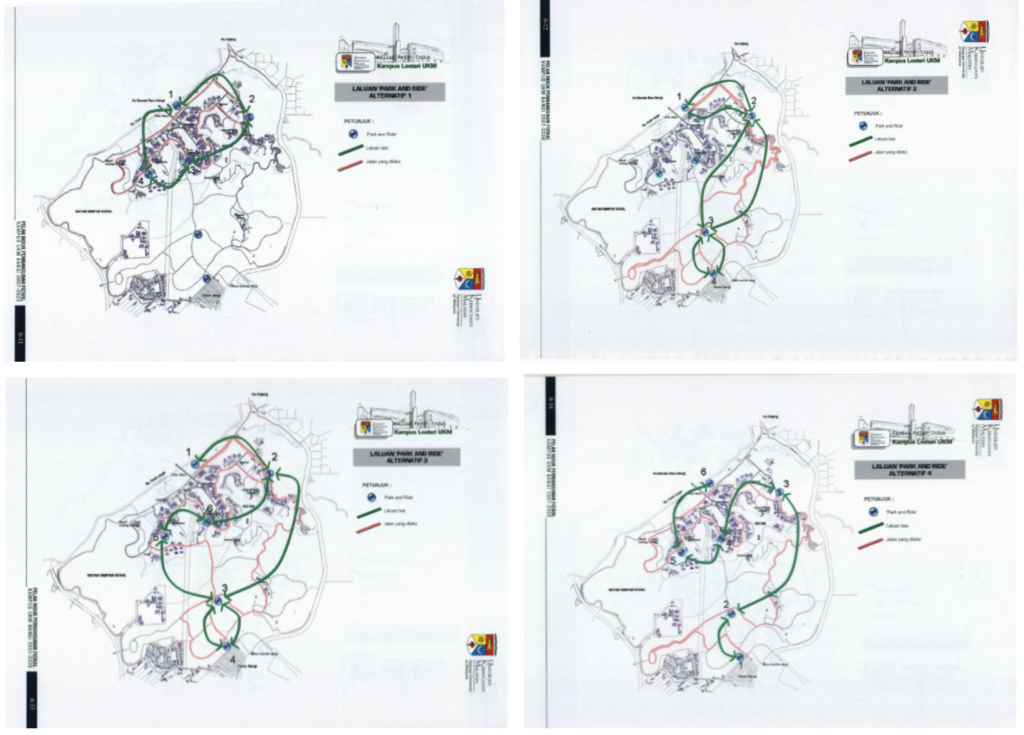
UKM provides several affordable housing options for its employees, ensuring access to comfortable living spaces close to campus. The Bukit Puteri Housing and Principal’s House are two notable examples of the residential facilities offered to those eligible to occupy the house based on their positions. These houses are strategically located to minimize commuting time and enhance the well-being of staff, contributing to both financial and environmental sustainability. UKM also evaluates the affordability of its housing offerings and provides direct financial support when necessary, ensuring that all employees, regardless of their financial background, can access safe and affordable accommodation.
Rental House Facilities near Campus for Employees
Universiti Kebangsaan Malaysia (UKM) offers a range of affordable rental housing options near campus for its employees, demonstrating a strong commitment to employee well-being and sustainable living. With rental rates below market prices, these housing facilities—located in areas such as Pangsapuri UKM Seksyen 1, Pangsapuri Laman Midah Cheras, Rumah Teres Jalan 6, and Pangsapuri UKM Blok 6—make it easier for staff to live close to work, reducing the need for long commutes and supporting a healthier work-life balance. By providing these cost-effective and convenient housing solutions, UKM not only alleviates the financial burden on its staff but also actively reduces the environmental impact of commuting. This initiative underscores UKM’s holistic approach to sustainability, promoting a cohesive and supportive community that values accessibility, employee welfare, and eco-friendly practices in everyday life.

Housing Loan
Universiti Kebangsaan Malaysia (UKM) empowers its employees to achieve homeownership through housing loan eligibility with the Public Sector Home Financing Board (LPPSA). By facilitating access to affordable financing options, UKM helps staff build long-term stability and invest in their future. This support goes beyond immediate financial aid; it strengthens community ties and encourages employees to establish roots near campus, which reduces commute times and enhances work-life balance. UKM’s commitment to staff well-being and financial empowerment aligns with its sustainability goals, fostering a stable, thriving campus community that champions environmental stewardship and sustainable living. This initiative highlights UKM’s dedication to supporting its workforce and advancing holistic sustainability through employee-centered policies.
Source: https://myfinancing.lppsa.gov.my/my/faq2
On Campus Housing
UKM provides convenient, on-campus housing options through Bukit Puteri residential and dedicated housing for Principal Fellows of Residential Colleges. Situated within the campus, Perumahan Bukit Puteri allows eligible staff to live closer to their workplace, reducing commuting time and promoting a balanced, sustainable lifestyle. Housing within residential colleges enables Principal Fellows to actively engage with the student community while residing on campus, fostering a strong sense of connection and support. By offering on-campus housing, UKM demonstrates its commitment to sustainability, employee well-being, and community integration. This initiative not only reduces the environmental footprint associated with commuting but also cultivates a vibrant, inclusive campus environment that supports both professional and personal growth.
Source: https://www.ukm.my/pkk/wp-content/uploads/HIT/96

UKM is committed to providing affordable and inclusive housing options for its students. The university offers a range of accommodation choices, including on-campus residential colleges like Dato’ Onn College, Ungku Omar College, and Aminuddin Baki College. These colleges provide well-maintained facilities at affordable rates, fostering a conducive learning environment. For students who prefer off-campus housing, UKM offers guidance and support in finding suitable accommodations near the campus. Special deals, such as first-month free rentals or discounted rates, are available to help students find affordable housing options. UKM provides financial assistance through the Waqf and Endowment Room Programme to further support students from low-income backgrounds. In 2023, 42 students received full scholarships for residential college fees, ensuring that financial constraints do not hinder their academic journey. These residential options create an environment where students can focus on their studies without the burden of high living costs.
Source: https://www.ukm.my/perumahan/
Affordable Residential College
UKM’s residential colleges, such as Dato’ Onn College, Ungku Omar College, and Aminuddin Baki College, offer affordable and comfortable on-campus housing options for students. These colleges provide a conducive learning environment, fostering academic success and personal growth. By providing affordable housing, UKM supports SDG 11, Sustainable Cities and Communities, by ensuring accessible and affordable housing for students, contributing to their overall well-being and academic achievement.


Affordable Housing Facilities Off-Campus
For students who prefer off-campus housing, UKM offers guidance and support in finding suitable and affordable options. By providing accessible and affordable housing, UKM contributes to SDG 11, Sustainable Cities and Communities, ensuring that students have a stable and supportive living environment conducive to their academic pursuits.


Residential College Sponsorship to Low-Income Student
UKM provides financial assistance to low-income students who require housing support, ensuring a stable living environment that promotes academic success. In 2023, 42 students (RM47,040) in need received full sponsorship for residential colleges through the Waqf and Endowment Room Programme. This initiative plays a vital role in alleviating the financial burden associated with accommodation costs.

UKM prioritizes pedestrian safety and well-being by implementing pedestrian-friendly initiatives. By creating a safe and accessible campus environment, UKM contributes to SDG 11, Sustainable Cities and Communities. The university has designated pedestrian-only zones, installed clear signage, and implemented traffic calming measures to encourage walking and cycling. These initiatives promote a healthier lifestyle, reduce carbon emissions, and create a more pleasant campus experience for students, staff and visitors.



Zebra Crossing
UKM has strategically installed zebra crossings throughout campus to prioritize pedestrian safety and facilitate smooth movement between frequently accessed areas. These crossings are positioned in high-traffic zones, including entrances to main buildings, parking areas and popular pedestrian pathways. By clearly marking these crossings, UKM ensures that vehicles slow down and give right of way to pedestrians, minimizing the risk of accidents and promoting a safer, more pedestrian-friendly environment. Additionally, these crossings contribute to a cohesive campus infrastructure that aligns with UKM’s commitment to sustainable, accessible and safe transportation practices, encouraging more students and staff to opt for walking as a primary means of transit across campus.
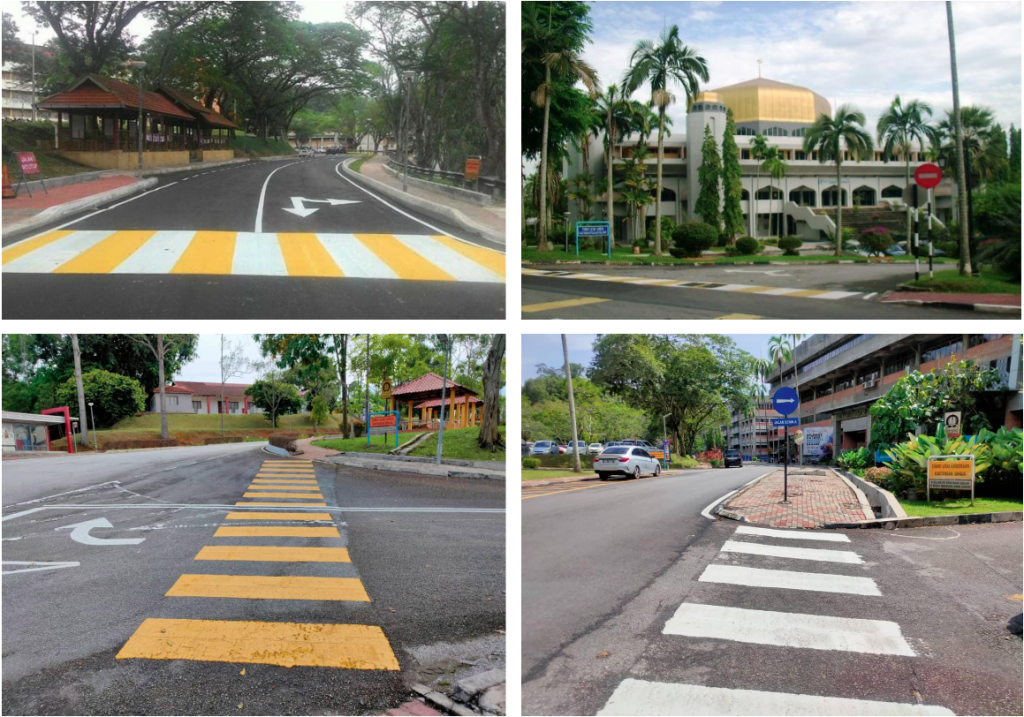
Disabled-Friendly Features
UKM is committed to creating an inclusive and accessible campus environment for all. To achieve this, the university has implemented various features, including accessible bus stops, tactile paving, pedestrian-friendly roads, ramps, and wheelchair access. These measures ensure that individuals with disabilities can navigate the campus safely and independently, promoting inclusivity and equal opportunity.


Universiti Kebangsaan Malaysia (UKM) actively collaborates with local authorities to address planning and development issues, ensuring that local residents have access to affordable housing. This collaboration is evident through UKM’s adherence to guidelines set by local authorities and its proactive engagement in community development initiatives.
Compliance with Local Authority Guidelines:
- Adherence to Planning Regulations: UKM ensures that all campus development projects comply with the planning regulations and guidelines established by local authorities. This includes obtaining necessary approvals and permits for construction and development activities, thereby aligning with the strategic plans of the local government.
- Environmental Sustainability: In partnership with local authorities, UKM integrates environmental sustainability into its development projects. This includes implementing green building practices, preserving natural habitats, and promoting sustainable land use, in line with local environmental policies.
In Malaysia, based on Section 70(1) of the Street, Drainage, and Building Act 1974 (Act 133), it is stated that no party may construct a building without prior written approval from the Local Authority (PBT). Any building construction or modifications/extensions without prior approval from the PBT or construction that does not comply with the approved plan are in violation of Section 70 (Act 133). Therefore, any new building construction at UKM must obtain approval from the Kajang Municipal Council. UKM’s process involves obtaining Planning Permission, which is written consent from the Local Planning Authority (PBT) required after land use change approval and before the building plan process. The content of Planning Permission according to Act 172 is as follows:
- Subsection 2(1) of the Town and Country Planning Act 1976 (Act 172) defines planning permission as permission granted, with or without conditions, to carry out development.
- Subsection 19(1) stipulates that no person, other than the local authority (PBT), may commence, undertake, or carry out any development unless planning permission for the development has been granted under Section 22 or extended under Subsection 24(3).
- Generally, “planning permission” is a procedure where the applicant must submit an application to the PBPT for approval before commencing any development on land or buildings, as provided under Section 21A [Development Proposal Report (LCP)] and Section 21B [Layout Plan].
- All developments must obtain planning permission approval from the Local Planning Authority. If development is carried out without planning permission or in contravention of the granted planning permission, the owner may be convicted under Sections 27 and 28 of Act 172. The penalty, as per Subsection 26(1), may include a fine not exceeding five hundred thousand ringgit or imprisonment for a term not exceeding two years, or both.

Source: https://www.ppj.gov.my/storage/7476/133—STREET%2C-DRAINAGE-AND-BUILDING-ACT-1974.pdf
Initiatives Supporting Affordable Housing:
- Employee Housing Programs: UKM offers affordable housing options for its staff, such as the Bukit Puteri residential area and rental facilities near the campus. These initiatives not only provide cost-effective living solutions for employees but also contribute to the local housing market by setting standards for affordable housing.
- Community Engagement: UKM collaborates with local authorities to develop community programs that address housing needs. This includes research projects focused on sustainable urban development and affordable housing solutions, benefiting both the university community and local residents.
Through these efforts, UKM demonstrates its commitment to working with local authorities to address planning and development challenges, ensuring that local residents have access to affordable housing and that development projects are conducted responsibly and sustainably.
UKM is committed to sustainable development and has incorporated green building principles into its campus planning. The university’s new building standards prioritize energy efficiency, water conservation, and the use of sustainable materials. By adopting these practices, UKM aims to reduce its environmental impact and create a more sustainable campus. These efforts align with SDG 11, Sustainable Cities and Communities, by promoting sustainable urban development and providing a healthy and safe environment for students and staff.
Energy Efficiency Building
Buildings at UKM follow green building standards for renovations and new construction, incorporating sustainable elements such as natural daylighting, natural ventilation, rainwater harvesting systems, high-efficiency LED installations, sustainable landscaping, recycling facilities and the assignment of a dedicated Energy Manager. These criteria are integral to UKM’s construction and renovation tender requirements. Additionally, solar panels have been installed across campus as part of UKM’s commitment to reducing electricity costs and advancing renewable energy use.
UKM’s green building approach focuses on environmentally responsible design, construction, and operations. This includes energy-efficient systems like LED lighting, high-efficiency HVAC systems, and renewable energy installations, ensuring resource-efficient buildings throughout their lifecycle.





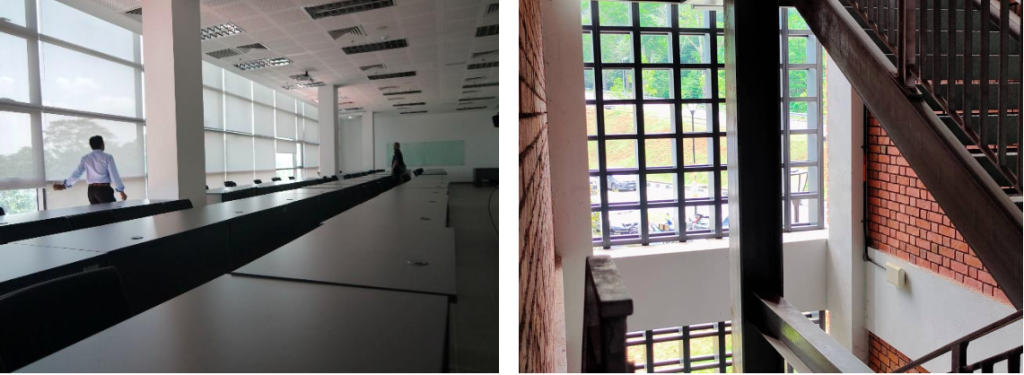


Innovative programs in energy and climate change
UKM has nine innovative sustainability programs in energy and climate change. The design of the sensor monitoring system’s primary function to monitor the facility building uses several sensors. The power meter sensors and temperature and humidity sensors were deployed as IoT ubiquitous sensors to monitor the condition in one of the laboratories in UKM. There are in total 2 temperature and humidity sensors and 2 power meters to measure temperature, humidity and current draw of the air conditioner.


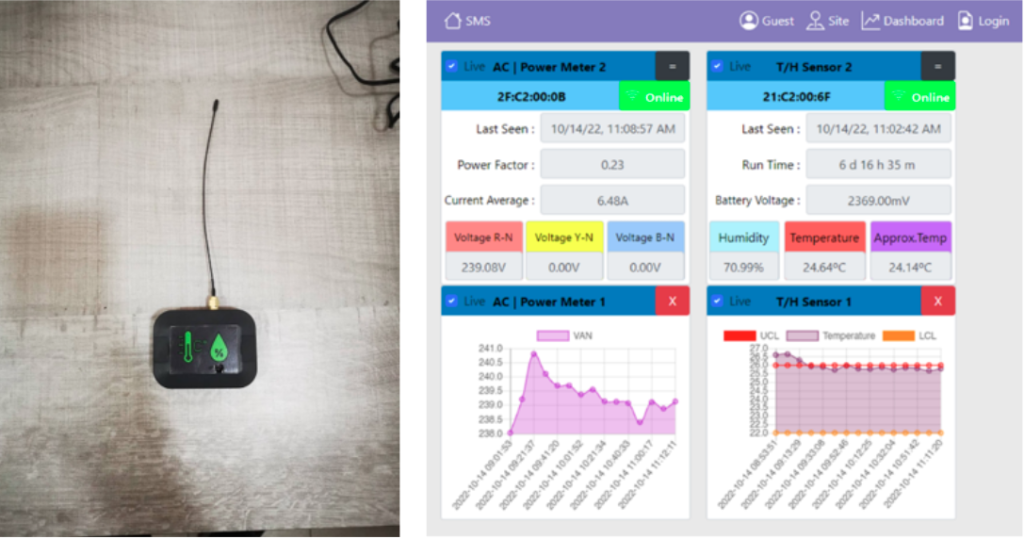
Green Building
UKM’s commitment to sustainability is evident in its development of green buildings, such as the STEM and AST buildings. These structures incorporate eco-friendly designs and technologies, including energy-efficient lighting and climate control systems, water-saving measures, and the use of sustainable materials. By prioritizing sustainability in its infrastructure, UKM aims to reduce its carbon footprint and create a healthier, more environmentally friendly campus.

in UKM Bangi
Automatic Systems in Smart Buildings at UKM Bangi
At UKM, the Building Management System (BMS) is a critical component of the university’s smart building infrastructure. The BMS software automates various functions across campus buildings, enhancing energy efficiency, security, and operational control. This sophisticated system optimizes resource usage, lowers energy costs, and contributes significantly to UKM’s sustainability goals, reinforcing the university’s leadership in environmental and resource management.

UKM prioritizes the redevelopment of brownfield sites, ensuring that existing land is utilized efficiently rather than expanding into greenfield areas. One notable project is the Laman Ilmu, located at the old site of wooden houses in front of the UKM campus. This redevelopment transformed an underutilized area into a vibrant academic and communal space, demonstrating UKM’s commitment to sustainably revitalizing brownfield areas. By focusing on urban regeneration, the Laman Ilmu project reflects UKM’s dedication to minimizing environmental impact while promoting educational and social activities.
Source: https://www.ukm.my/beritaukm/ukm-bangunkan-projek-laman-ilmu/
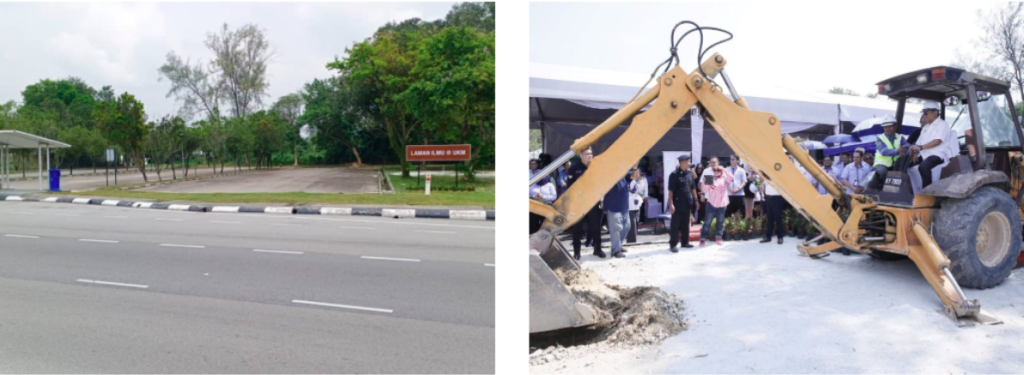
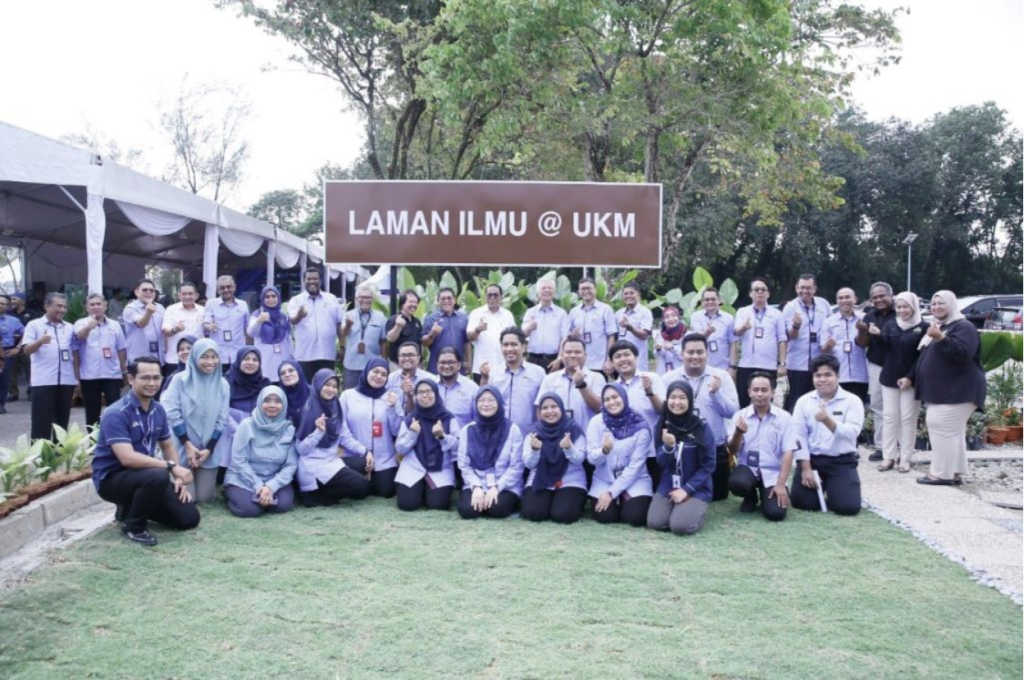
Support of arts and heritage
UKM has a library that provides book lending facilities and access to journals for UKM members. UKM also has several museums and galleries that UKM members and visitors can visit. Several departments that are specific to cultural and arts management. For example, the UKM Cultural Center offers a variety of arts including performance, dance, acting and martial arts. The role of the Cultural Center is not only to highlight culture and heritage but also to foster the interest of staff and students in the field. In addition, the Malay Institute of Nature and Civilization (ATMA) plays a role in preserving Malay heritage. Other than that, UKM provides pedestrians to facilitate the movement of pedestrians and prioritize pedestrian safety, UKM provides special routes to avoid accidents or other unwanted things.
Monument
UKM provides public access to buildings, monuments, or natural heritage landscapes of cultural significance. Currently, there are 15 identified monuments at UKM, with the classification based on buildings over 50 years old. Few of the monument examples in UKM are Chancellor Hall Tun Abdul Razak (DECTAR), University’s Mosque and the first residential college, Dato’ Onn College. The mosque building is surrounded by six minarets, with a particularly prominent minaret reaching a height of 6666 centimeters, symbolizing the 6666 verses of the Quran. This design was inspired by Tun Syed Nasir, former UKM Pro-Chancellor. Additionally, to strengthen the relationship between UKM and the local community, the main hall, DECTAR, is strategically located in front of UKM’s main gate, symbolizing the close bond between the two parties.
- Official Monument of UKM Campus
- Selaka Garden
- Chancellor Tun Abdul Razak Hall – Dewan Canselor Tun Abdul Razak (DECTAR)
- Anuwar Mahmud Hall
- Universiti Kebangsaan Malaysia Mousque
- Istana Puteri Bongsu
- Chancellory Building
- Faculty of Economics and Management
- Institute of Malay World and Civilization – Institut Alam dan Tamadun Melayu (ATMA)
- Tun Seri Lanang Library
- Faculty of Social Sciences and Humanities
- Official Monument of Dato’ Onn College
- Dato’ Onn Residence
- Tun Hussein Onn Residence
- Aminuddin Baki Residence
- Ungku Omar Residence
1. Official Monument of UKM Campus
GONG UKM: Commemorating the Opening Day of UKM
The UKM gong located in front of the Tun Abdul Razak Chancellor’s Hall (DECTAR) is in conjunction with the opening of the Universiti Kebangsaan Malaysia (UKM) by His Majesty Sultan Haji Ahmad Shah Al-Musta’in Billah Ibni Al-marhum Sultan Abu Bakar Ri ‘ayatud In Al-Mu’azzam Shah when he was the Yang Di-Pertuan Agong of Malaysia. UKM Bangi campus was officially opened on Tuesday, September 2, 1980 corresponding to 22 Syawal 1400.
This historic location is a must-visit place for UKM residents and a focal point for UKM graduates to take souvenir photos. Let’s share your nostalgic photos and convocation ceremony year here. UKM’s 46th Convocation Ceremony will take place on 10-13 November 2018. UKM Alumni invite alumni to liven up the ceremony and celebrate UKM’s new graduates.
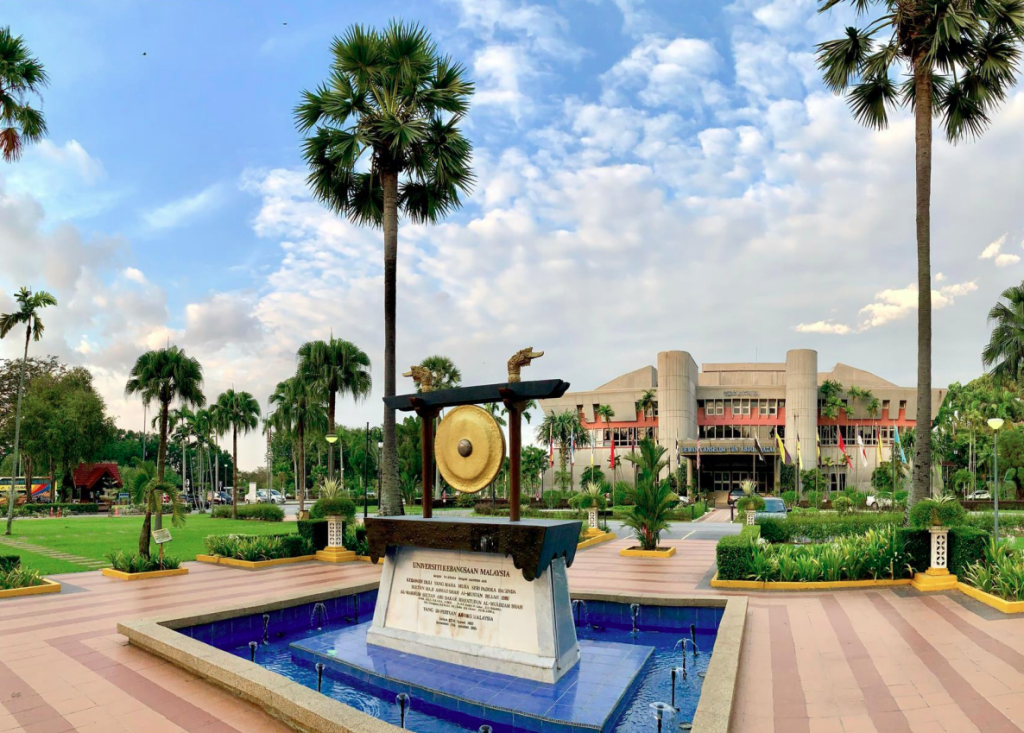
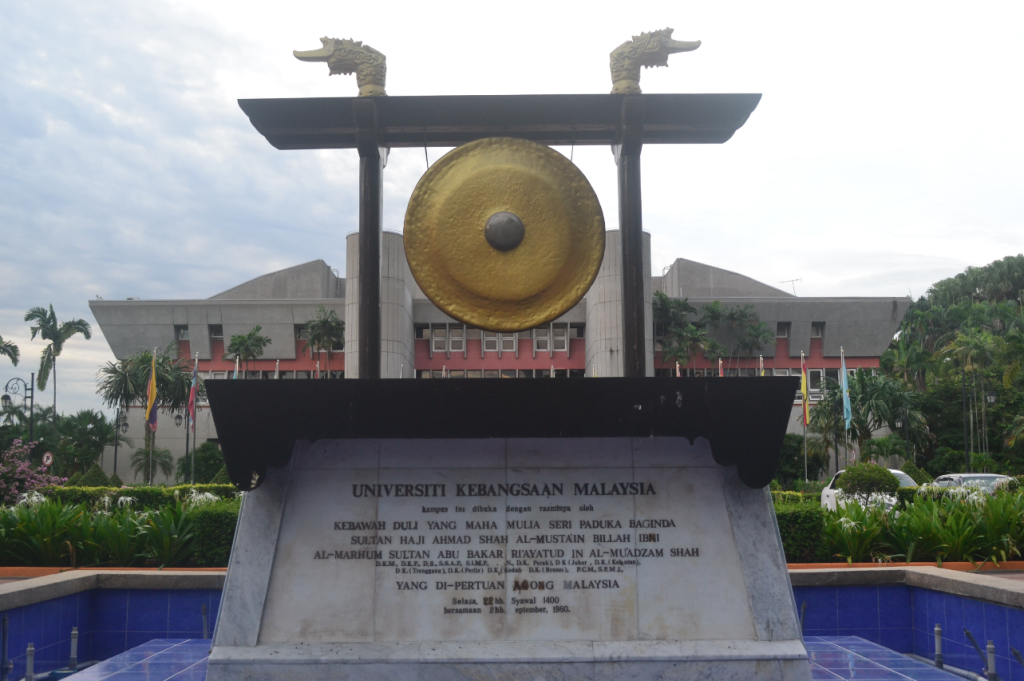
2. Selaka Garden
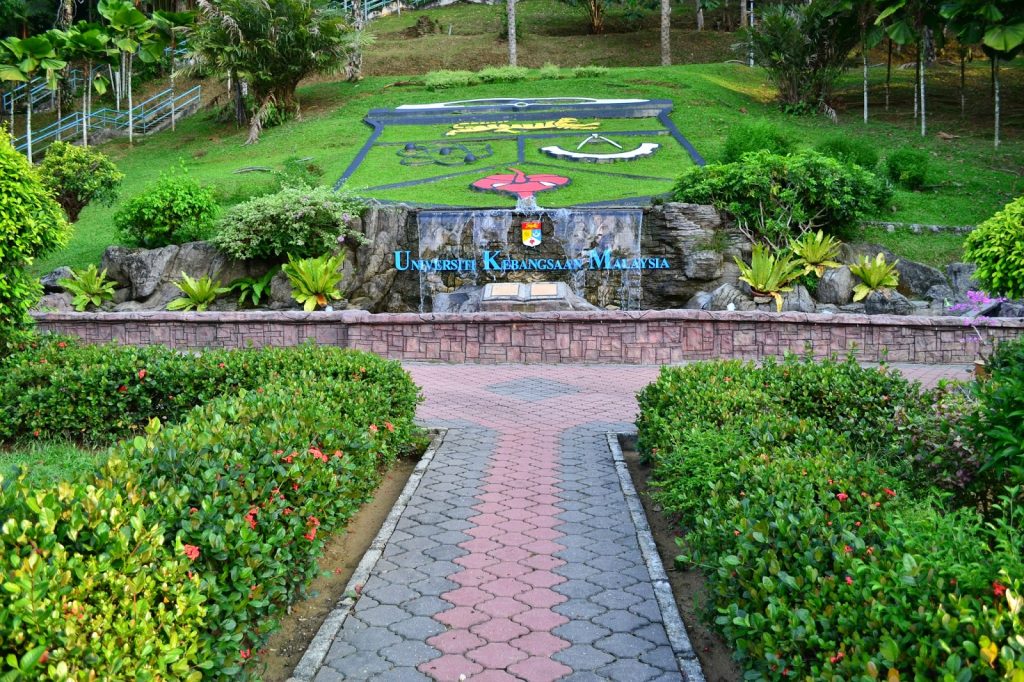
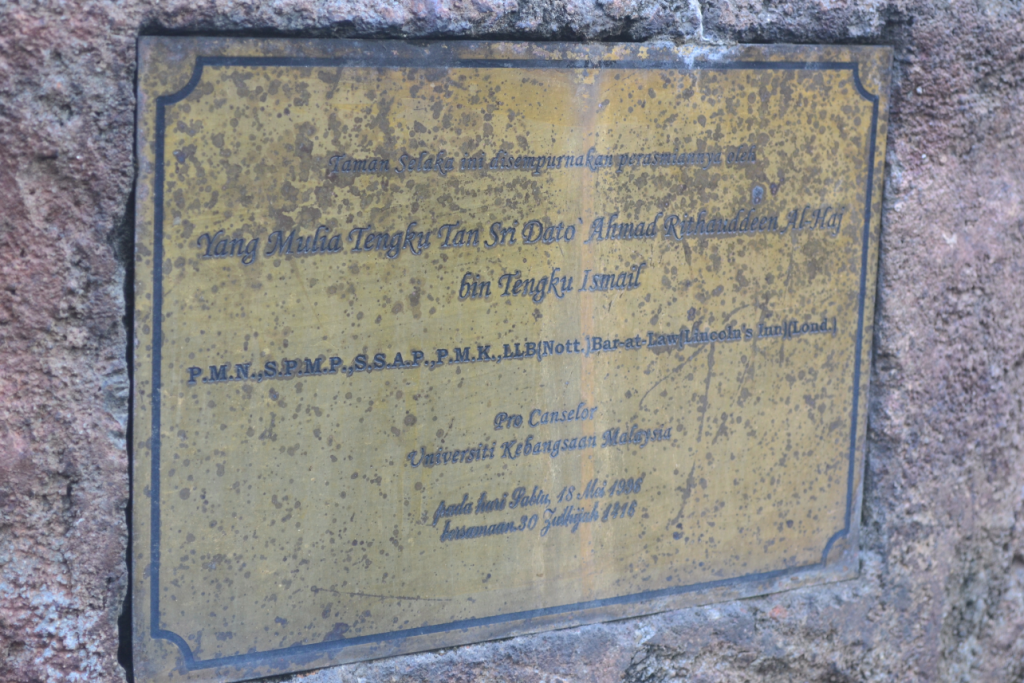
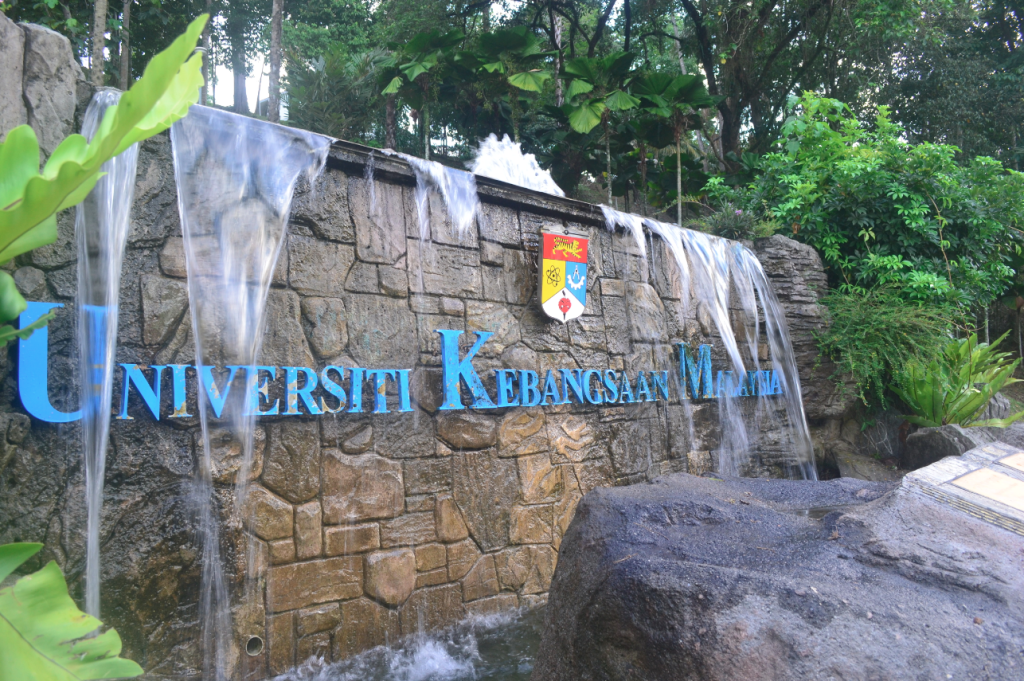
3. Chancellor Tun Abdul Razak Hall – Dewan Canselor Tun Abdul Razak (DECTAR)
Chancellor Tun Abdul Razak Hall (DECTAR) of UKM was completed on 28 November 1978 and was used for the first time during the 6th UKM Convocation Ceremony. The construction which started on 21 June 1976 cost RM6,922,821. With an area of 153,450 square feet, DECTAR set a record as the largest hall in Malaysia at that time.
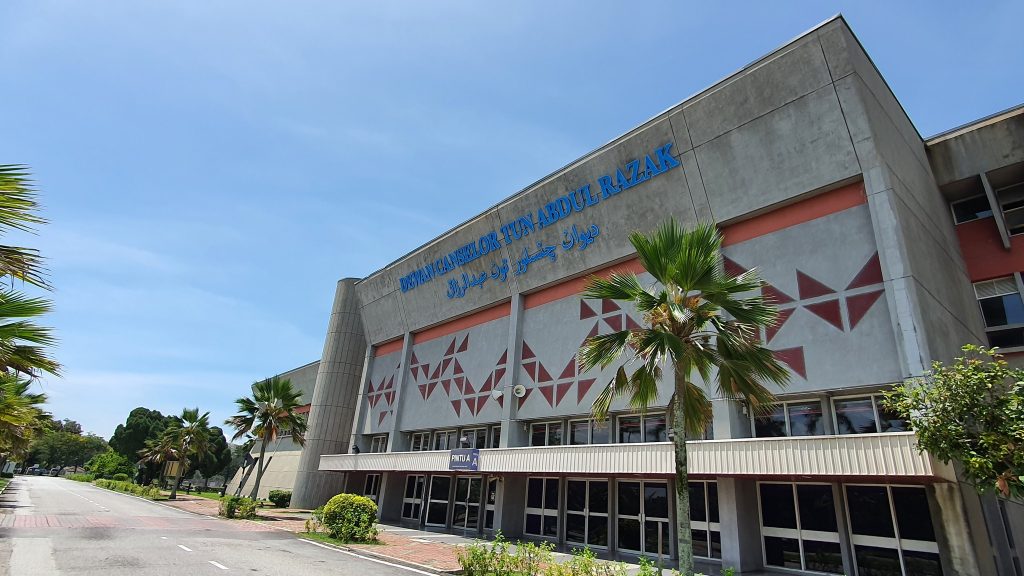
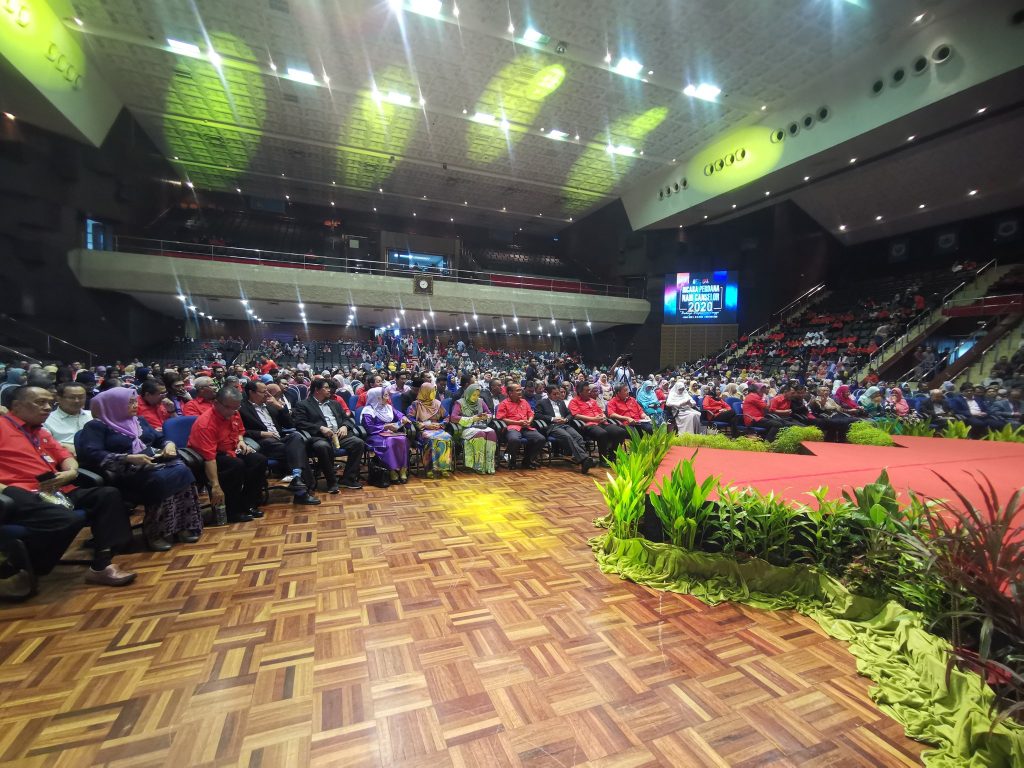
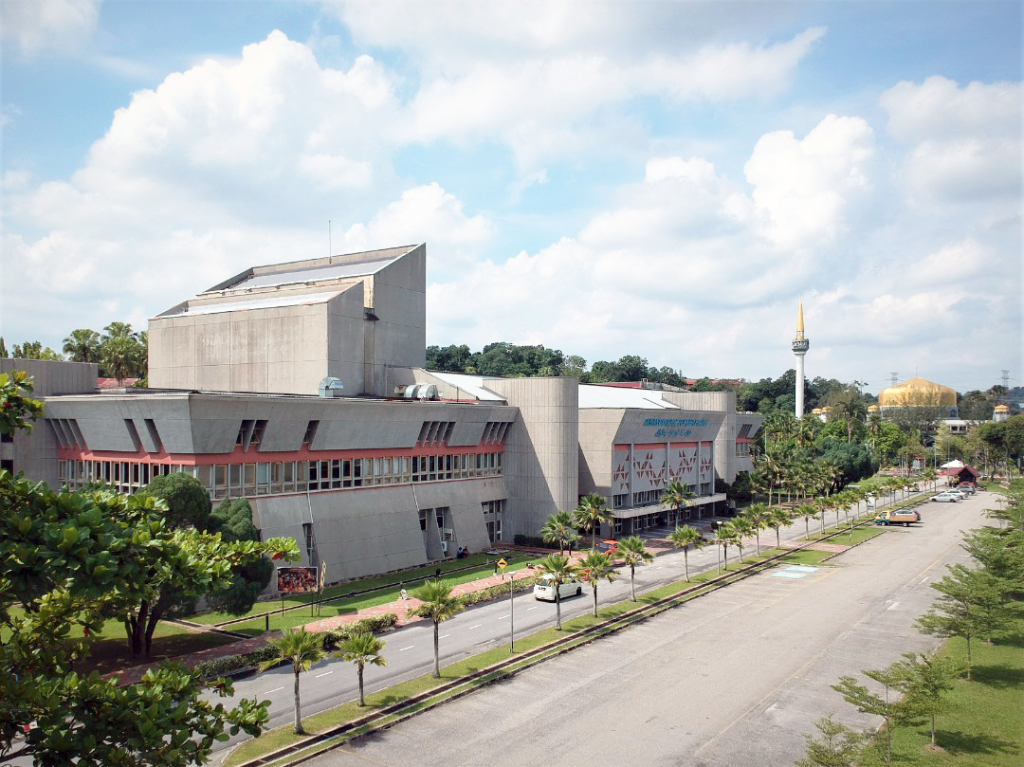
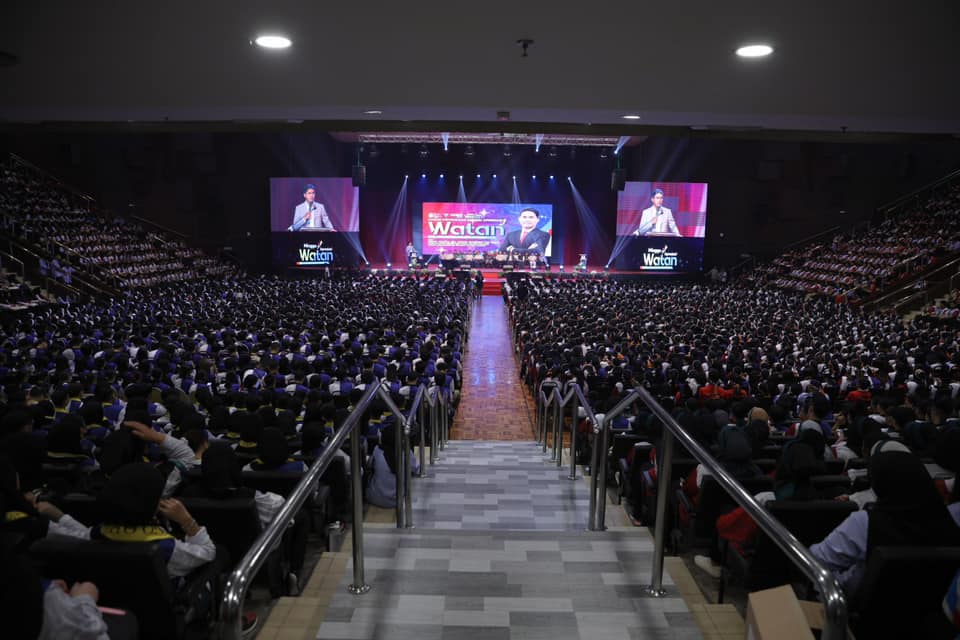
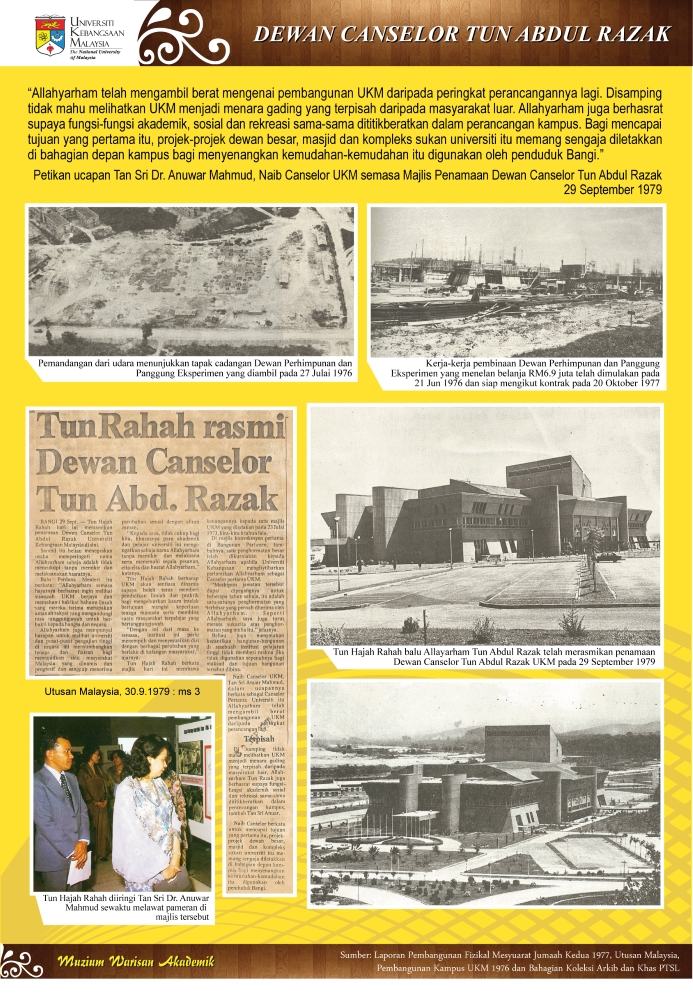
4. Anuwar Mahmud Hall
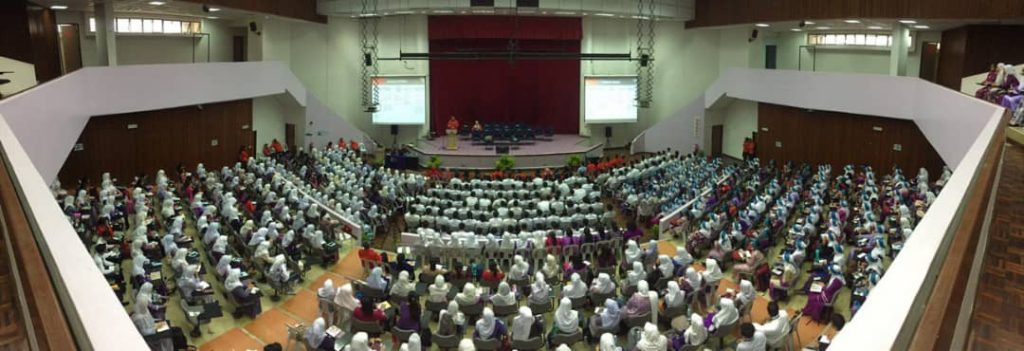
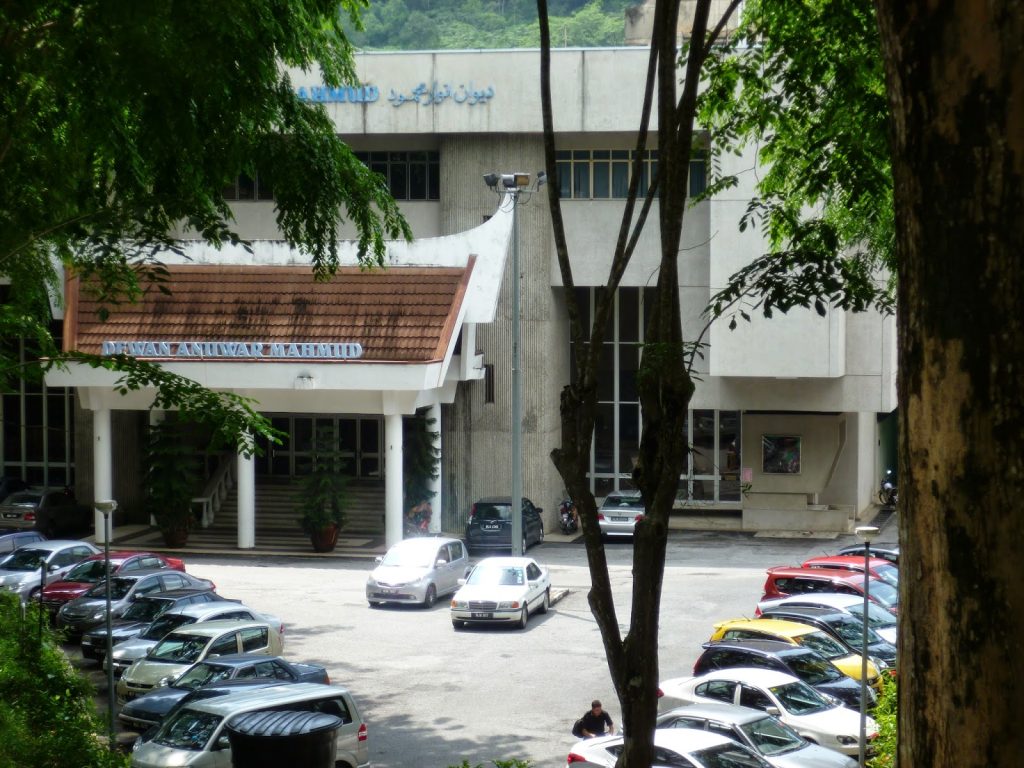
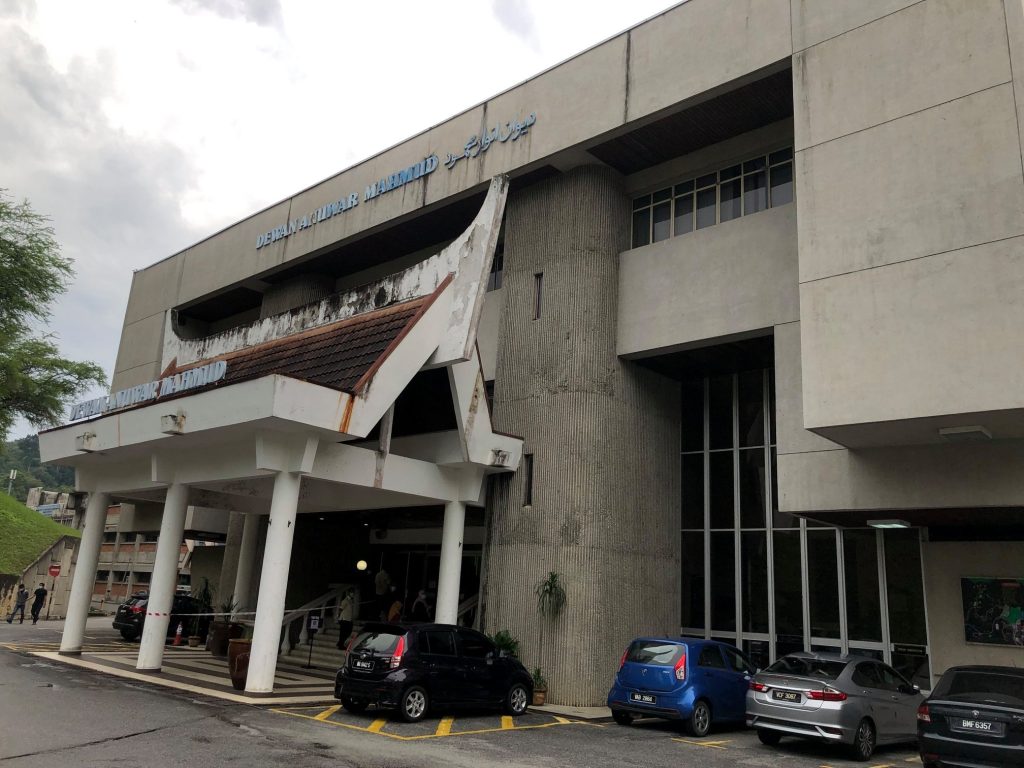
5. Universiti Kebangsaan Malaysia Mosque
UKM Mosque was built on a two-hectare site located in front of the main entrance of Universiti Kebangsaan Malaysia. Its construction started on 16 March 1979 at a cost of RM 5.1 million. It was officially handed over to the Universiti Kebangsaan Malaysia on Wednesday 14 April 1982.
The effort to establish this mosque began on Friday 16 April 1982. The design of the UKM Mosque was inspired by Mr. Abdullah Bakri, former Director of the Development Unit, UKM. This building is surrounded by six minarets and a large minaret 6666 centimeters high that was inspired by Tun Syed Nasir, former Pro Chancellor of UKM.
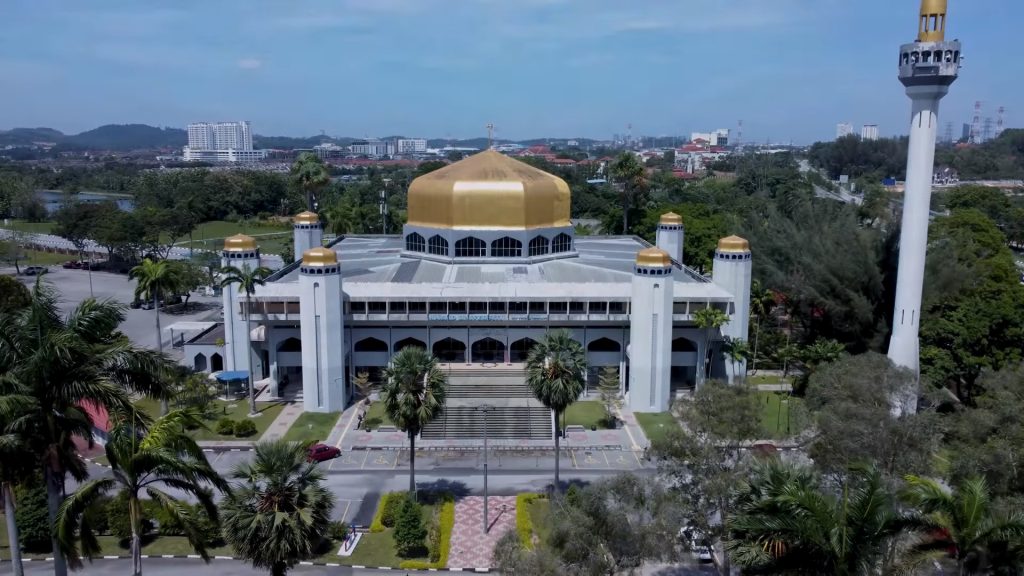
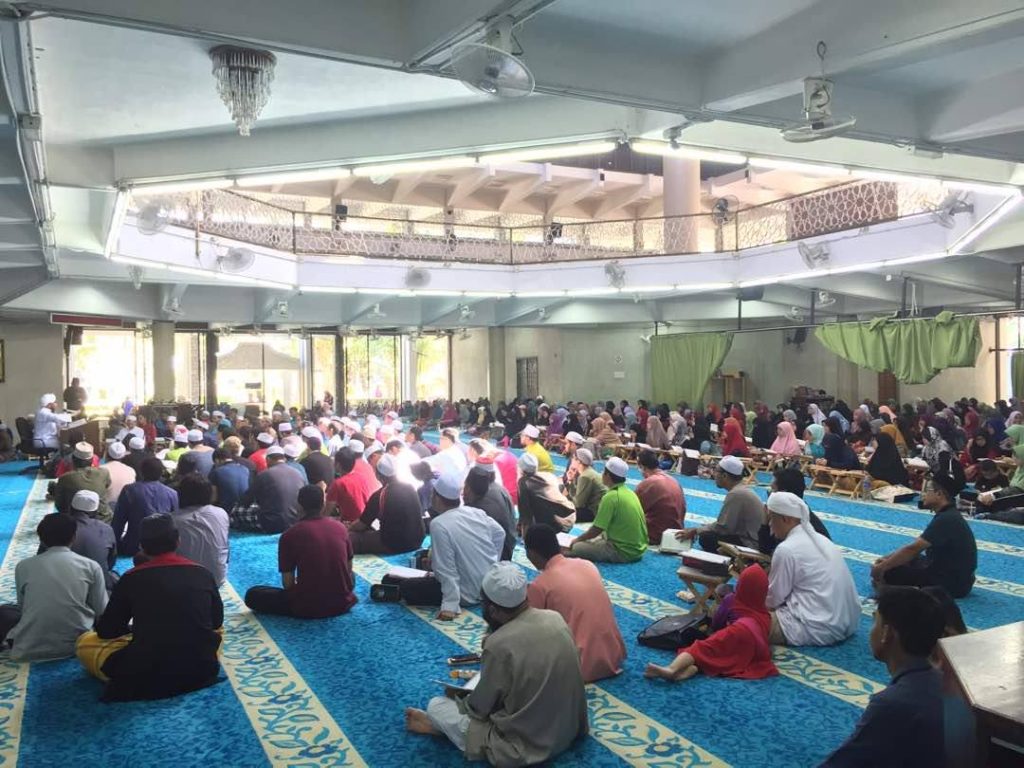
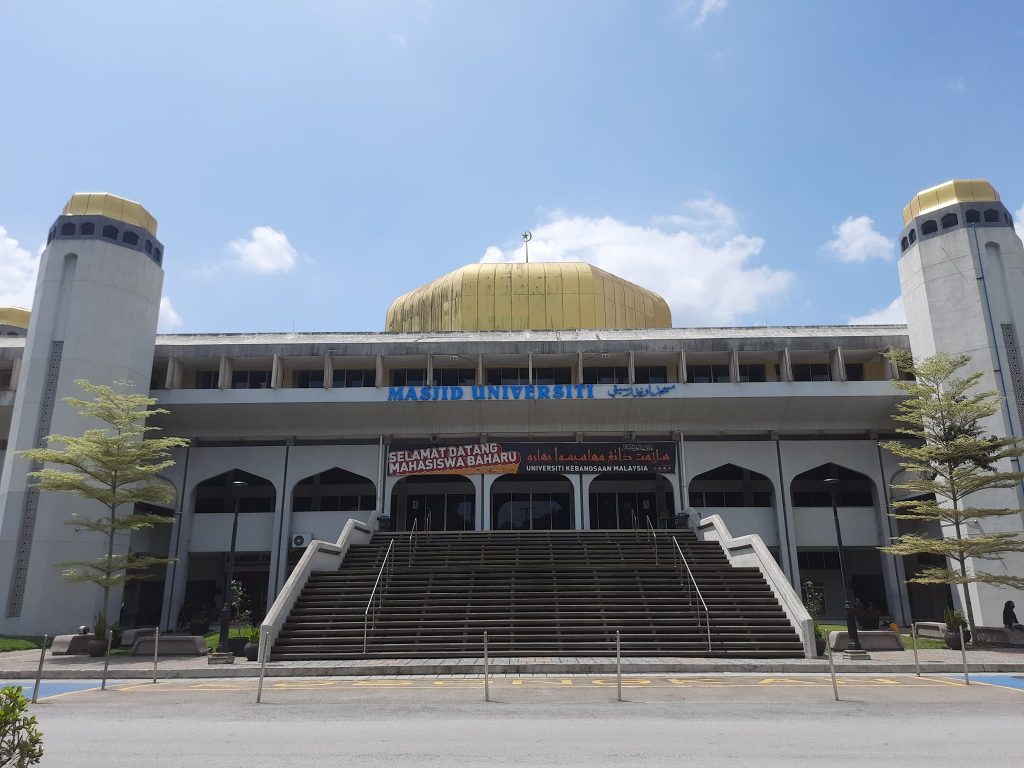
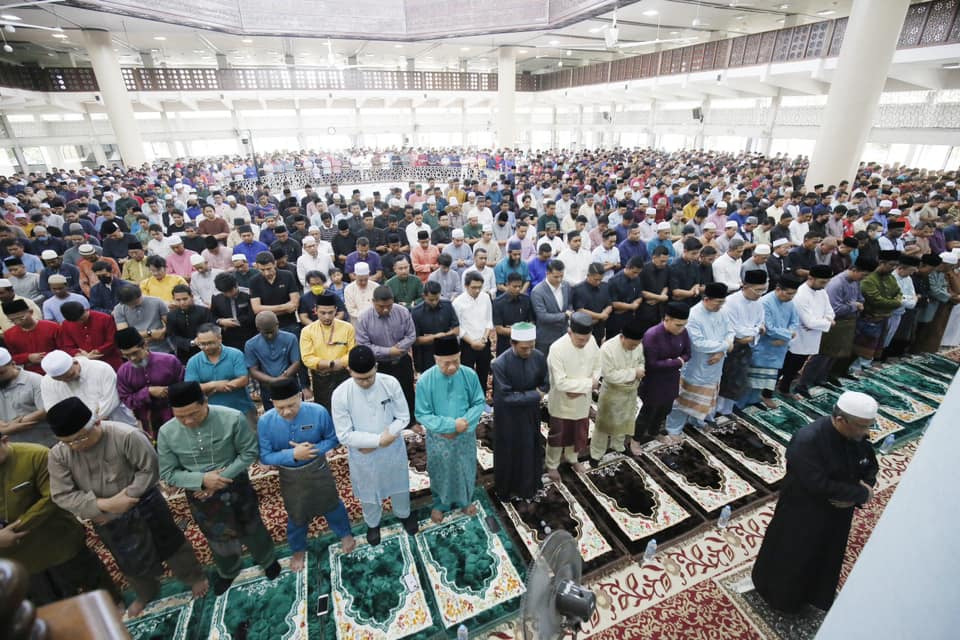
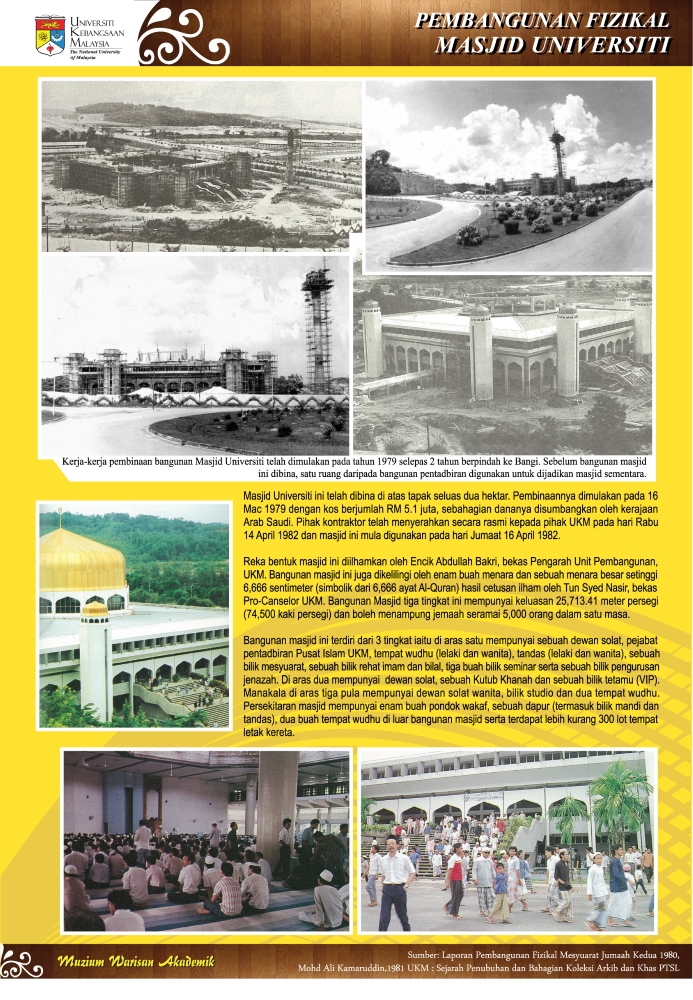
6. Istana Puteri Bongsu
The Museum Department bought Istana Puteri Bongsu fulfils the needs of the Malay World Ethnology Museum. It was first renovated in 2002 and has been stored in the Lukut Museum for 5 years. 2006 it was rebuilt in Taman Pantun, UKM. Around the palace there are lush trees making the atmosphere peaceful and comfortable, it is better known as Laman Ilmu filled with 199 trees, while each tree is completed with a verse related to the tree. It consists of herbaceous, fruit and ornamental trees.
This house has a Kitchen Module and a Mother’s House Module that are connected to the clothesline which is also the original design of the Kelantan House known as Rumah Bujang. The characteristics of the houses of the nobles are different from the residences of ordinary people, where they differ in terms of the pillars of the mother’s house, where ordinary people’s houses have 12 pillars on the module of the mother’s house, while the residences of the nobles have 16 pillars on the module. In addition, the family home in Raja also has an entrance without stairs and the floor is 8-10 feet from the ground level which is equal to the height of an elephant. Such a design is not because they keep elephants under the house, but rather it is designed to make it easier for the residents of the house to enter the house after driving with the elephant without getting off the animal. This is actually to protect the dignity and status of those who are known as members of the royal family.
The carvings on the walls also consist of flora motifs which are synonymous with Kelantan carving motifs. It is a very charming and luxurious residence for the people of Kelantan in the 1800s. This house was built with a mortise method with few nails, it also uses wood from the Cengal and Berlian types which nowadays are very difficult to obtain due to the fact that this type of wood is expensive for people to buy. habit Cengal and Berlian are hard types of wood that take a long time to process, currently only the rich are able to build houses from this type of wood.




8. Faculty of Economics and Management
The history of UKM’s Faculty of Economics and Management was pioneered with the establishment of the Department of Economics and Trade under the Faculty of Arts in 1970, the same age as the establishment of the National University of Malaysia which was established to fulfill the aspirations of the people in making Malay the medium of instruction in all fields of study and science.
The status of the Department of Economics and Trade was later raised to the faculty level named the Faculty of Economics and Management in 1974.
The development of economics and business as well as the increasing demand of the labor market gave rise to the idea of separating this faculty into two separate faculties, namely the Faculty of Economics and the Faculty of Business Management in 1979.
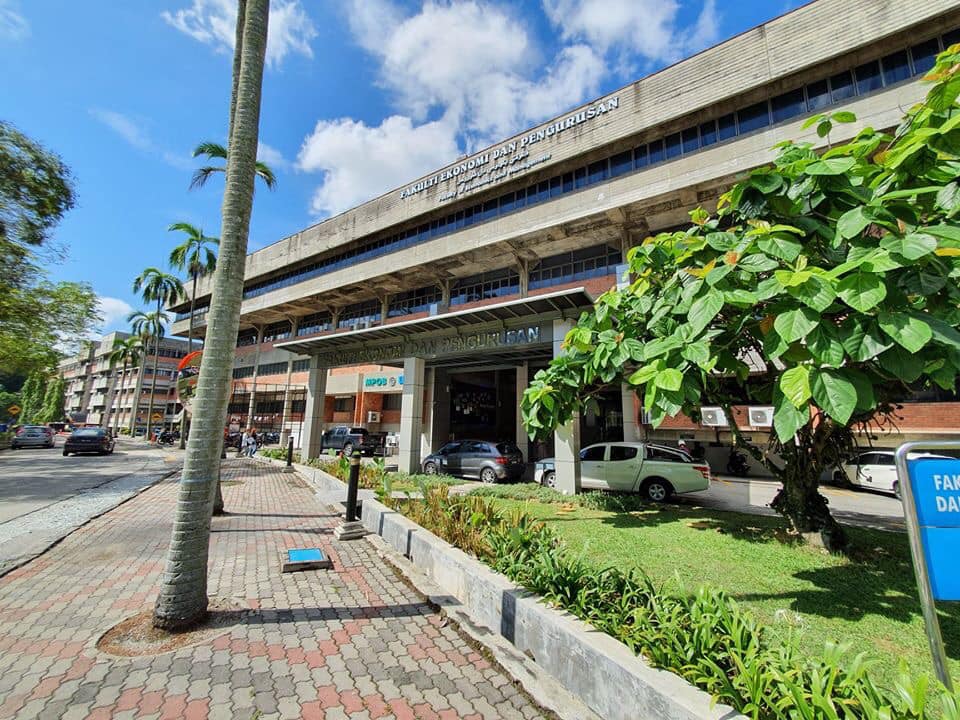
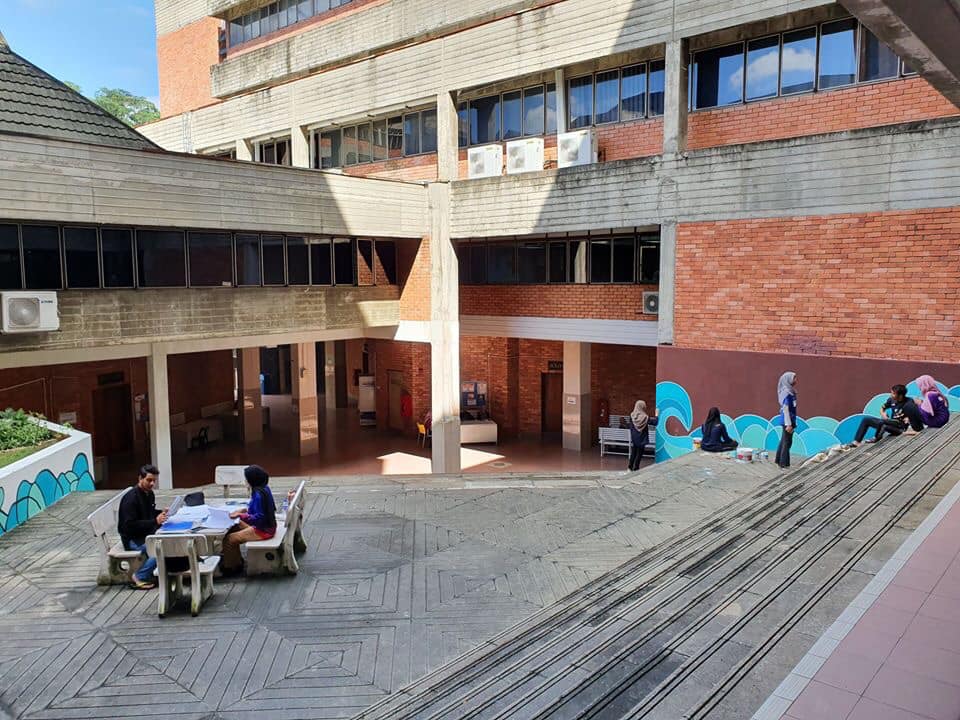
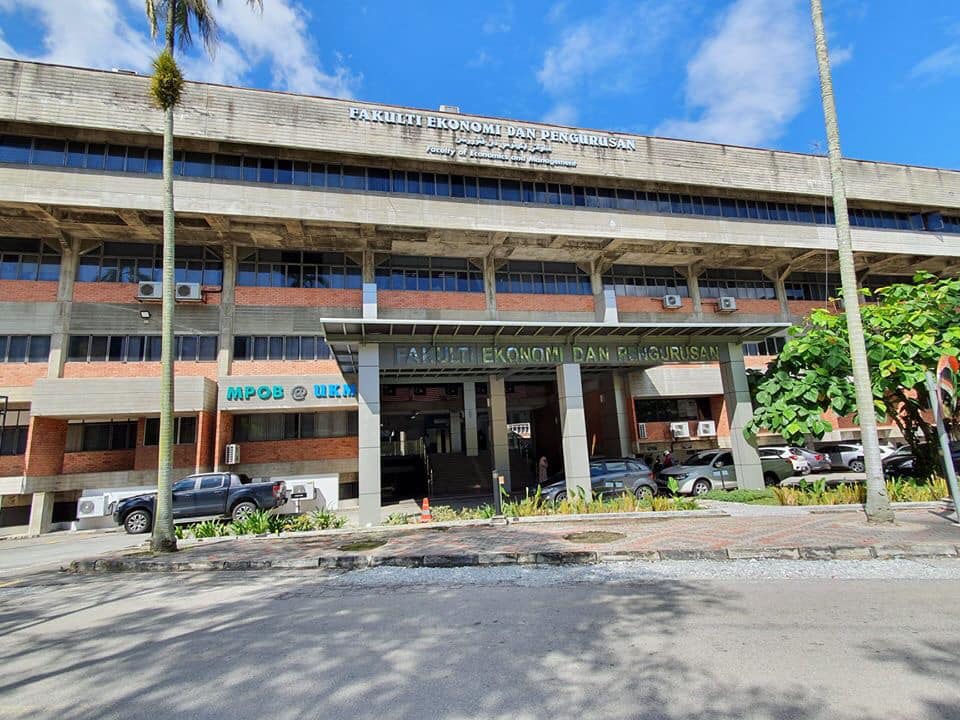
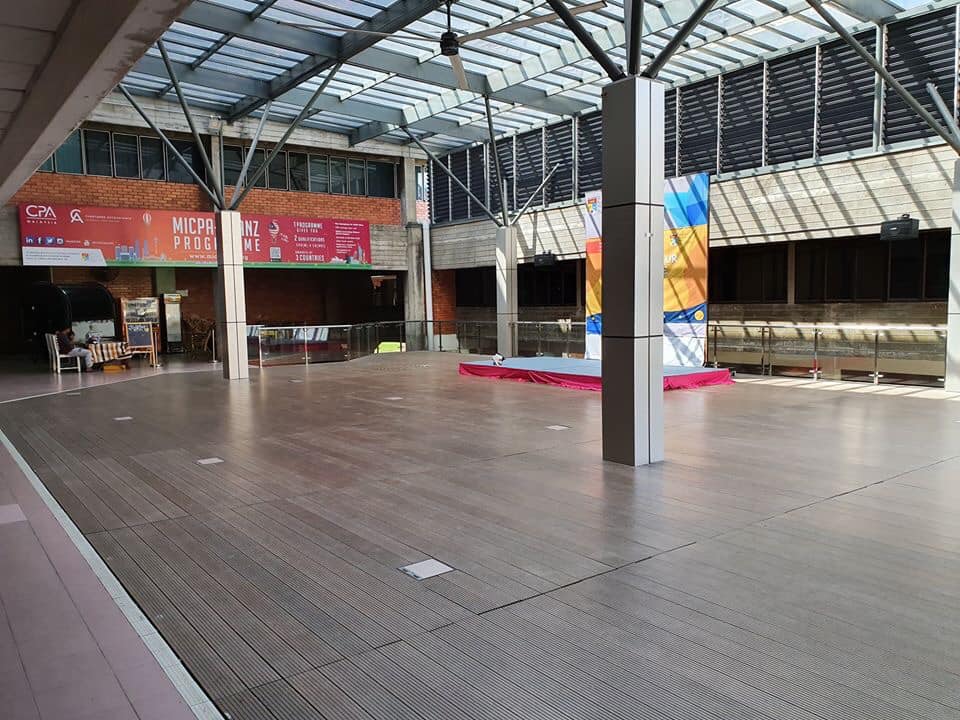
9. Institute of Malay World and Civilization – Institut Alam dan Tamadun Melayu (ATMA)
The Institute of Malay World and Civilization (ATMA) was initially established as an Institute of Language, Literature and Malay Culture (IBKKM) in December 1972. The aim of the institute was to offer postgraduate studies i.e. Masters in Letters and Doctor of Philosophy and research into Language, Literature and Malay Culture as well as become the main reference center for these subjects. The changing of the name from IBKKM to ATMA in 1992 had expanded the areas of research to include the whole of Malay world and civilization.
Since its establishment, the institute is driven by a general conception of the Malay world and Civilization field which includes philosophy, beliefs, material culture, identity and all aspects of life within Malay cosmology. It is further expanded to include landscaping, ocean and outer space.
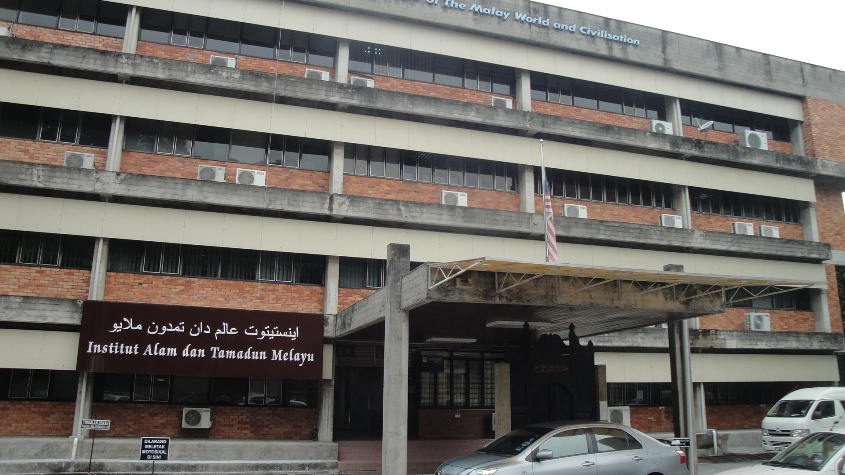
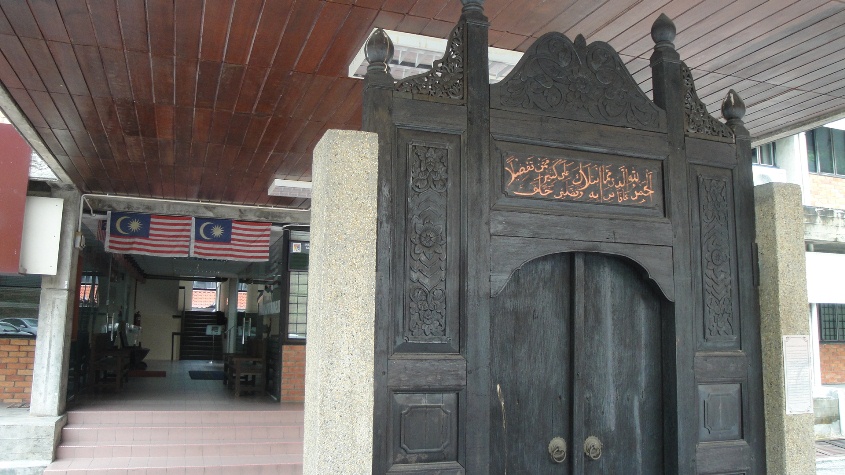
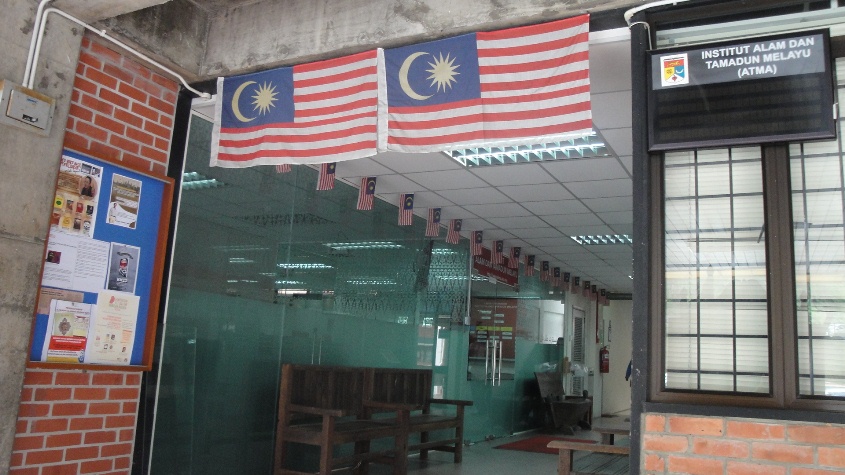
10. Tun Seri Lanang Library
The UKM Library was established simultaneously with the establishment of UKM on 18 May 1970 in Lembah Pantai, Kuala Lumpur. In 1977, the Library moved to a campus in Bangi and at first used Level 5 of the Chancellory Building, UKM before moving to the permanent building of the library.
The library building in Bangi was first used in 1978 and was officiated by His Majesty DYMM Tuanku Jaafar ibni Almarhum Tuanku Abdul Rahman on 2 July 1980. The building was named Tun Seri Lanang Library in honour of a nobleman and a famous literary figure in Malaya in the 16th century.
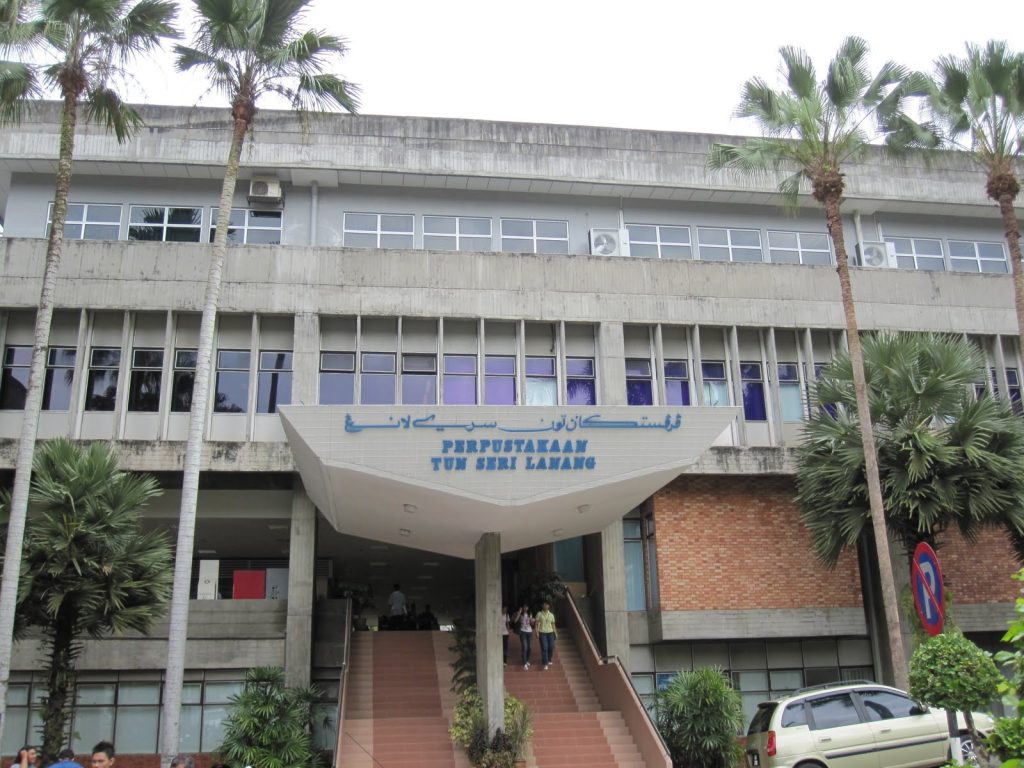
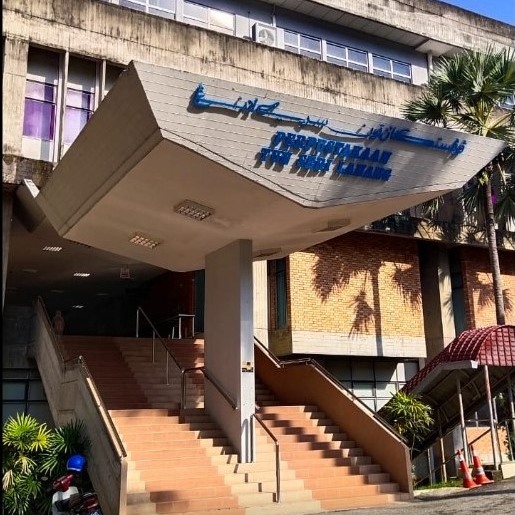
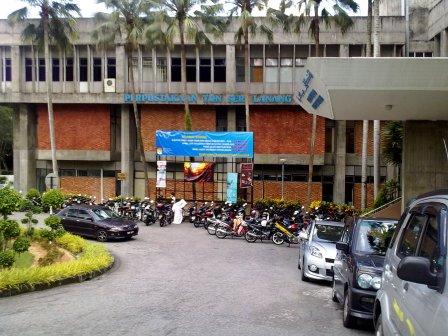
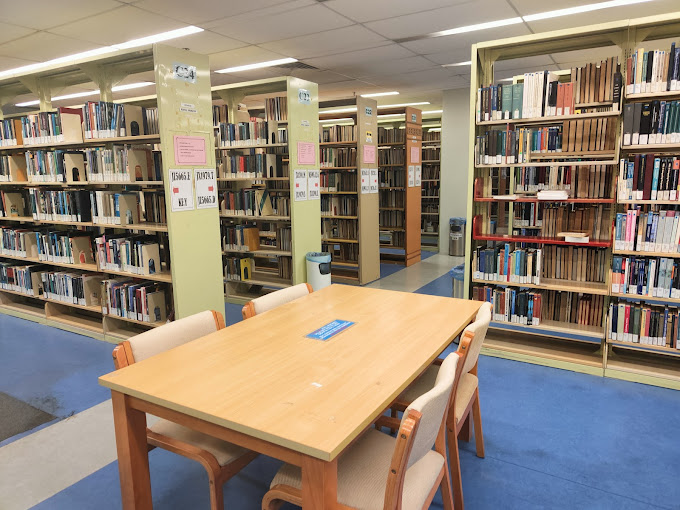
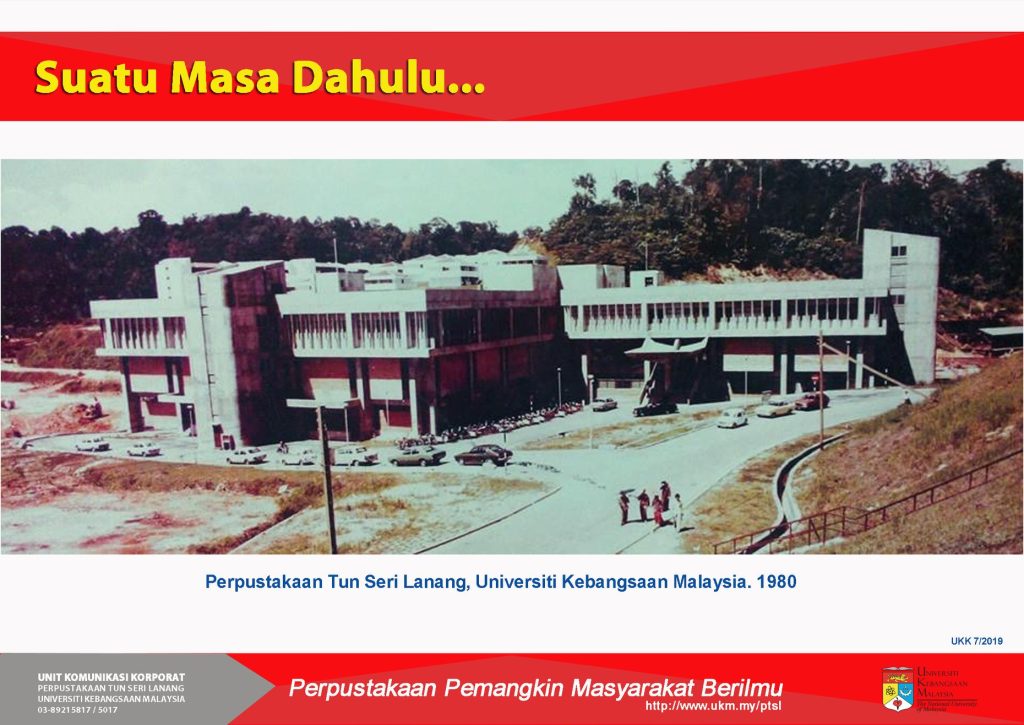
11. Faculty of Social Sciences and Humanities
Mission:
To promote and integrate the exploration of new knowledge for the creation of graduates who are learned, dynamic and guided by national aspirations.
Vision:
To catalyse and pioneer advances in academic scholarship for national development and overall human wellbeing.

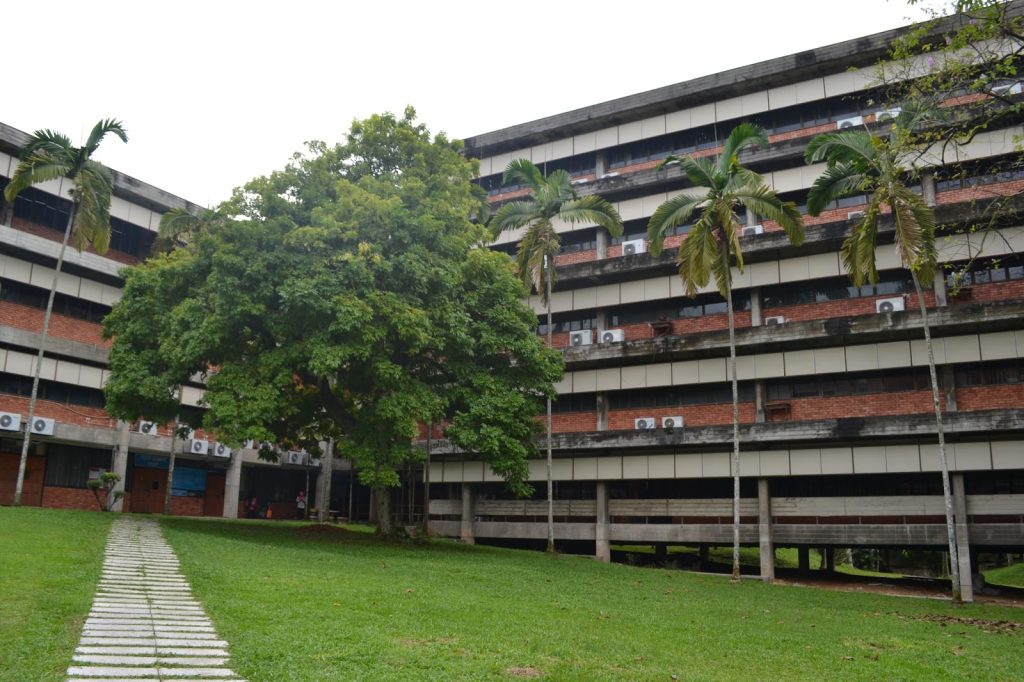
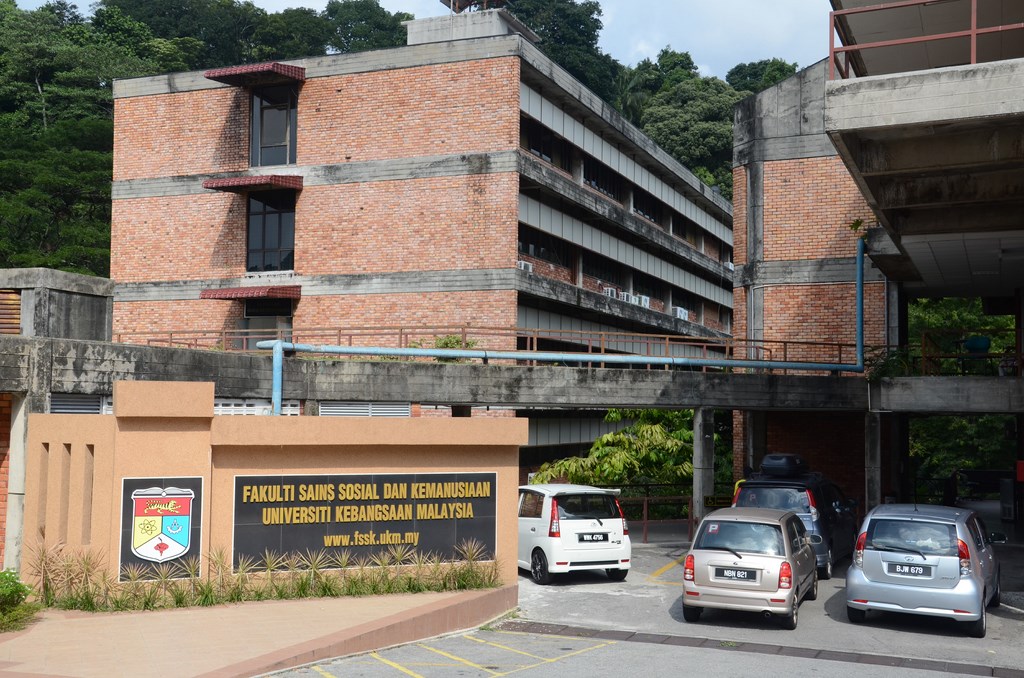
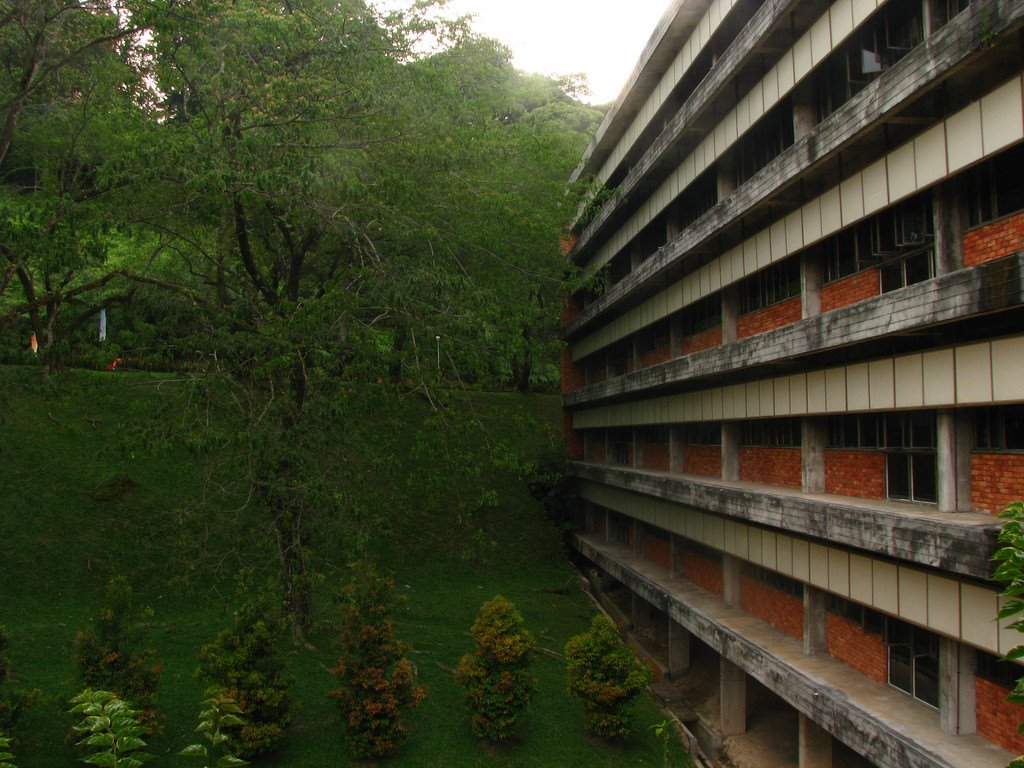
12. Official Monument of Dato’ Onn Collage
Dato’ Onn College (KDO) is the first college established at UKM Bangi in parallel with the transfer of the UKM Campus to Bangi. First College was renamed to Kompleks Siswa A on November 25, 1977. In 1981, Kompleks Siswa A was upgraded as Kampung Siswa A or better known as Kamsis A where the kamsis was able to accommodate 1480 residents.
In 1986, KDO once again underwent a branding process when this kamsis was upgraded to Kamsis Dato’ Onn. The fame and prominence of Dato’ Onn has caused his name to be immortalized in the folds of history to be remembered. Therefore, on 30 January 1986, corresponding to 20 Jamadil Awwal 1406 Hijrah, the position of this college was strengthened with the inauguration by YAB Tun Hussein Onn, the 3rd Prime Minister of Malaysia. This is a historic moment throughout the establishment of UKM and this history is solidly carved in the Kamsis Dato’ Onn administration building. With this inauguration, Kamsis Dato’ Onn became known as Kolej Dato’ Onn. It still proudly stands on the UKM stage until now and has successfully produced many excellent and distinguished students in line with the direction of Universiti Kebangsaan Malaysia.
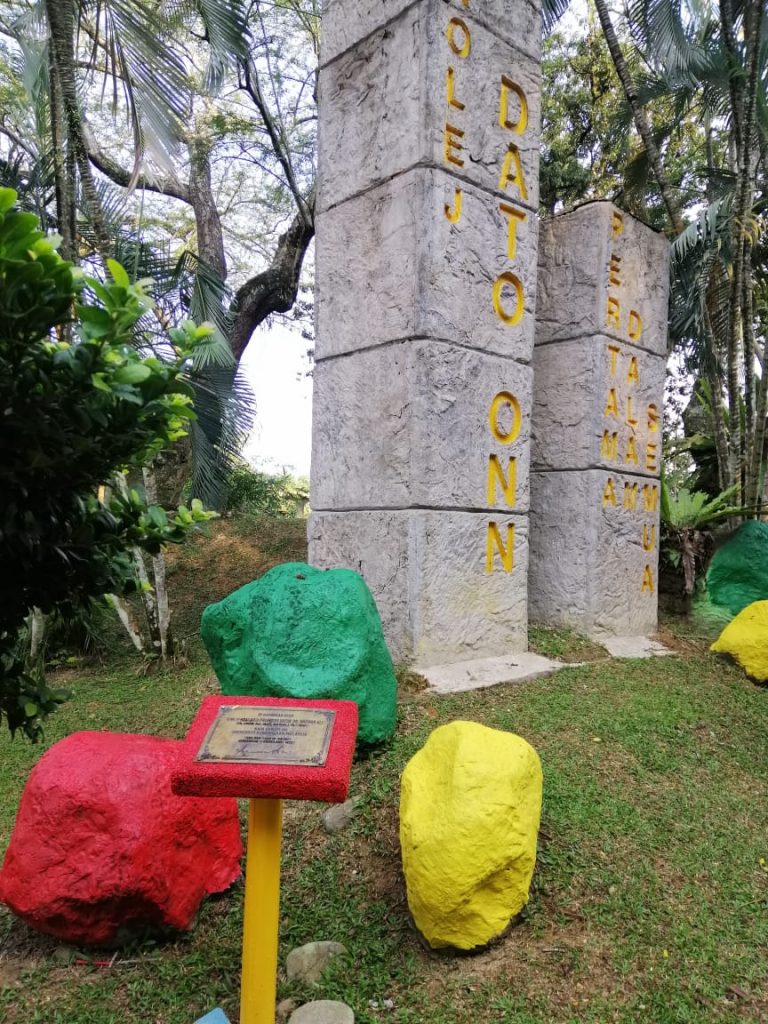
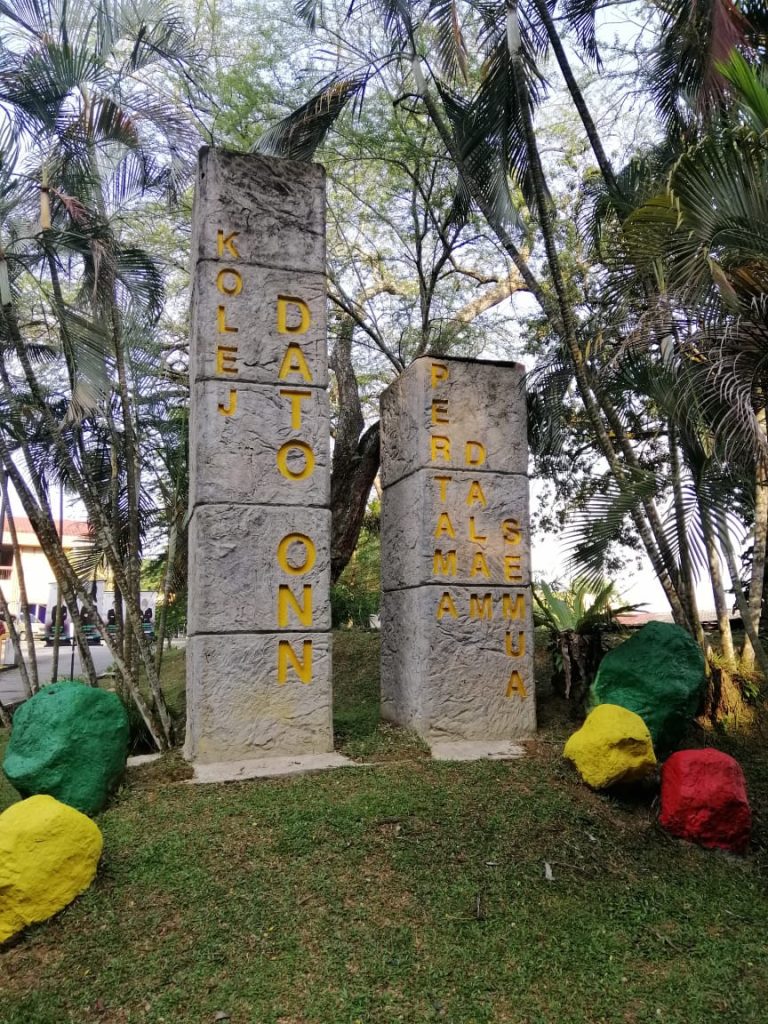
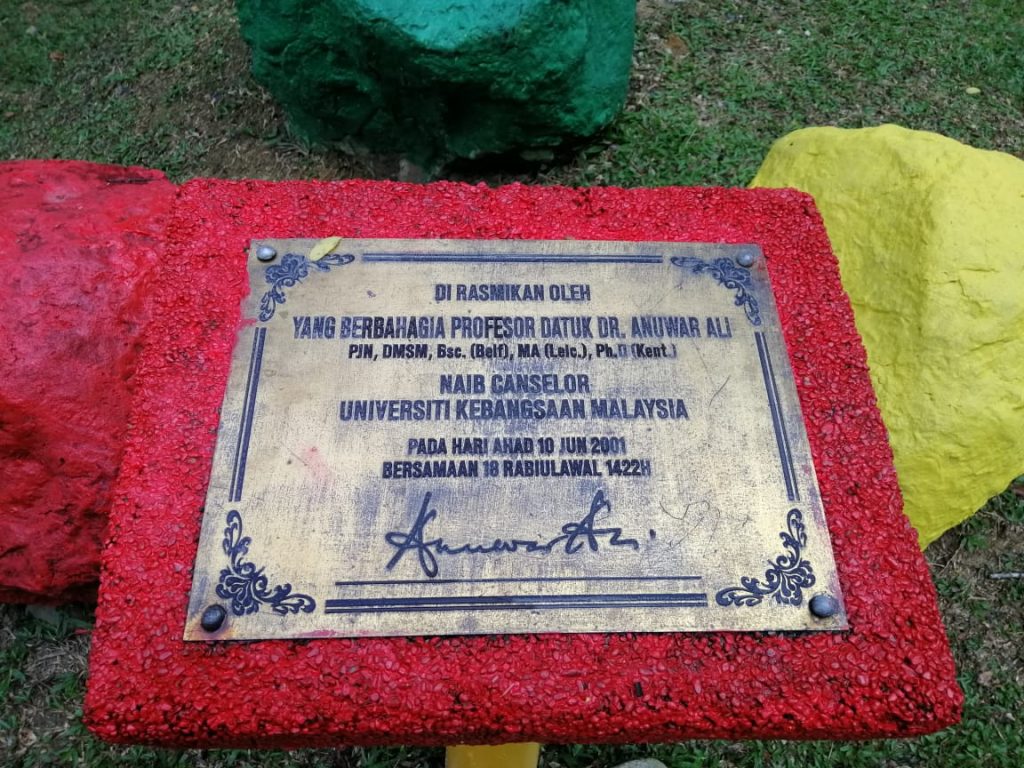
13. Dato’ Onn Residence
Dato’ Onn College (KDO) is the First College established in UKM Bangi in parallel with the transfer of the UKM Campus to Bangi. First College has changed its name to Student Complex A on 25 November 1977.
Dato’ Onn’s fame and prominence has caused his name to be immortalized in the folds of history to be remembered forever. Therefore, on 30 January 1986 equivalent to 20 Jamadil Awwal 1406 Hijrah, the position of this college was strengthened with the inauguration by YAB Tun Hussein Onn, the 3rd Prime Minister of Malaysia.
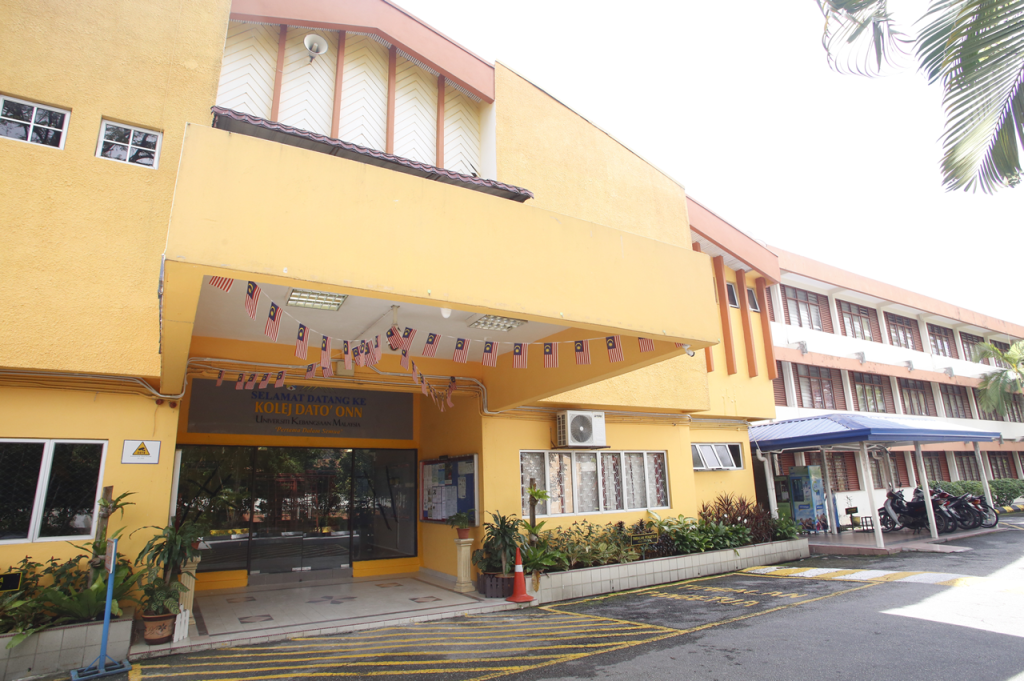

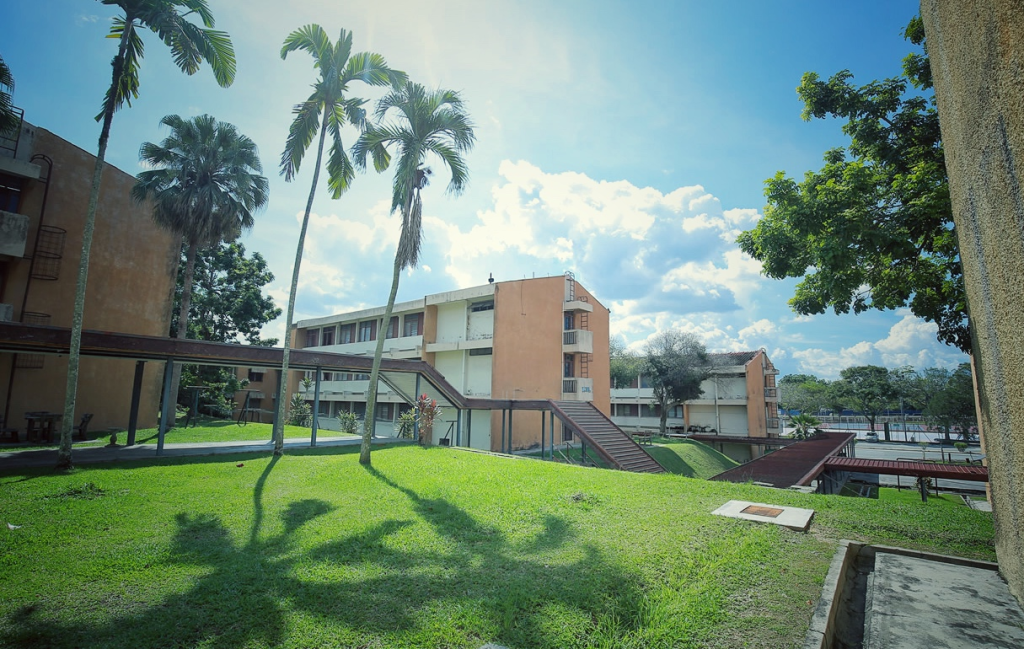
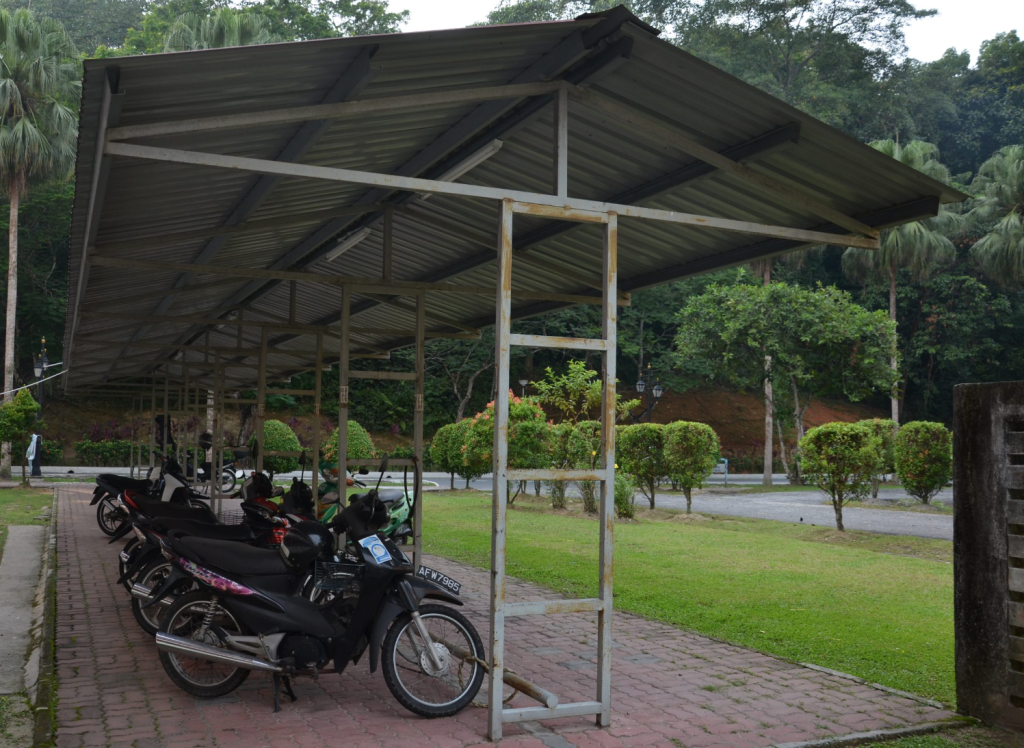
14. Tun Hussein Onn Residence
Tun Hussein Onn Residence was formerly known as Kamsis (Kampung Siswa) Dato ’Onn II until 1990, then changed its name to Kamsis Tun Hussein Onn. In line with the restructuring this Kamsis was later known as the Tun Hussein Onn Residence.
The use of the name Tun Hussein Onn is due to his involvement in the military as well as his contribution as a fighter for the dignity of the nation. Therefore, the use of the name Tun Hussein Onn is very appropriate for this college which is the residential college of the Reserve Officer Training Team (PALAPES).
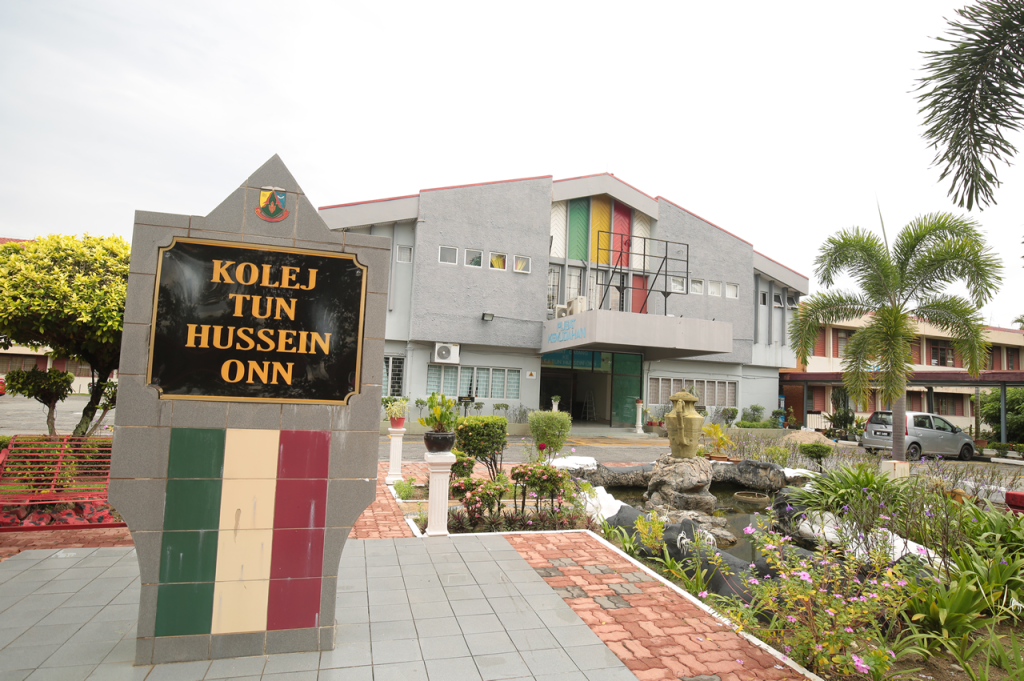
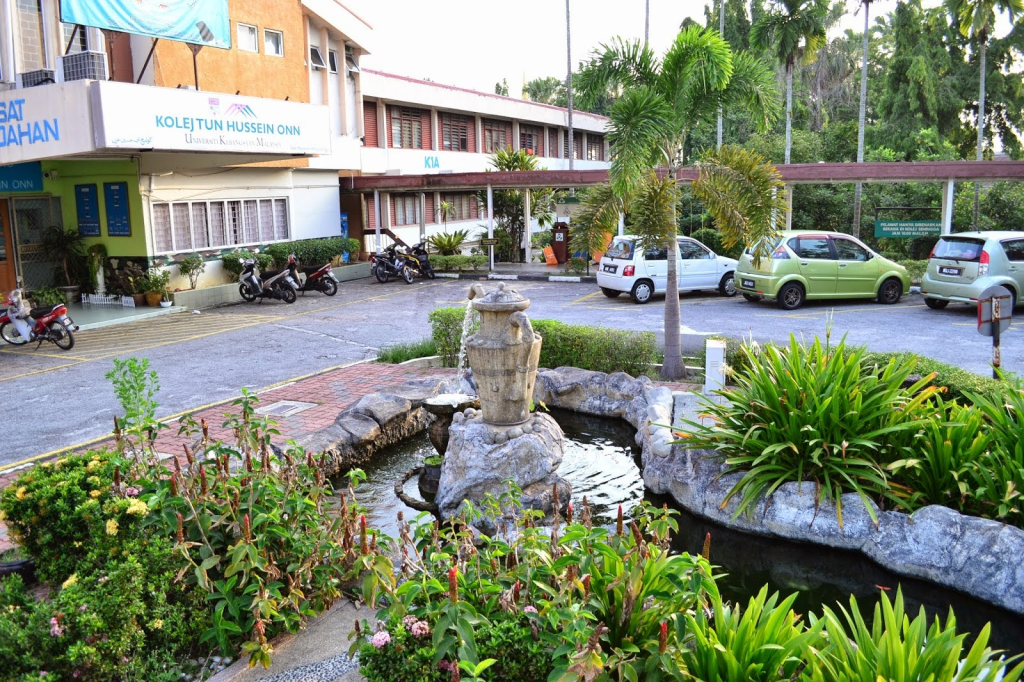
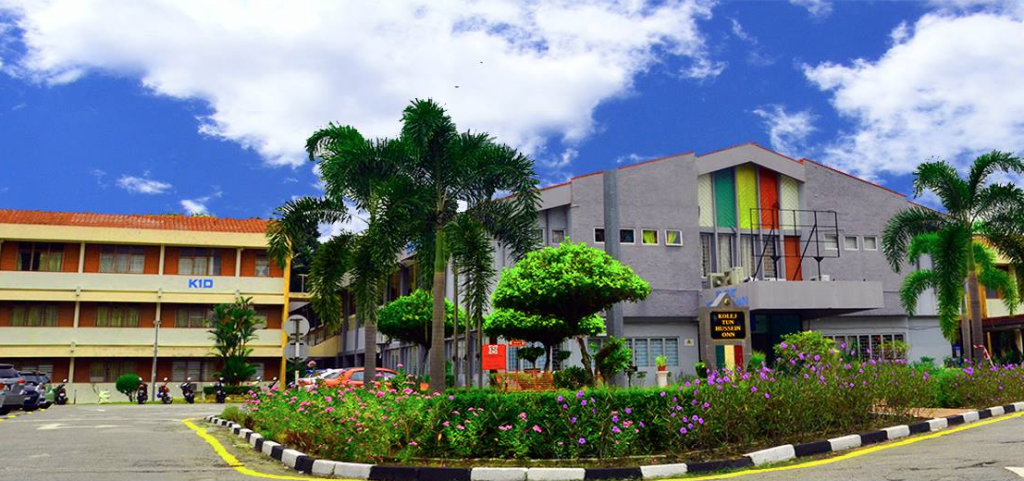

15. Aminuddin Baki Residence
In its early stages, Aminuddin Baki College was known as UKM’s Second Residential College and was opened for accommodation around 1971. This college is the oldest residential college in UKM after Dato’ Onn College.
Now, after reaching the age of 44, Aminuddin Baki College continues to thrive, standing with other residential colleges in UKM.
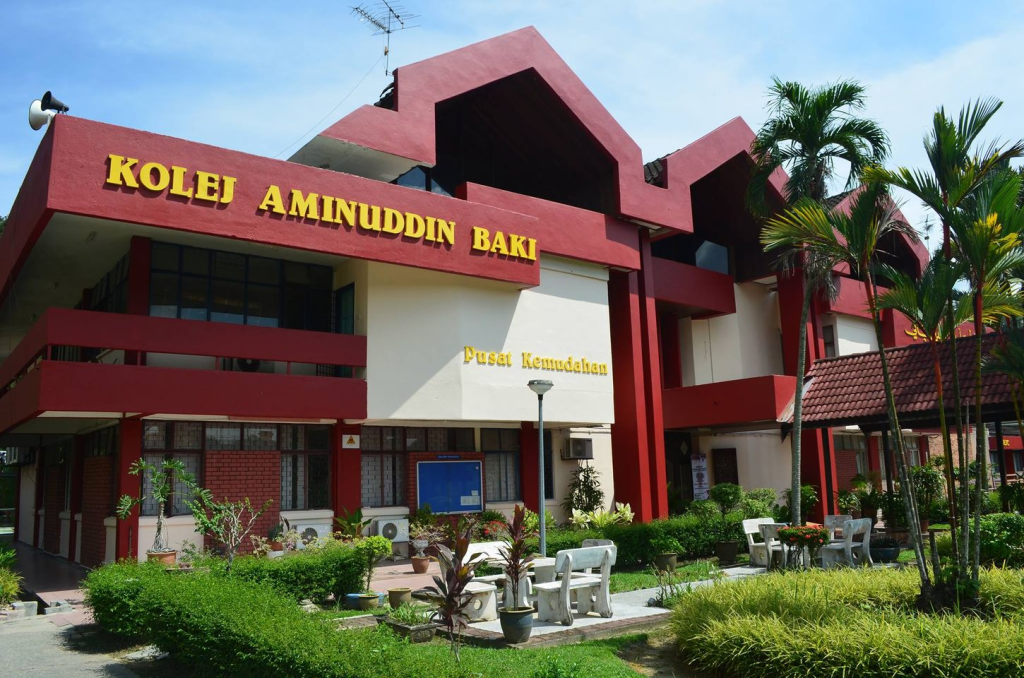
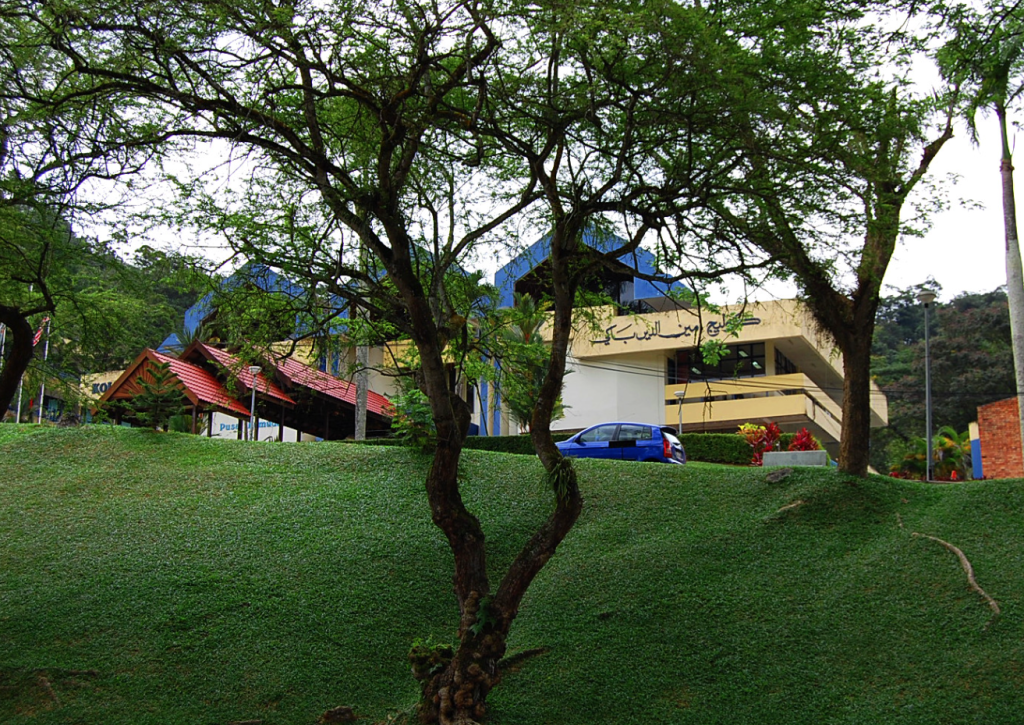

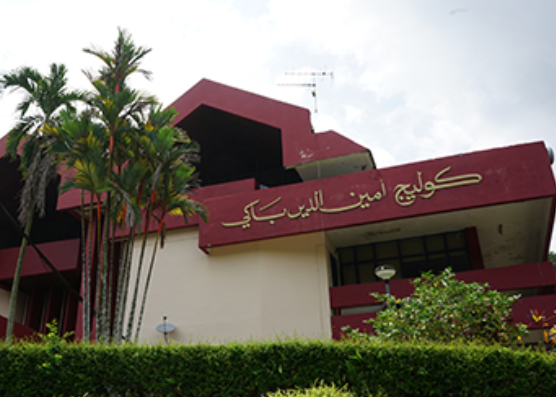
16. Ungku Omar Residence
Ungku Omar College was built on 23 June 1976 and completed on 7 January 1978 with an area of 220 square feet. Ungku Omar College has four dormitory blocks, 23 dormitory blocks and three dormitory blocks that can accommodate a total of 1024 residents.
With the acronym KUO, this college is named after a national medical figure – the late Prof. Dato’ Dr. Ungku Omar bin Ahmad.
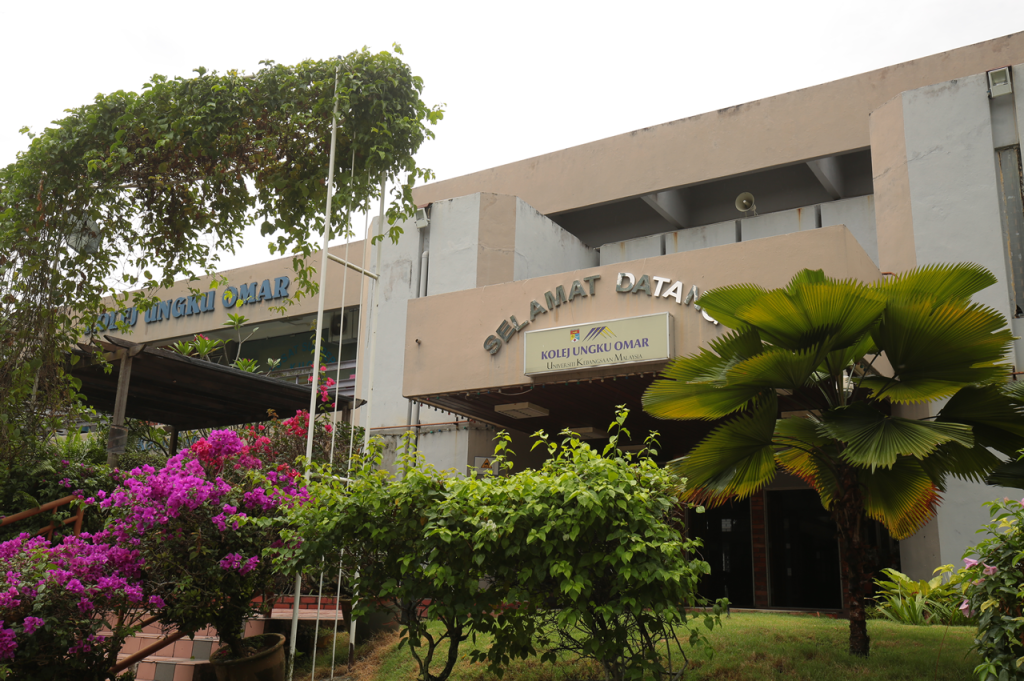



Museums & Galleries
UKM offers public access to museums, exhibition spaces, galleries, and a variety of art and artifacts. In total, there are 18 museums and galleries across the UKM campus, each showcasing diverse collections and research materials from various fields. Among these is the Academic Heritage Museum, dedicated to preserving, collecting, conserving, and exhibiting university and national treasures. These artifacts hold great value in documenting the global changes over time, spanning from the past to the future
UKM Bangi Main Campus
- Tuanku Chancellor Gallery
- Academic Heritage Museum
- Litograph, Caricature and Manuscript Gallery, FSSK
- Malay Fashion Centre, FSSK
- Geological Museum, FST
- Malaysian National University Zoological Museum, FST
- Seed Bank of Universiti Kebangsaan Malaysia (UKMSB), FST
- Universiti Kebangsaan Malaysia Herbarium
- Centre for Insect Systematics, FST
- FKAB Gallery
- Tun Fatimah Hashim Gallery, PKW
1. Tuanku Chancellor Gallery
The Tuanku Chancellor Gallery is another new landmark on the beautiful campus. This gallery is a recording of the history of the establishment, development and excellence of the University for a period of three centuries. Since its establishment on 18 May 1970, every day that passes is history for UKM which has succeeded through various obstacles and challenges in its efforts to stand as a center of excellence in knowledge.




2. Academic Heritage Museum
The filling and layout of the museum collection is made in accordance with the institute’s memory concept for a higher education center which is a park of knowledge and information. In order to create a harmonious and cheerful museum atmosphere, the combination of yellow, brown and golden colors is the main choice.
The collection on display at the museum includes posters, photographs, artefacts, research results, a collection of professors’ inaugural lectures, publications, medals, certificates of appreciation, awards and recognition.


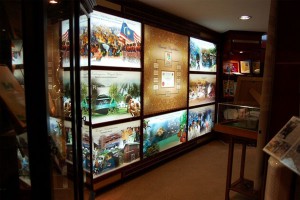

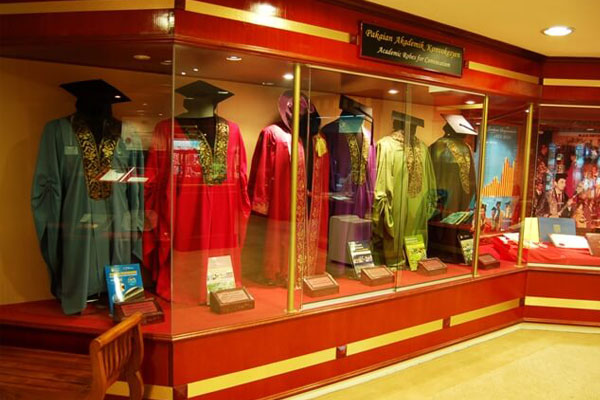
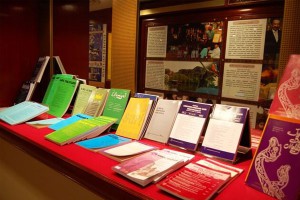
3. Litograph, Caricature, and Manuscript Gallery
This gallery displays collection that are never been cataloged by any research institutions. Lithograph, caricature, and manuscript are the main exhibits and they are important for understanding a country’s history and heritage.
The lithographs in the gallery are the works of colonial artists invited by the Portuguese, Dutch, English, and French colonial governments to record the historical events occurred in the Malay world. Among the subjects of the artworks are events, Malay society and culture, and the tropical flora and faunas found on the Malay Peninsula.
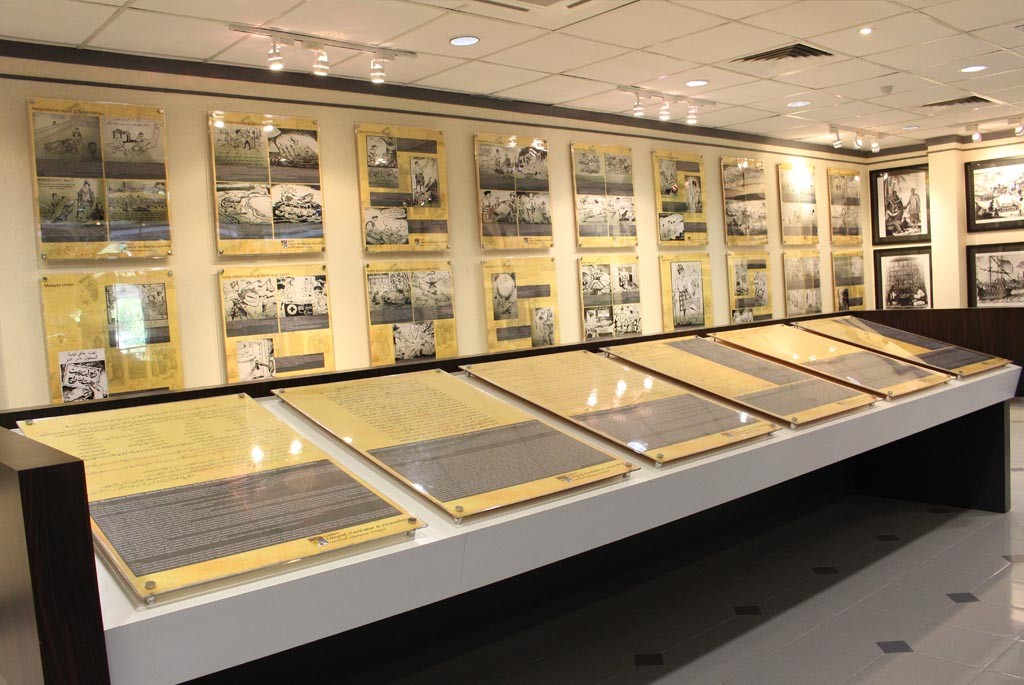
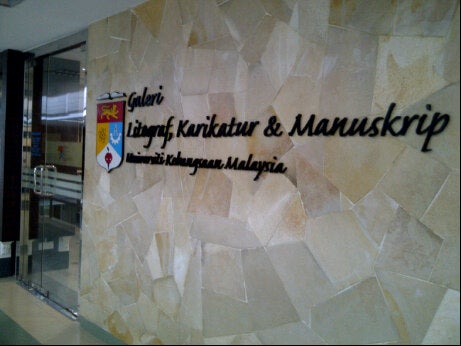
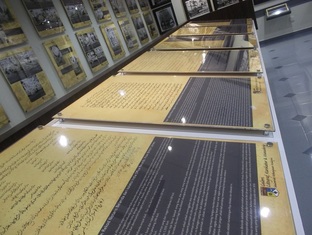
4. Malay Fashion Center, FSSK
Malay Fashion Center is a mini museum that exhibits traditional Malay fashion or clothing. This hall is used for teaching and learning sessions for students at Bitara Melayu.
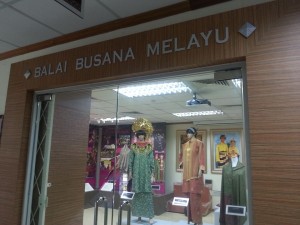
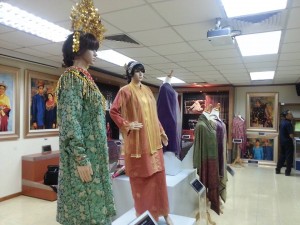
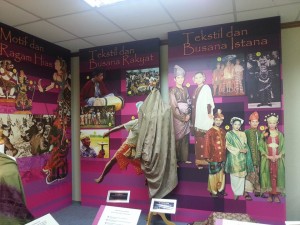
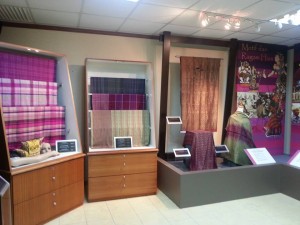
5. Geological Museum, FST
The Geological Museum was launched in 1990. Since the establishment of the Geological Department in conjunction with the establishment of Universiti Kebangsaan Malaysia itself in 1970, efforts to develop this museum took time to complete, especially the collection of local mineral, rock and fossil samples.
To date, the total number of samples collected is over 7000 samples covering the Geological Museum, Geological Gallery and Rock Archives.

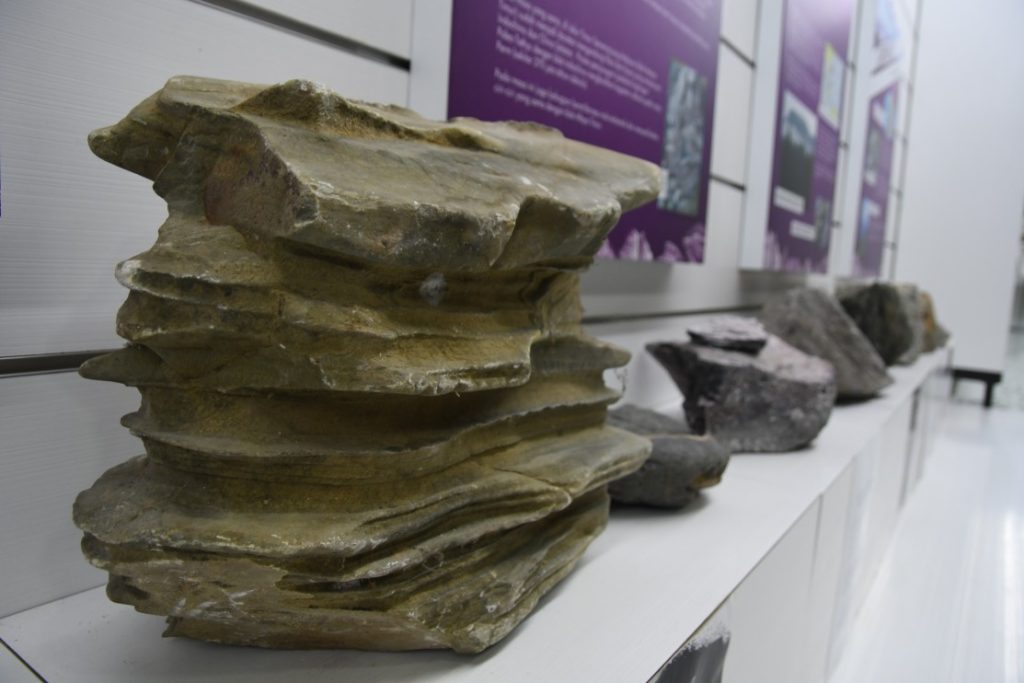


6. Malaysian National University Zoological Museum, FST
Malaysian National University Zoological Museum is one of the units under the Museum of Natural History, Faculty of Science and Technology. The museum is also a collection center and a vertebrate specimen repository, where to date, the museum has reached 6000 specimens as a whole.
The zoological museum has a diverse and unique collection of specimens of marine life, fish, amphibians, reptiles, birds and mammals.These specimens are preserved since the 80s and there are also several specimens from the 70s, where these specimens are preserved using several curing methods such as curing methods in formalin and alcohol solution of ethanol, taxidermy, bone and diaphonized.
The Zoological Museum was established as a collection center collection of vertebrates specimens as a result of research by researchers and UKM students and as a reference center for researchers and people who are interested in biodiversity diversity.



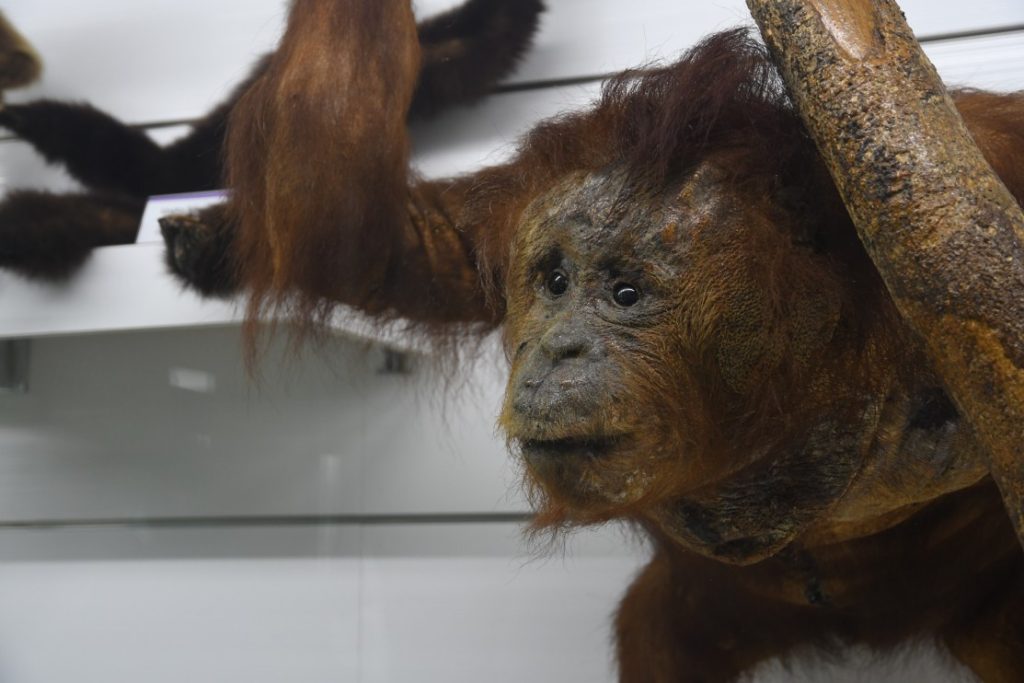
7. Seed Bank of Universiti Kebangsaan Malaysia (UKMSB)
Seed Bank of Universiti Kebangsaan Malaysia (UKMSB) is one of the units under the Natural History Museum, Faculty of Technology Science. This unit serves as a conservation center and preservation of plant genetic resources such as paddy, fruits and vegetables in particular used in research in UKM.
This unit keeps various types of crop access including traditional varieties, wild varieties, modern cultivars and biakasonic droplets. To date, for paddy crops alone, UKMSB has more than 100 traditional varieties, 50 modern cultivars, and more than 600 droplets. Additionally, UKMSB also has over 25 chilli accesses, 30 salad access, 30 access tails, 10 nut access, and various vegetable access and other fruits. These accessories are obtained through research activities, field work and seed sharing with individuals / research institutions / education from within and outside the country.
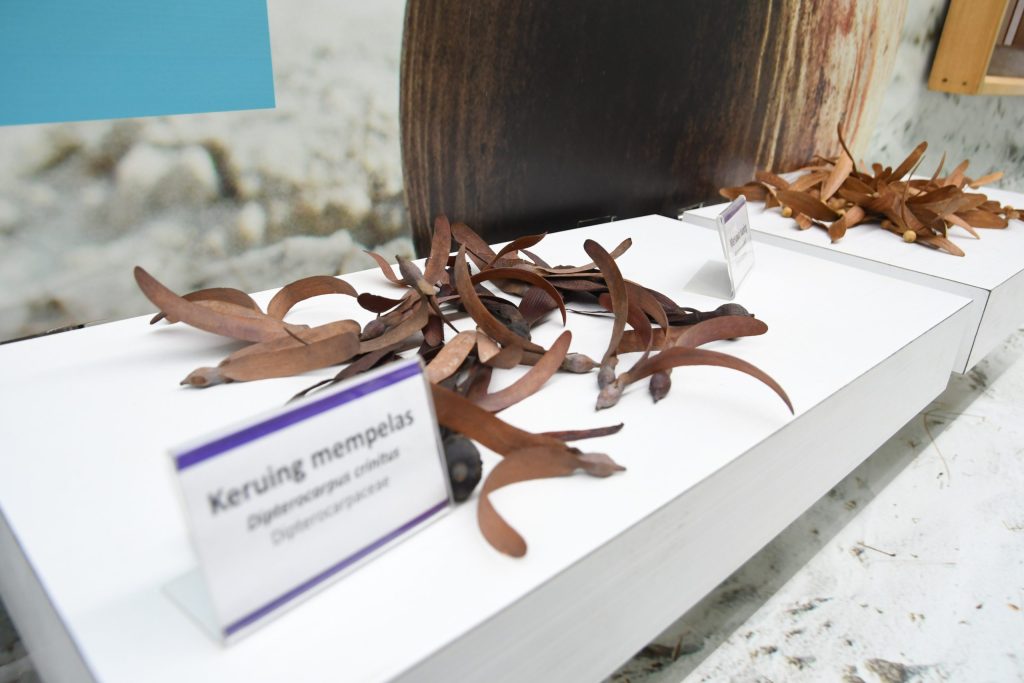
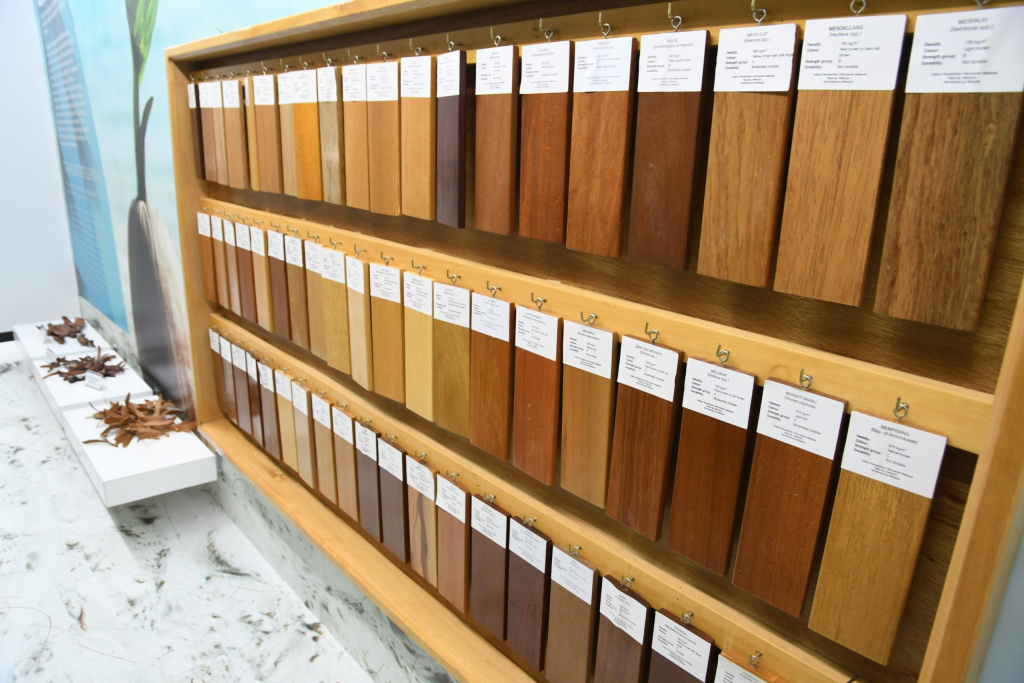

8. Universiti Kebangsaan Malaysia Herbarium
The Universiti Kebangsaan Malaysia Herbarium Bangi (UKMB Herbarium) was established in 1970, whose original building was in the Faculty of Science, Petaling Jaya. This unit was later transferred to the Biological Sciences Building, Faculty of Science and Technology, Bangi in 1982.
This herbarium is located on the 4th Floor and has an area of 259 square feet in the Biological Sciences Building under the management of the Center for Environmental Sciences and Natural Resources formerly known as the Ecosystem and Natural Resources Management Center at the Faculty of Science and Technology, UKM.
The UKMB Herbarium is part of UKM’s facility center used in teaching, education and research. The UKMB Herbarium has received visits from students, lecturers and researchers from various domestic and foreign institutions.
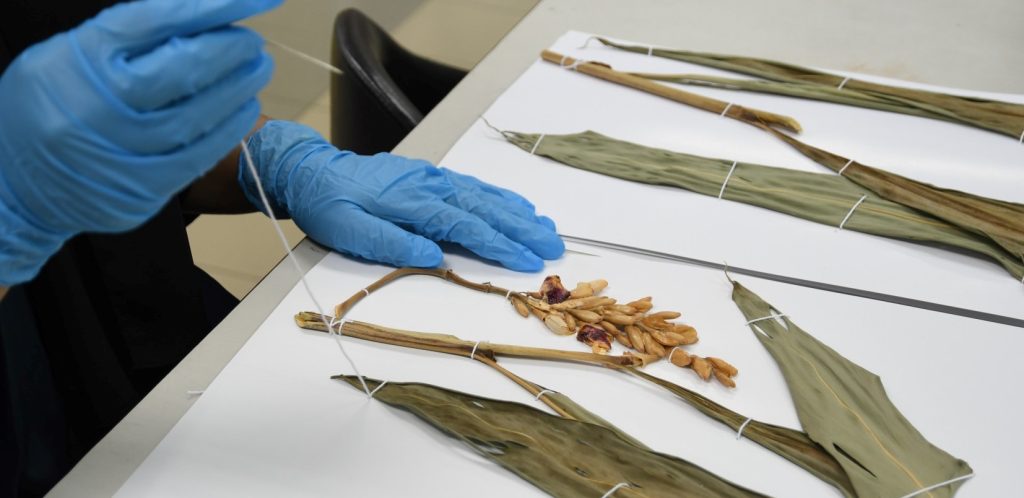
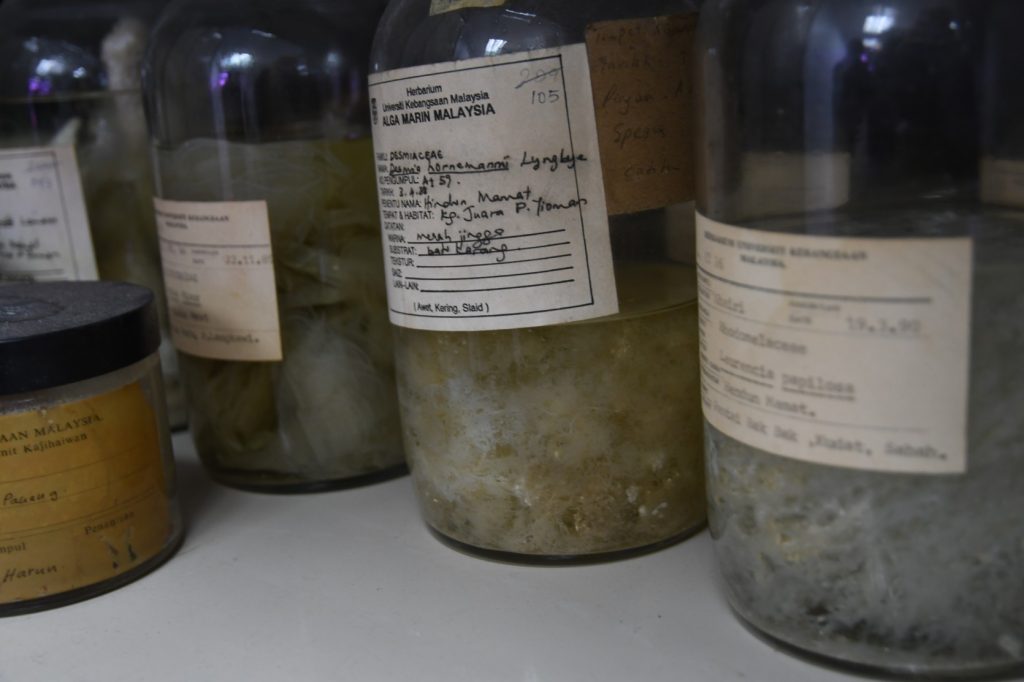
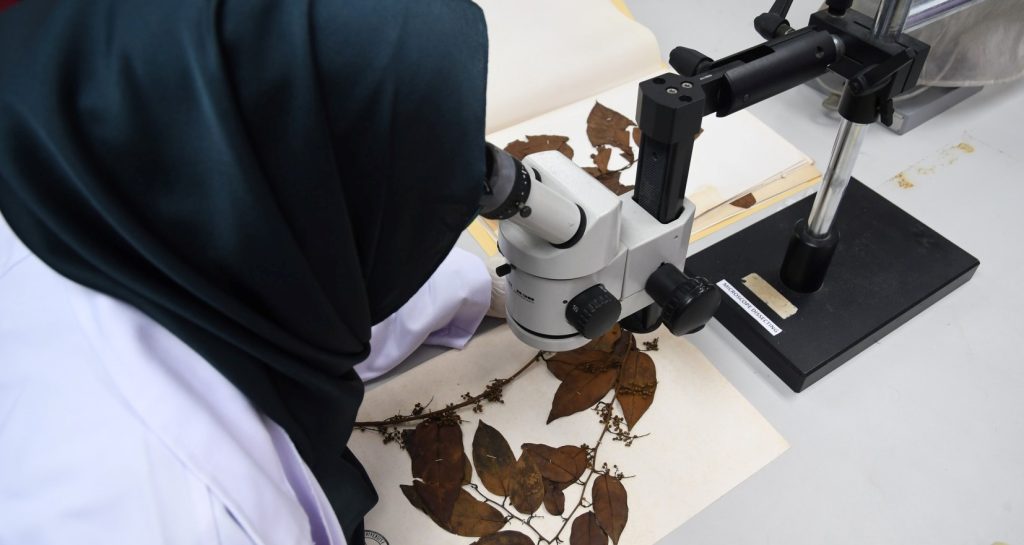
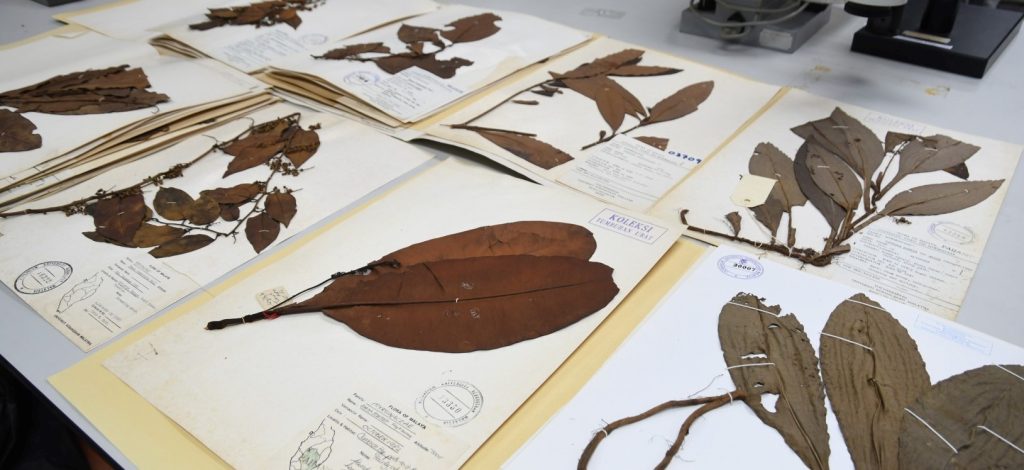
9. Centre for Insect Systematics, FST
Centre for Insect Systematics (CIS) of Universiti Kebangsaan Malaysia (UKM) is one of its kind in Southeast Asia. CIS is also one of the UKM’s centres of excellence. CIS was established in 1993 following the Agenda 21 of the Rio Declaration. Since its inception, the centre has collection of over 100,000 specimens, of which >120 are type specimens. CIS has its own world-circulated journal SERANGGA, which is dedicated to publication of research findings in insect systematics and diversity, particularly of Southeast Asia as well as other parts of the world.



10. FKAB Gallery
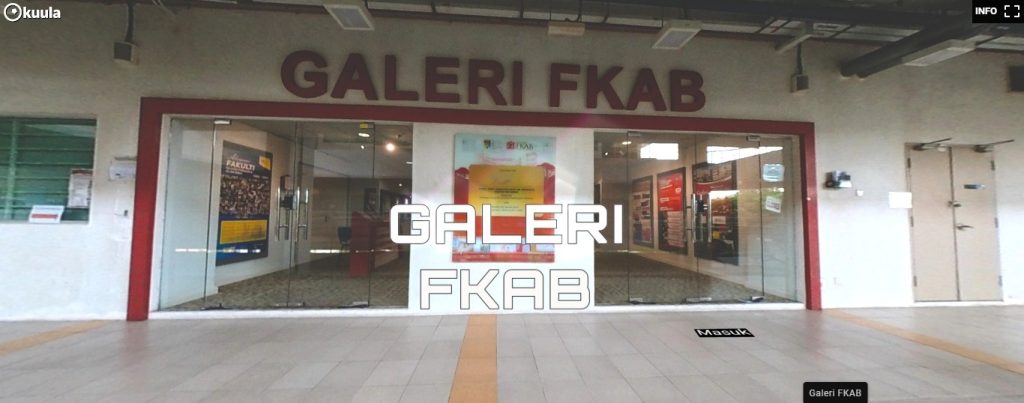
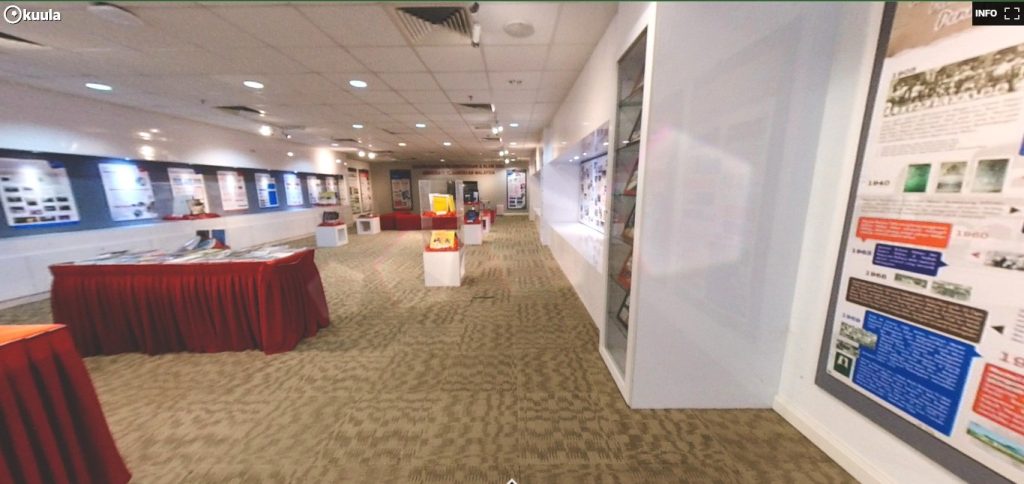
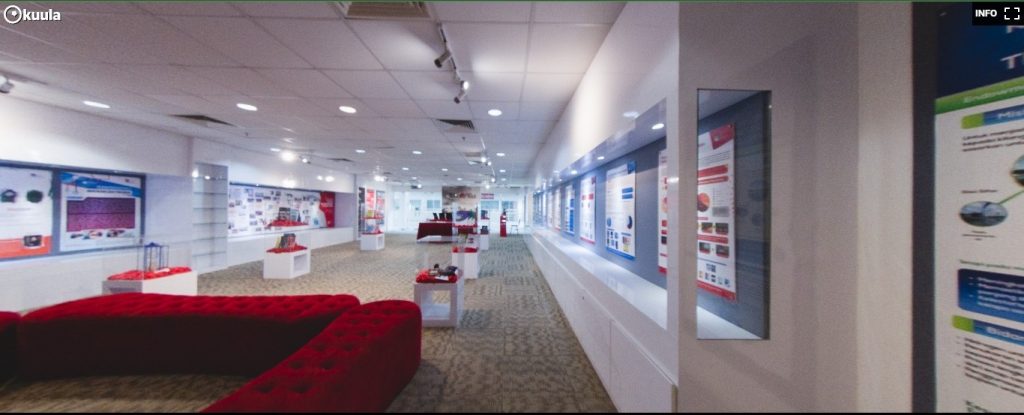
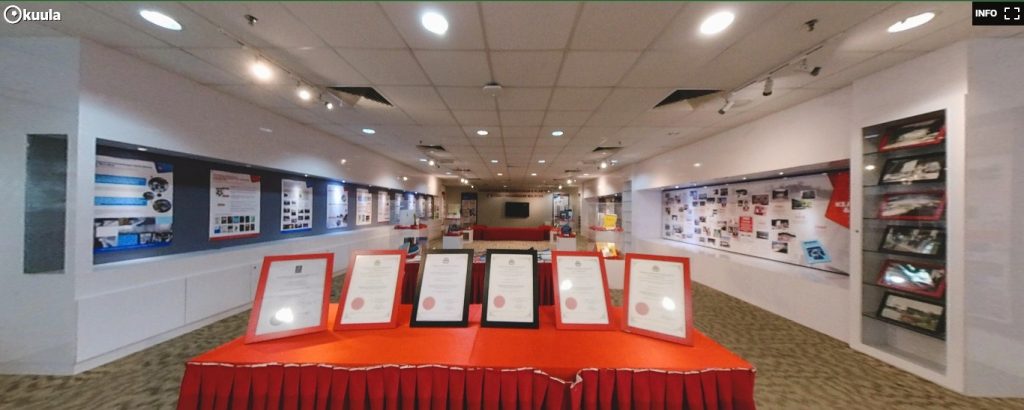
11. Tun Fatimah Hashim Gallery
The Tun Fatimah Hashim Gallery was established at Universiti Kebangsaan Malaysia to appreciate the services and contributions of a female national leader – Tun Fatimah Hashim. Tun Fatimah Hashim is the first woman appointed as a Minister in the Malaysian Cabinet. He held the portfolio of Minister of General Welfare from 20 May 1969 to the end of February 1973. Tun Fatimah Hashim has contributed a lot in an effort to fight for women’s rights in Malaysia through the UMNO Mothers’ Movement and the National Council of the Malaysian Women’s Organization (NCWO). This gallery displays Tun Fatimah Hashim’s personal collection, documentation and research materials about Tun Fatimah Hashim in an effort to preserve her treasures.
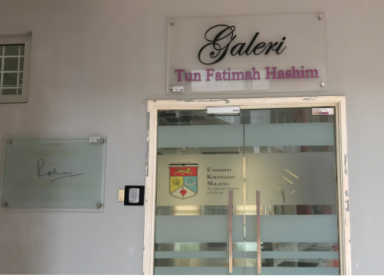
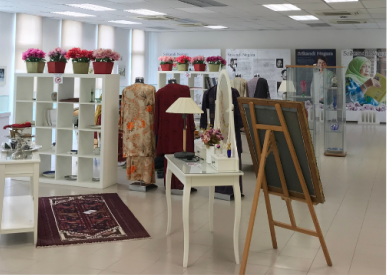
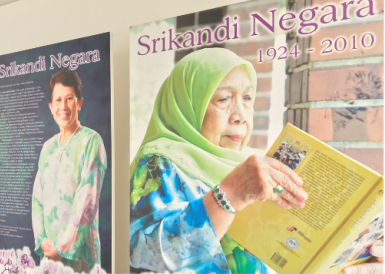
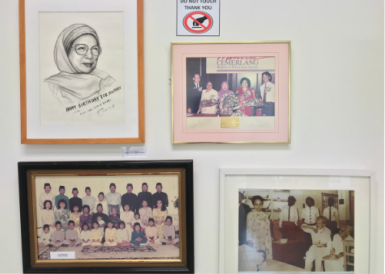
Cheras Campus
- Anatomy & Pathology Museum, FPER
- Parasitology & Entomology Gallery, FPER
- Physiology Gallery, FPER
1. Anatomy & Pathology Museum
The Anatomy Museum is located on the 3rd floor of the Pre-clinical Building, next to the faculty’s Pre-clinical library. The museum is shared with the Pathology Museum. The museum was established as one of the department’s efforts to diversify its teaching methods while fostering self-learning. Among the collections of specimens on display are a collection of plastic and jar specimens. To facilitate learning, specimens are displayed according to the body system starting from the whole body system, hands, feet, respiratory system, urinary system, endocrine system, reproductive system, cardiovascular system, thorax, abdomen and others. Some of the jar specimens were also painted and labeled to facilitate students to identify the structure.

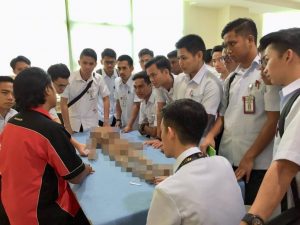

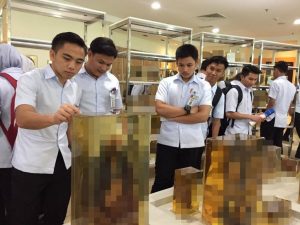
2. Parasitology & Entomology Gallery
The Entomology Laboratory conducts research based on entomological samples which are divided into Medical Entomology and Forensic Entomology. The laboratory is equipped with specialized equipment and chemicals for entomological research and slide preparation. Apart from that, this laboratory is also a laboratory for preparing equipment for entomology field work. All materials and equipment for entomology field work can be found in this laboratory.
3. Physiology Gallery
The Department of Physiology was established in 1970 with the establishment of the Faculty of Medicine, Universiti Kebangsaan Malaysia. At the beginning of the establishment, the Department of Physiology was located at Jalan Dr. Latif, Kuala Lumpur. When the permanent faculty building was completed in 1978, the Department of Physiology was located on the 4th floor, Jalan Raja Muda Abdul Aziz, Kuala Lumpur. In July 2014, the Department of Physiology was moved to the Pre-Clinical Building at Chancellor Tuanku Muhriz Hospital, UKM Medical Center, Cheras, Kuala Lumpur. The administration section is on the 18th Floor, while the laboratory & research section is on the 9th Floor.
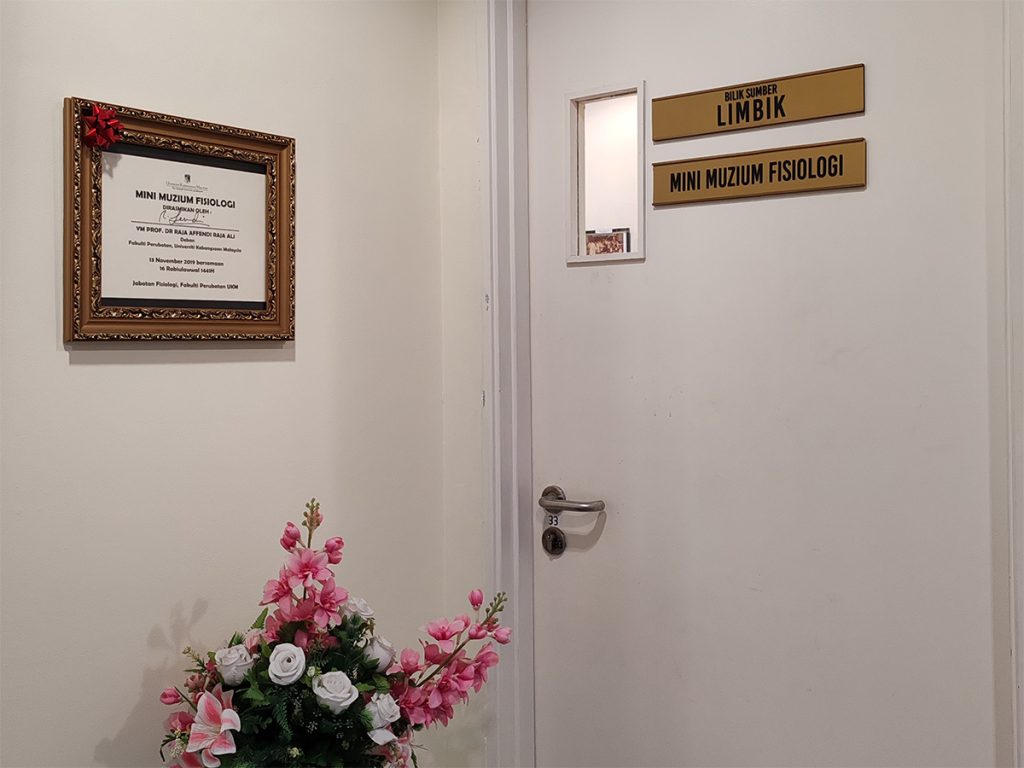
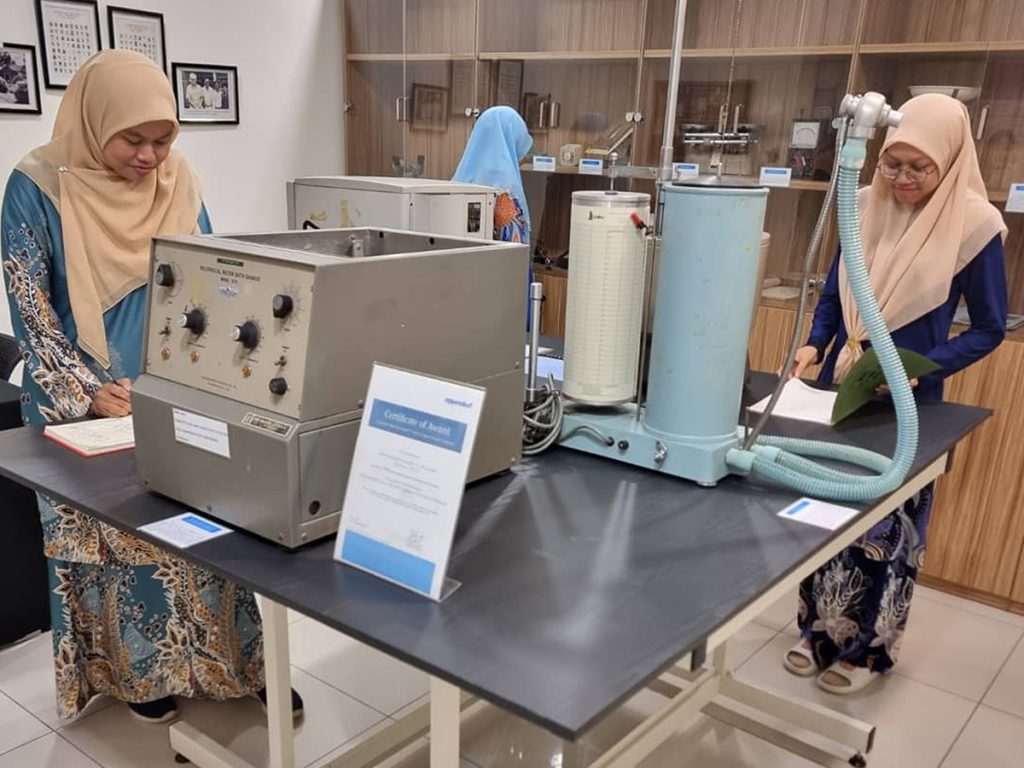
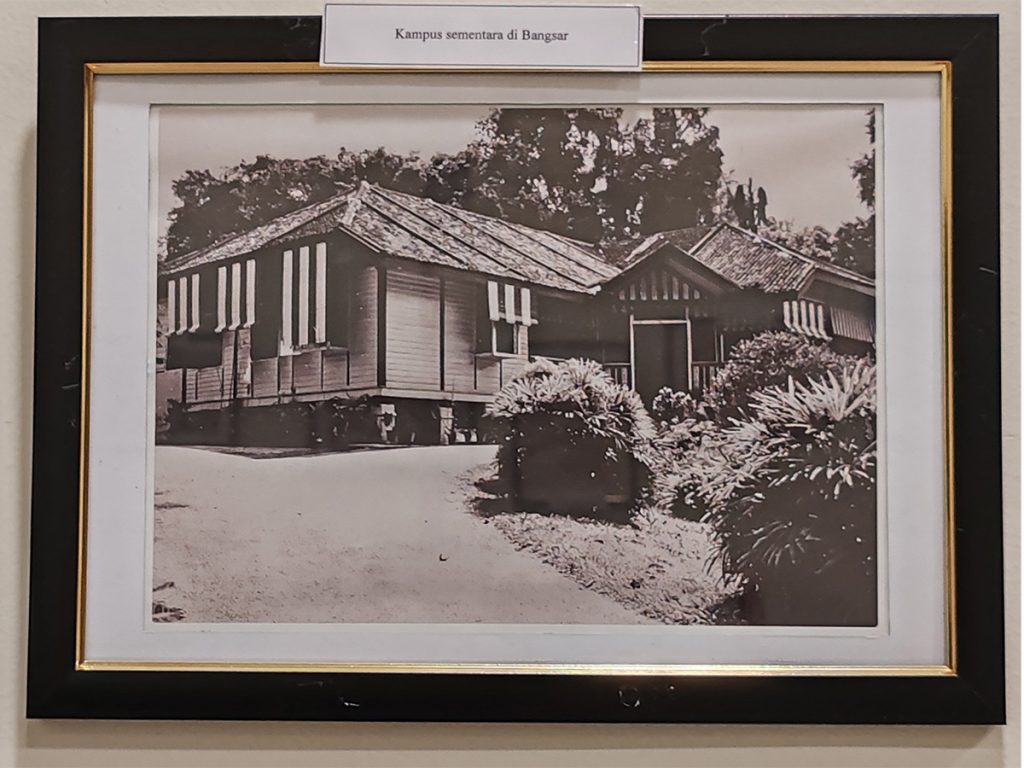
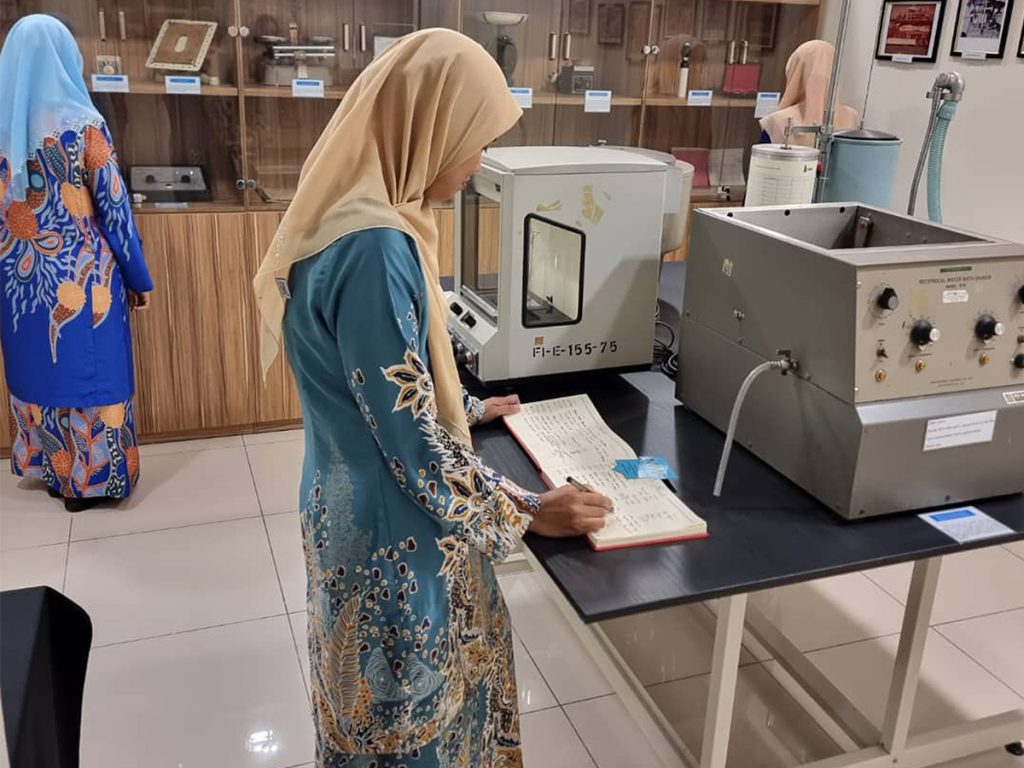
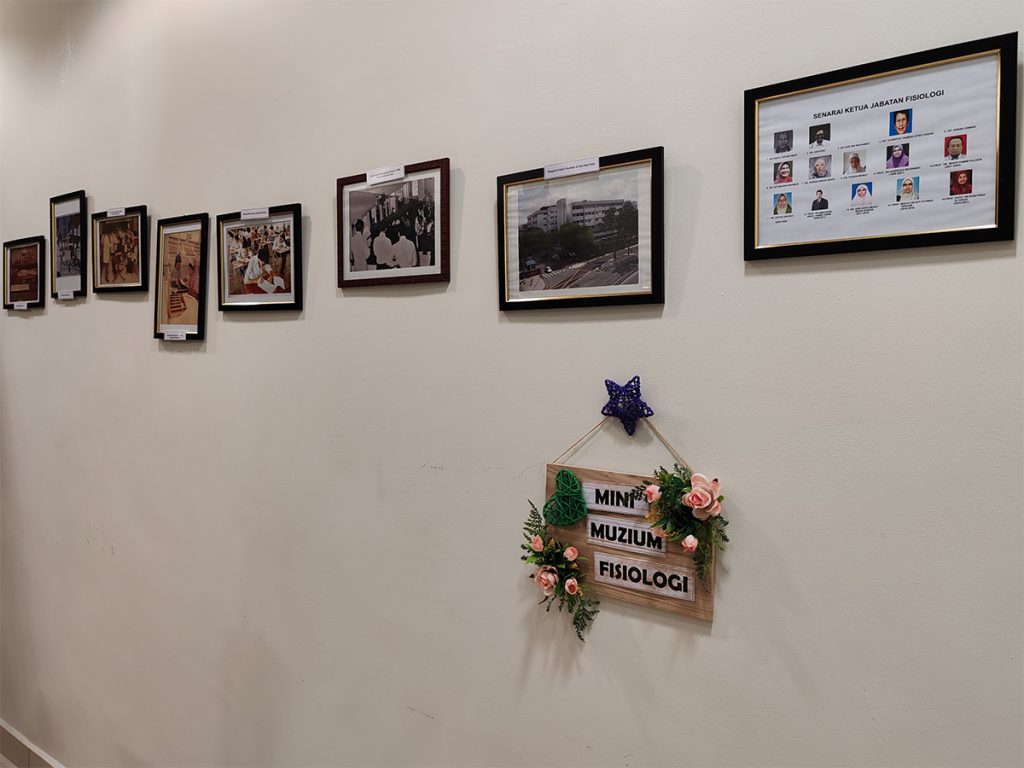
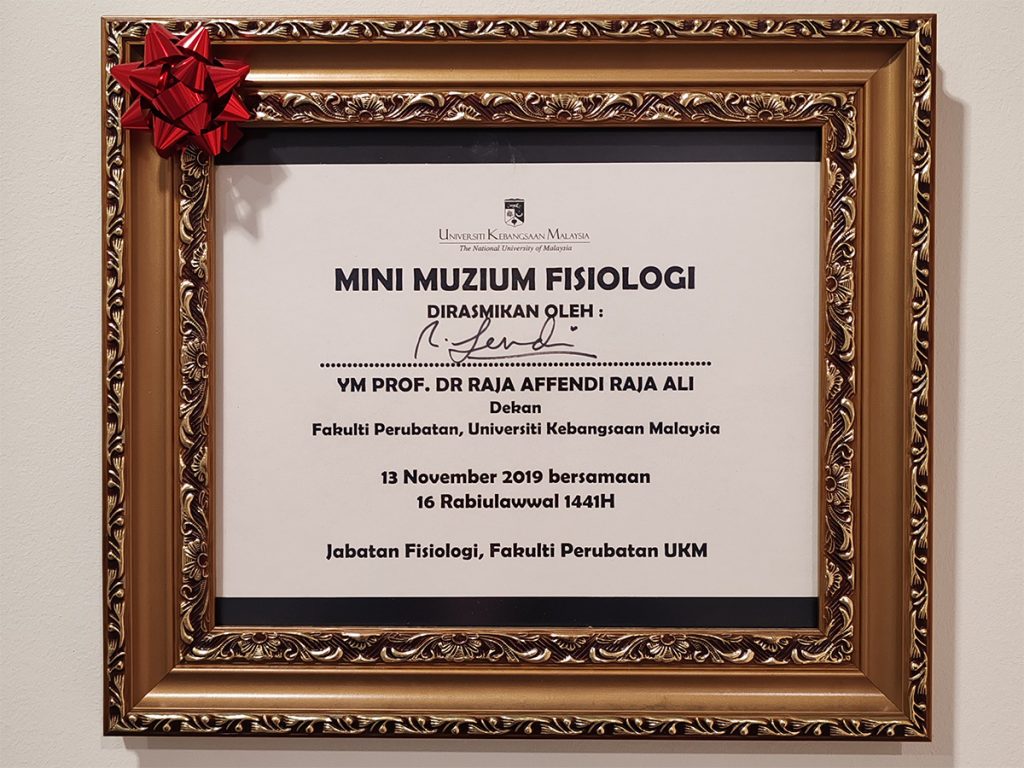
Natural Laboratory
- Langkawi Research Center Gallery, Kedah
- UKM Marine Ecosystem Research Centre (EKOMAR), Mersing, Johor
- Chini Lake Research Center, Pahang
1. Langkawi Research Center Gallery
The Langkawi Research Center (PPL) is located at Tuanku Abdul Halim Mu’adzam Shah Campus, Langkawi UNESCO Global Geopark. Langkawi Research Center is a focused center under UKM’s Institute of Environment and Development (LESTARI), responsible for carrying out research and academic services related to integrated heritage conservation and geopark development.




2. Marine Ecosystem Research Centre (EKOMAR)
Realizing the significance of marine resources and technology in Malaysia, Universiti Kebangsaan Malaysia through the Faculty of Science and Technology has established the Marine Ecosystem Research Centre (EKOMAR) to conduct research related to the marine ecosystem and resources. EKOMAR has been established not only to benefit studies on marine sciences and resources, but also to incorporate studies in the fields of management, social sciences, marine laws and engineering. It also aims to become a significant platform for enhancing knowledge and public awareness on the importance of marine ecosystem and control measures for the conservation of marine ecosystems.




3. Chini Lake Research Center
Realizing the significance of marine resources and technology in Malaysia, Universiti Kebangsaan Malaysia through the Faculty of Science and Technology has established the Marine Ecosystem Research Centre (EKOMAR) to conduct research related to the marine ecosystem and resources. EKOMAR has been established not only to benefit studies on marine sciences and resources, but also to incorporate studies in the fields of management, social sciences, marine laws and engineering. It also aims to become a significant platform for enhancing knowledge and public awareness on the importance of marine ecosystem and control measures for the conservation of marine ecosystems.
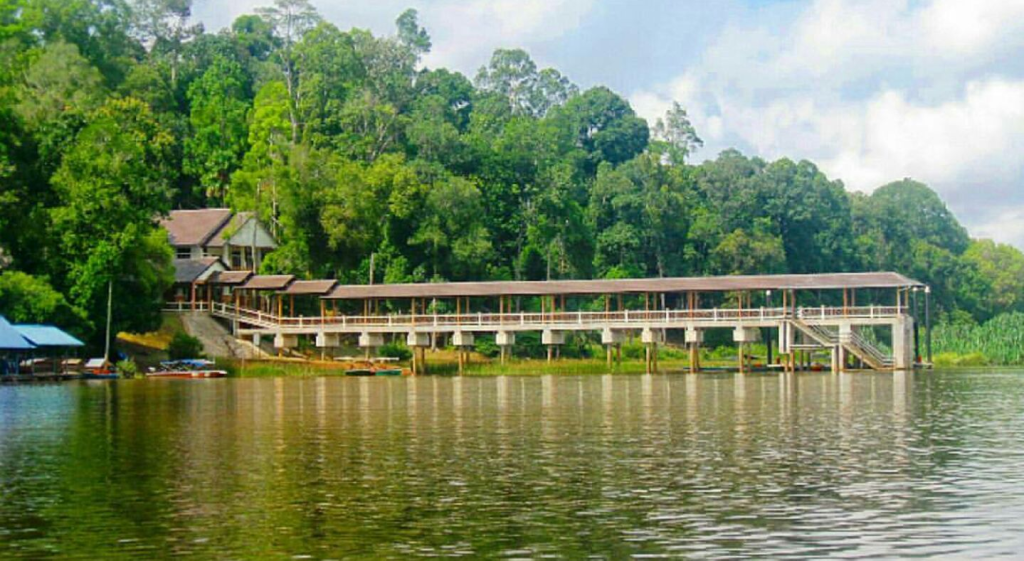
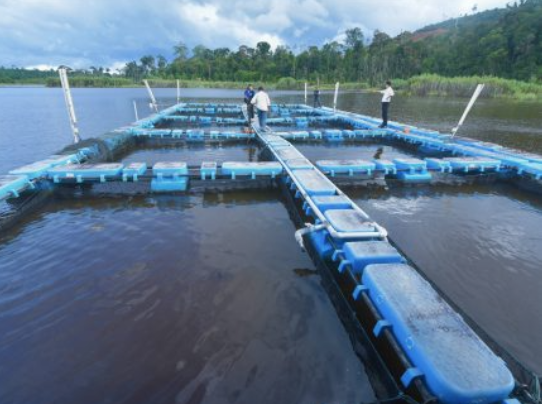


1. Faculty of Engineering and Built Environment (FKAB) Lake
Originally a swamp, the Faculty of Engineering and Built Environment Lake, with area of 1.8 hectares and depth 1.5 meters was converted to man-made lake in 1989. The water flows from the forested hills upstream into the lake and the lake water then flows into the Langat River. The surrounding area has been developed into a recreational park with footpaths, huts and offers sifting activities for students and campus residents. Apart from functioning as a catchment area to slow down the flow to the Langat River, it is also used as a water recreation area. This lake is also used by the Faculty of Education for basic canoeing courses.


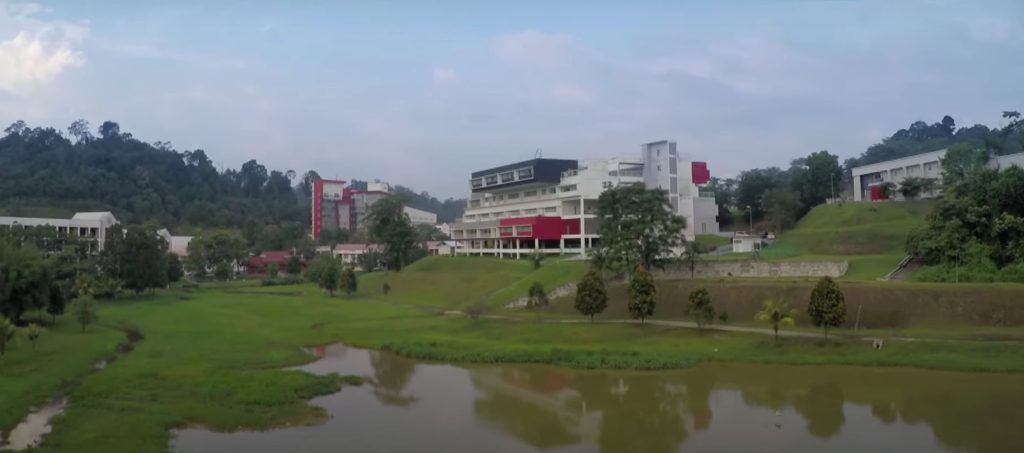

Pendidikan Alam Forest
Pendidikan Alam Forest (HPA) which aims to maintain the greenery of flora and fauna and nature. HPA is very suitable for camping activities and rugged activities that are based on forests with a challenging landscape. Located inside the UKM campus, Bangi and is part of the UKM Permanent Forest Reserve. On the south side is the PORIM-UKM palm oil plantation, on the east side there is the Animal House, Experimental Plot and Greenhouse, FST. While the Bangi Permanent Forest Reserve on the West side connects the HPA. The distance from the main entrance to HPA is approximately 4Km and is connected by a perfect road system.




Ghazali Lake
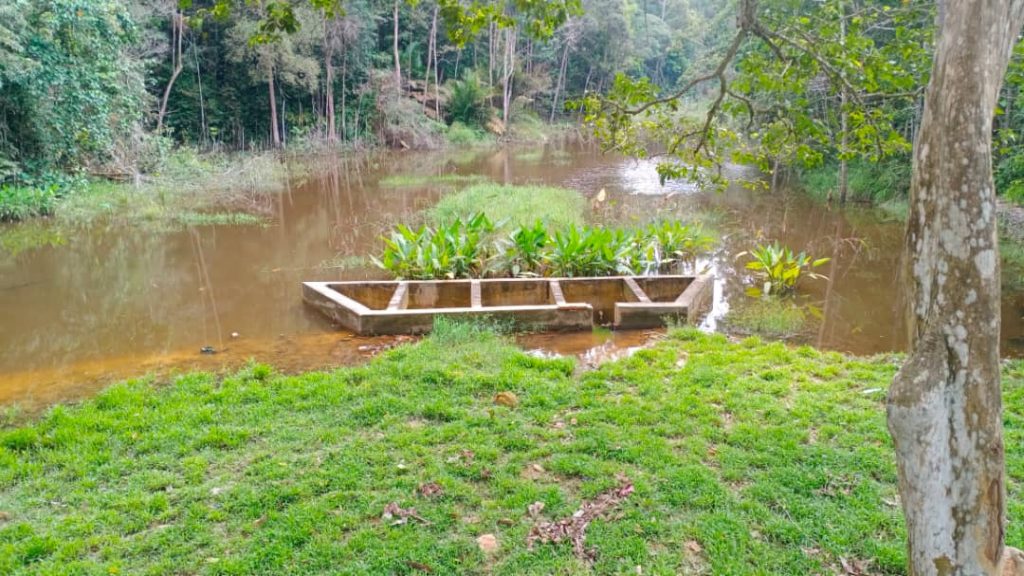
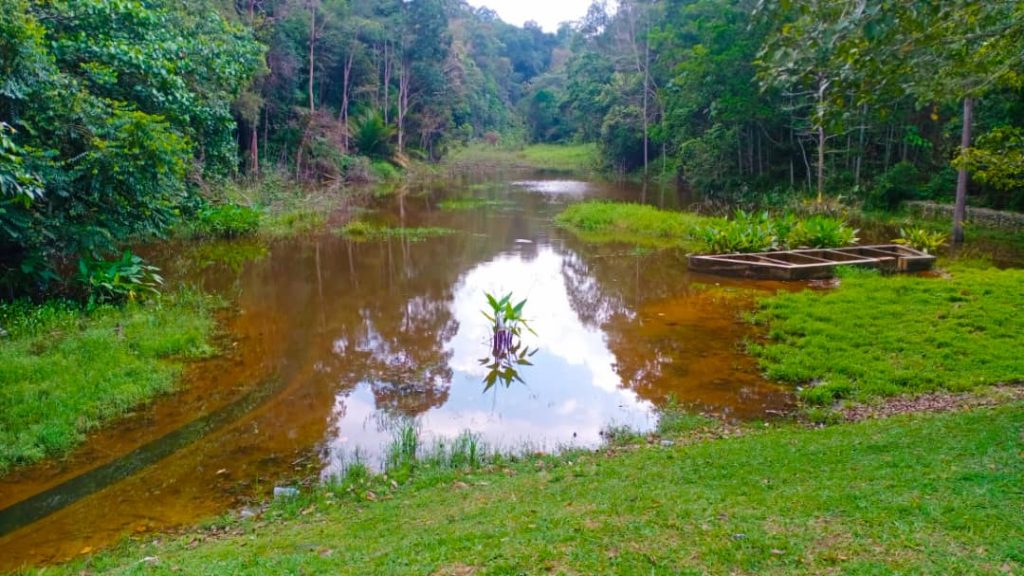
Pantun Garden
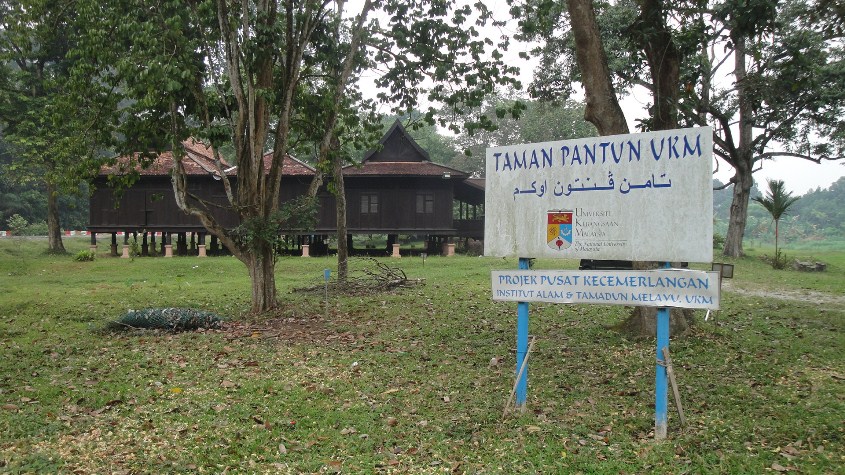
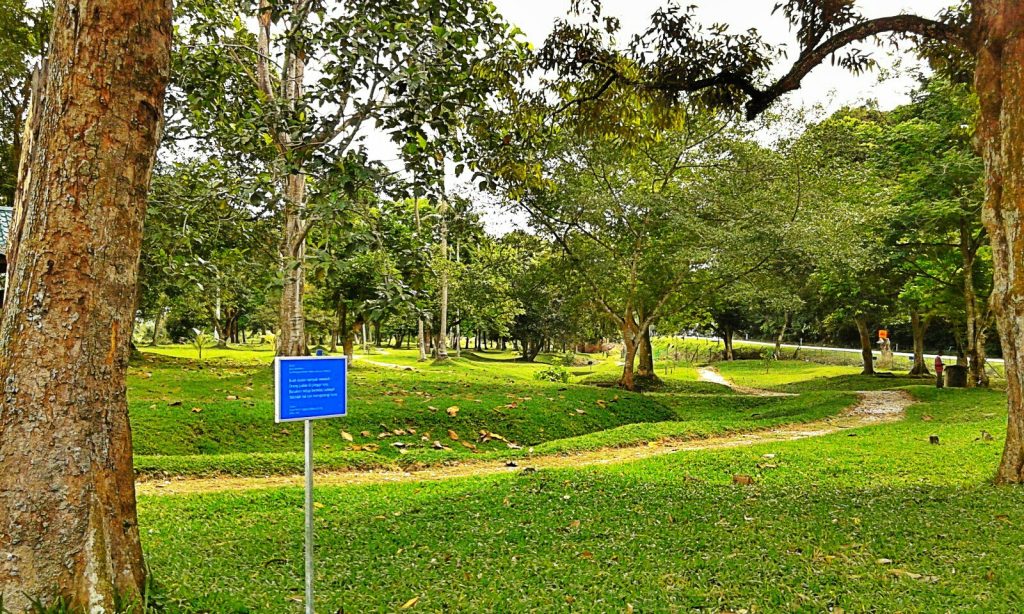
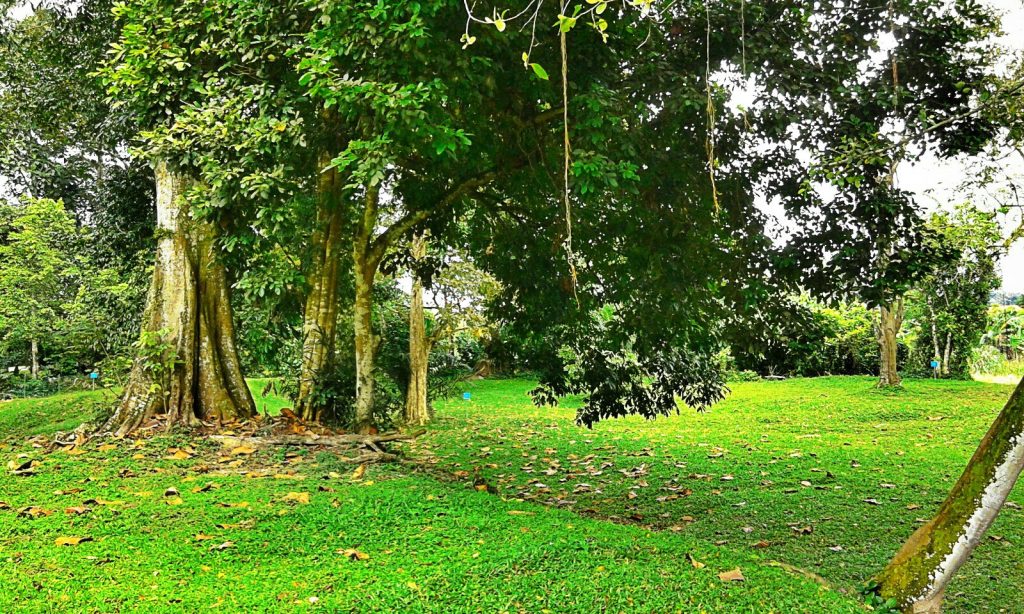
Sheikh Othman Sarawak Gallery
The Sheikh Othman Sarawak Chair is an initiative jointly established by UKM and the Islamic Council of Sarawak (MIS). His work began immediately after the success of the joint organisation of Nadwah Ulama Nusantara (NUN VIII) between UKM and MIS in Kuching on 23 to 25 October 2018. Most interestingly, the resolution of NUN VIII suggested the need for an Islamic scholarship chair to be established at IPT to deal with issues- issues related to civilization, progress and development of the Muslim community, especially for the state of Sarawak.
The Islamic scholarship chair was named the Sheikh Othman Sarawak Chair after the name of a prominent scholar who came from Bumi Kenyalang. The idea of establishing an Islamic Scholarship Chair at IPT was finally read by the Chairman of the Sarawak Islamic Council, Datu Haji Misnu Haji Taha as one of the resolutions of NUN VIII 2018 at the Official Adjournment Ceremony of NUN VIII on Thursday 25 October 2018 corresponding to 16 Safar 1440H in front of Tuan His Excellency Yang Di-Pertua Negeri Sarawak, Tun Pehin Sri Haji Abdul Taib Mahmud. The Sheikh Othman Sarawak Chair placed at the Faculty of Islamic Studies, UKM will carry out focused research activities on the SOCIO-ECONOMIC EMPOWERMENT OF THE ISLAMIC SOCIETY OF SARAWAK. This effort is seen to be in line with the 12th Malaysia Plan and the Sarawak Digital Economy Strategy 2018-2022.



Tun Ahmad Sarji Collection
UKM Pro-Chancellor Tun Ahmad Sarji handed over his personal collection to UKM for the storage and reference of the public. That personal collection consists of letters, minutes of meetings, gifts, historic photographs, posters and CDs he received during his service with the Government and the corporate sector. Tun Ahmad Sarji said he chose to place his collections at UKM because the university is an institution that appreciates the legacy.


ATMA Rare Collection
ATMA Rare collection is a Malay collection from the entire archipelago and the Malay-Polynesian world including the Malay Collection of Sri Lanka, South Africa, Surinam Malay Language Collection and rare materials in the Dutch language (information related to the Malay language and society in the 16th century)

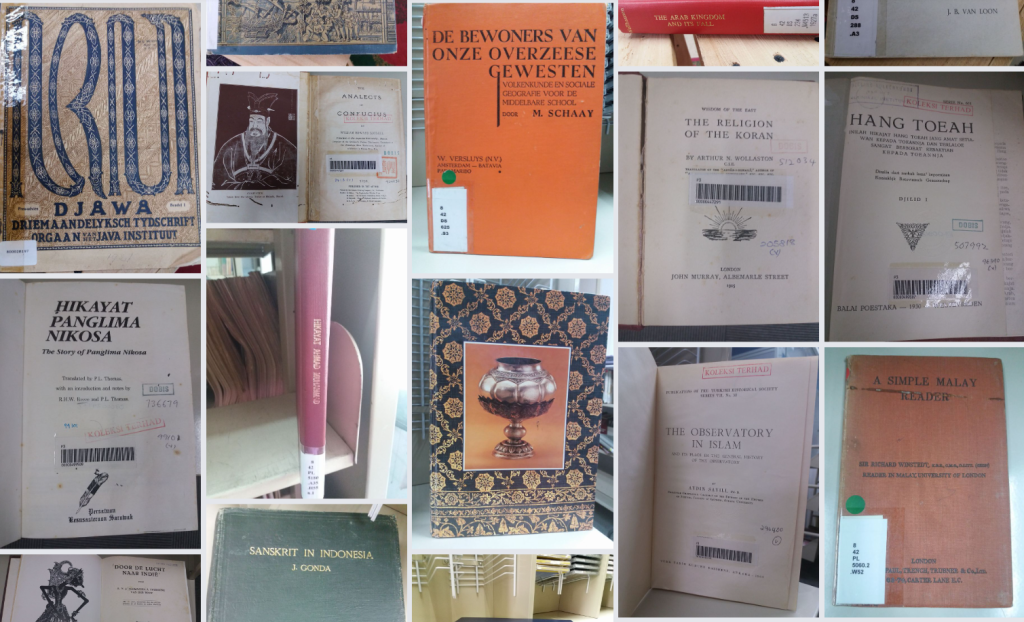
Elements of Green Building Implementation as Reflected in All Construction and Renovation Policies
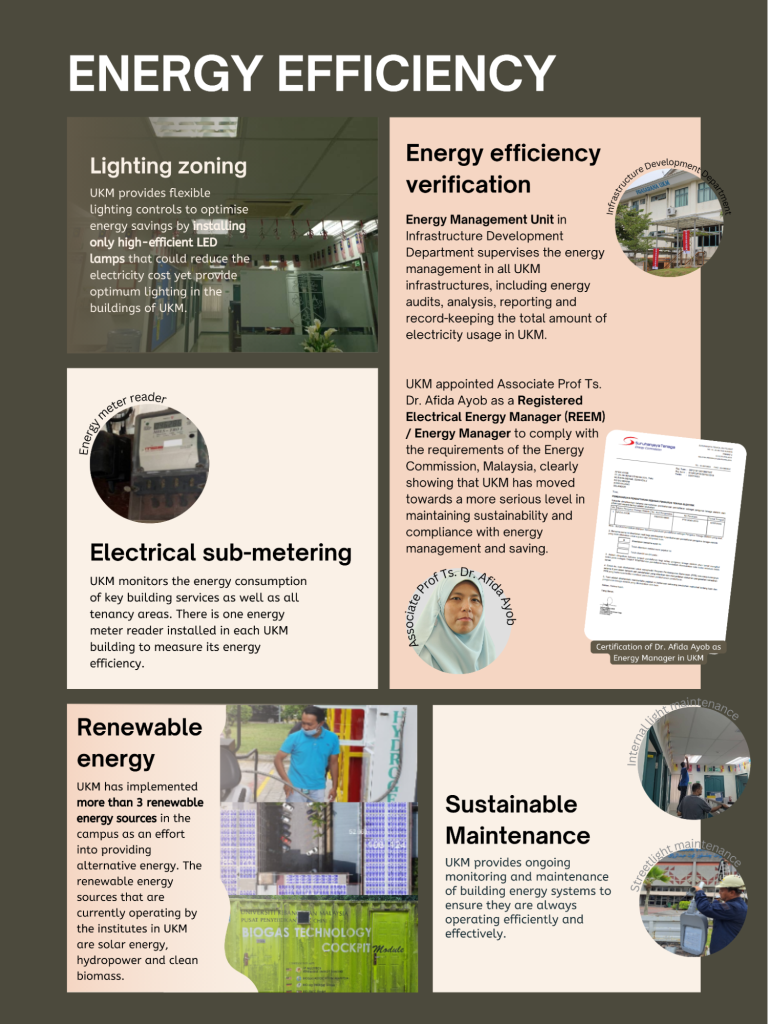
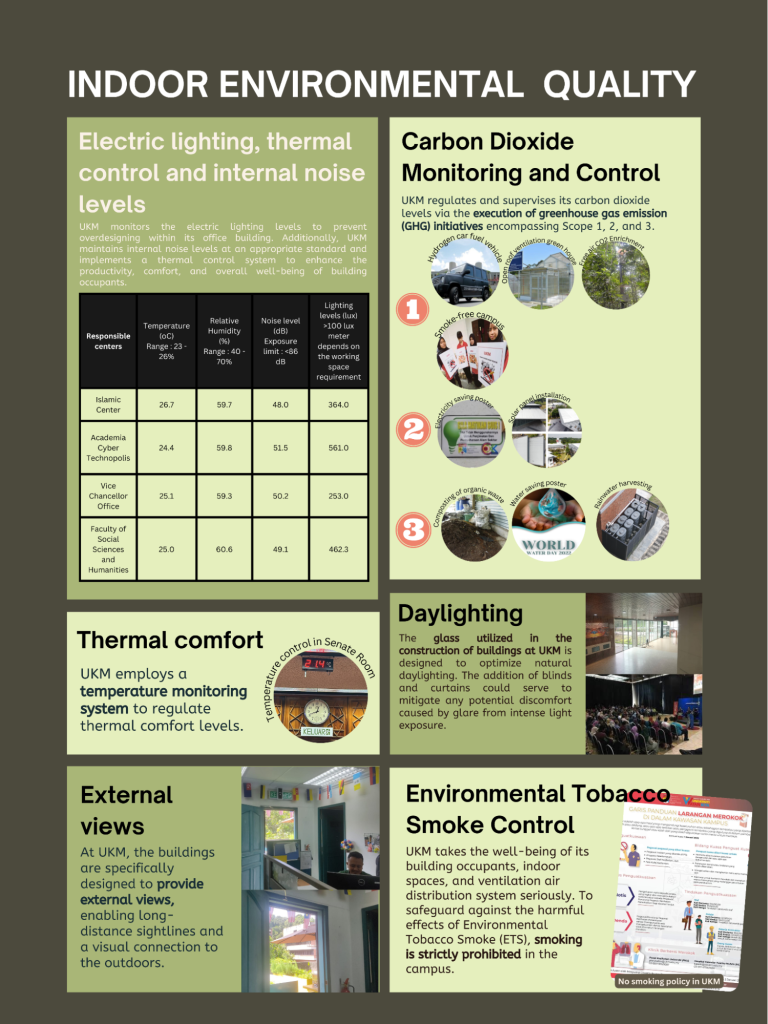
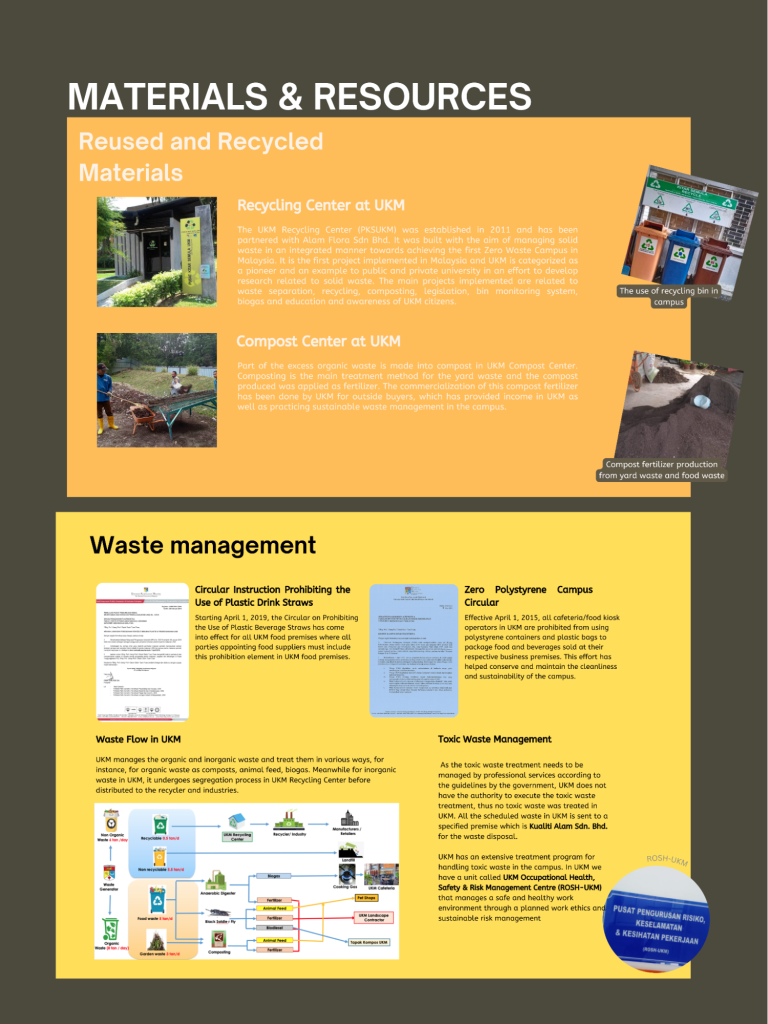
Akademia Siber Teknopolis (AST) & STEM UKM – featuring daylights element.
The construction featured by AST and STEM is very suitable with the element of sustainability ‘daylights’ where the building consisting of a glass base construction can provide a high percentage of lighting and can reduce the use of lights in the morning.
In addition, the selection of lamp specifications that lead to LED greatly contributes to savings and sustainability in a construction.


The picture shows – Construction of the building at UKM – Akademia Siber Teknopolis (AST) which exhibits the characteristics of glass construction and suitable for element daylights
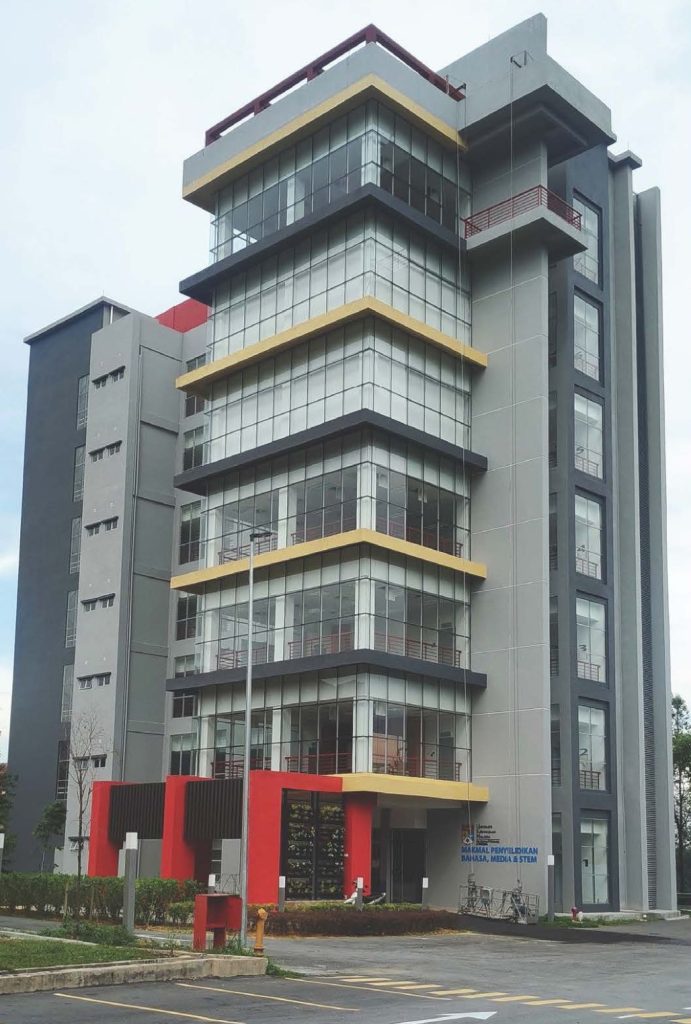
Masjid UKM – featuring natural ventilation element
With the construction of the mosque which has 3 levels and a relatively high ceiling height and is full around this area with fresh air come with door openings, it is clear that it exhibits the element of natural ventilation. Without the need for an air conditioning system, the construction of this mosque provides comfortable ventilation and makes every member of the parish who is inside calm to perform ibadah.
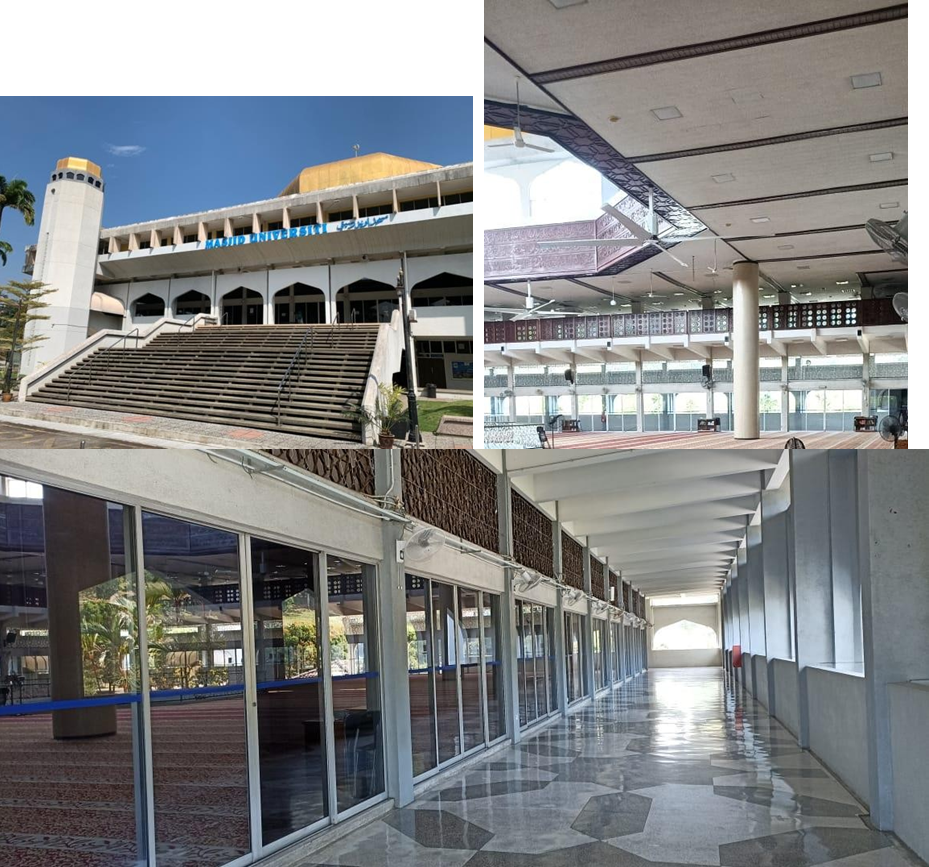
Masjid UKM
Energy Manager of UKM – Dr. Afida Ayob
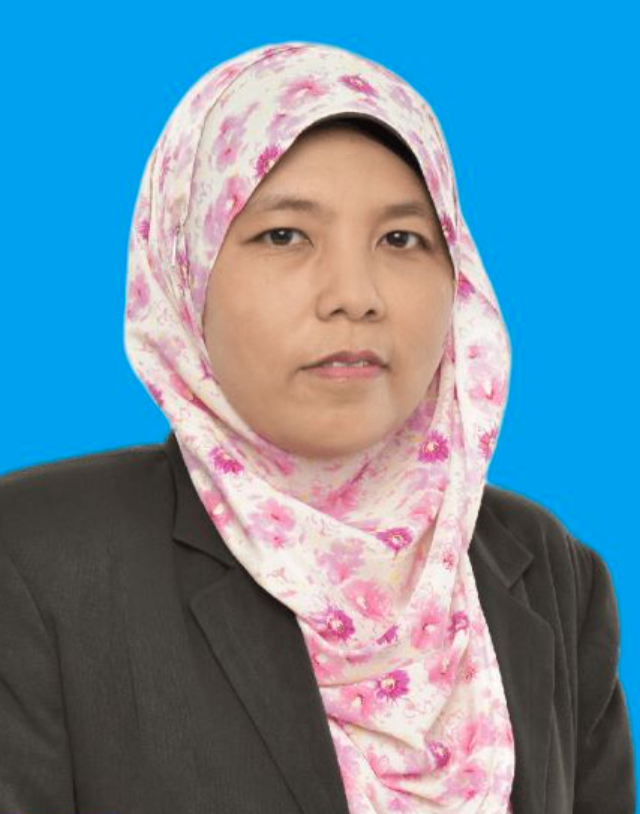
UKM has appointed and named Associate Prof. Ts. Dr. Afida Ayob as a Registered Electrical Energy Manager (REEM) / Energy Manager to comply with the requirements of the Energy Commission, Malaysia.
With this appointment, it clearly shows that UKM has moved towards a more serious level in maintaining sustainability and compliance with energy management and saving. This can be proven by the CV‘s attachment found on the last page of this paper.
Brownfield sites which will be developed into Laman Ilmu
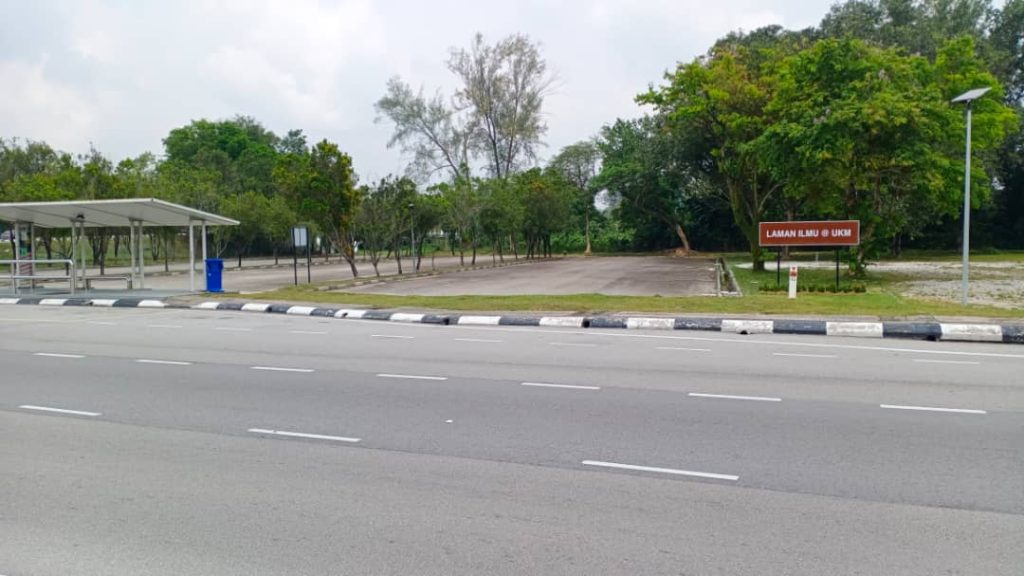
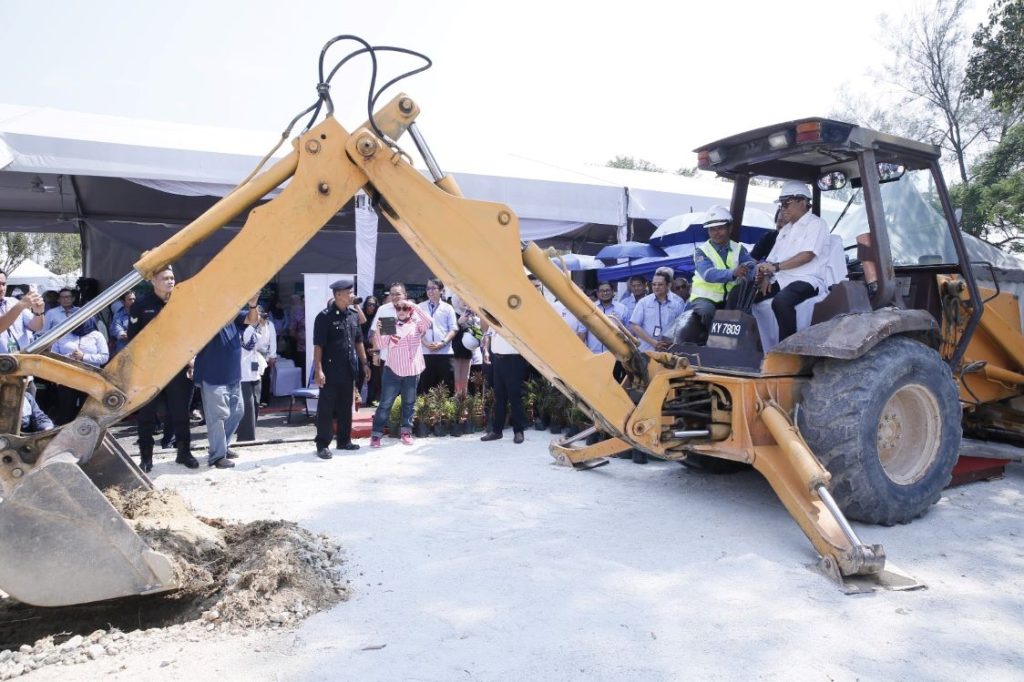
Sustainable Practices
As a sustainable-led university, UKM provides a number of sustainability commuting facilities within its compound. This is to accommodate the UKM community and reduce the need for commuting using vehicles such as car and motorcycle, which in turn would help to reduce the amount of carbon footprints. In addition, the sustainable commuting facilities offered by UKM is considering the user with disabilities. The facilities are shown as below:
Shuttle Services
There are 19 shuttle buses provided in UKM for students and staffs, as an iniatitive to reduce the number of invididual vehicles in campus.
Shuttle Bus UKM
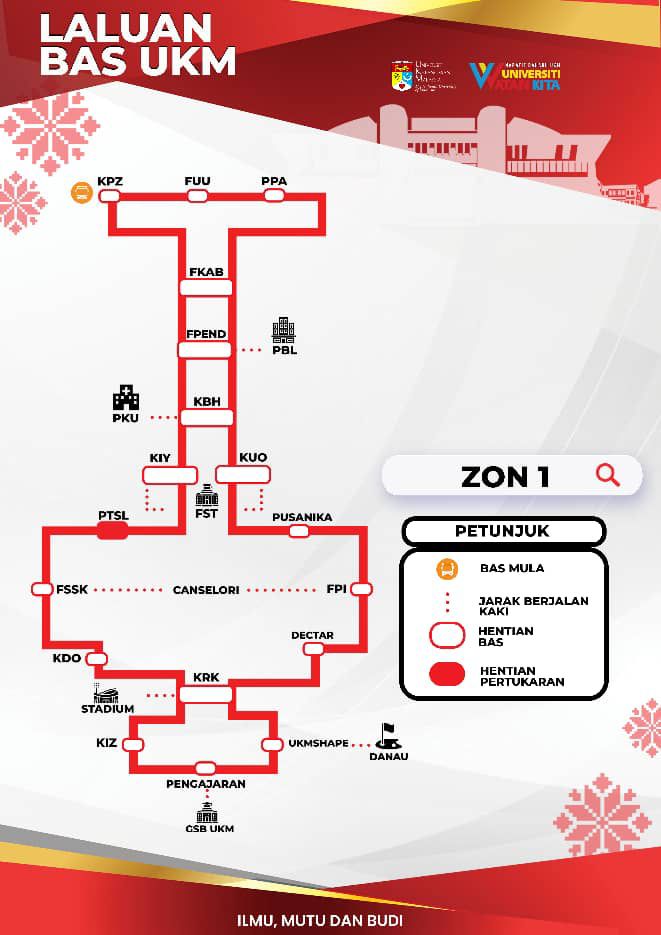
Starting from Kolej Pendeta Za’ba (KPZ) – through Faculty of Law (FUU), Center of academic Management (PPA), Faculty of Engineering and Built Environment (FKAB), Faculty of Education (F. PEND), Burhanuddin Helmi College (KBH), Ungku Omar College (KUO), passing the road along Chancellor Tun Abdul Razak Hall (DECTAR), Futsal Court, Rahim Kajai College (KRK), UKM Graduate Center, Premium Hostel Ibu Zain (KIZ), Dato’ Onn College (KDO), Faculty of Social Science and Humanities (FSSK), Tun Seri Lanang Library (PTSL), Aminuddin Baki College (KAB), Faculty of Science and Technology (FST), Ungku Omar College (KUO), Burhanuddin Helmi College (KBH), (F. PEND), (FKAB), (FTSM) back to Kolej Pendeta Za’ba (KPZ).

Starting from Kolej Keris Mas (KKM) – through Pusat Pengajian Siswazah (PPS), Kolej Antarabangsa Ibu Zain (KAIZ),Kolej Rahim Kajai (KRK), Kolej Dato’ Onn (KDO), Fakulti Sains Sosial & Kemanusiaan (FSSK), Perpustakaan Tun Seri Lanang (PTSL), Kolej Aminuddin Baki (KAB), Fakulti Sains & Teknologi (FST), Kolej Ungku Omar (KUO), Kolej Burhanuddin Helmi (KBH), Fakulti Pendidikan (F. PEND), Fakulti Kejuruteraan (FKAB), Fakulti Teknologi & Sains Maklumat (FTSM), Pusat Pengurusan Akademik (PPA), Fakulti Undang-Undang (FUU) – turning back and passing (PPA), (FTSM), (FKAB), (F. PEND), passing the road along Dewan Canselor Tun Abdul Razak (DECTAR), Gelanggang Futsal, Kolej Rahim Kajai (KRK), Kolej Antarabangsa Ibu Zain (KAIZ), Pusat Siswazah – back to Kolej Keris Mas (KKM).


Shuttle Bus UKM

Starting from Kolej Pendeta Za’ba (KPZ) – through Faculty of Technology and Information Science (FTSM), Center of academic Management (PPA), Faculty of Law (FUU), Faculty of Engineering and Built Environment (FKAB), Faculty of Education (F. PEND), passing the road along Chancellor Tun Abdul Razak Hall (DECTAR), Futsal Court, Rahim Kajai College (KRK), UKM Graduate Center, Premium Hostel Ibu Zain (KIZ), Dato’ Onn College (KDO), Faculty of Social Science and Humanities (FSSK), Tun Seri Lanang Library (PTSL), Aminuddin Baki College (KAB), Faculty of Science and Technology (FST), Ungku Omar College (KUO), Burhanuddin Helmi College (KBH), (F. PEND), (FKAB), (FTSM) back to Kolej Pendeta Za’ba (KPZ).

Starting from Kolej Keris Mas (KKM) – through Pusat Pengajian Siswazah (PPS), Kolej Antarabangsa Ibu Zain (KAIZ),Kolej Rahim Kajai (KRK), Kolej Dato’ Onn (KDO), Fakulti Sains Sosial & Kemanusiaan (FSSK), Perpustakaan Tun Seri Lanang (PTSL), Kolej Aminuddin Baki (KAB), Fakulti Sains & Teknologi (FST), Kolej Ungku Omar (KUO), Kolej Burhanuddin Helmi (KBH), Fakulti Pendidikan (F. PEND), Fakulti Kejuruteraan (FKAB), Fakulti Teknologi & Sains Maklumat (FTSM), Pusat Pengurusan Akademik (PPA), Fakulti Undang-Undang (FUU) – turning back and passing (PPA), (FTSM), (FKAB), (F. PEND), passing the road along Dewan Canselor Tun Abdul Razak (DECTAR), Gelanggang Futsal, Kolej Rahim Kajai (KRK), Kolej Antarabangsa Ibu Zain (KAIZ), Pusat Siswazah – back to Kolej Keris Mas (KKM).


UKM Commuter Station

Starting from Stesen Komuter UKM – entering Pintu Pagar Pavillion – through Kelab Golf Danau (DANAU), Kolej Keris Mas (KKM), Pusat Siswazah, Kolej Antarabangsa Ibu Zain (KAIZ), Kolej Rahim Kajai (KRK), Kolej Dato’ Onn (KDO), Fakulti Sains Sosial & Kemanusiaan (FSSK), Perpustakaan Tun Seri Lanang (PTSL), Kolej Aminuddin Baki (KAB), Fakulti Sains & Teknologi (FST), Kolej Ungku Omar (KUO), Kolej Burhanuddin Helmi (KBH), Fakulti Pendidikan (FPEND), Fakulti Kejuruteraan dan Alam Bina (FKAB), Fakulti Teknologi Sains Maklumat (FTSM), Kolej Pendeta Zaaba (KPZ), returning back through (FTSM), (FKAB), (FPEND), straight to Stesen Komuter UKM.

Starting from Stesen Komuter UKM – entering Pintu utama–Fakulti Pendidikan (FPEND), Fakulti Kejuruteraan dan Alam Bina (FKAB), Fakulti Teknologi Sains Maklumat (FTSM), Kolej Pendeta Zaaba (KPZ), returning back through (FTSM), (FKAB), (FPEND), passing by Dewan Canselor Tun Abdul Razak (DECTAR), Gelanggang Futsal, Kolej Rahim Kajai (KRK), Through Danau straight to Kolej Keris Mas (KKM), Pusat Pengajian Siswazah (PPS), Kolej Antarabangsa Ibu Zain (KAIZ), Kolej Dato’ Onn (KDO), Fakulti Sains Sosial dan Kemanusiaan (FSSK), Perpustaan Tun Sri Lanang (PTSL), Kolej Aminuddin Baki (KAB), (FST), kolej Ungku Omar (KUO), Kolej Burhanuddin Hilmi (KBH), to Stesen Komuter UKM


Hydrogen Car Fuel Cell Vehicles
Universiti Kebangsaan Malaysia (UKM) supports the government’s and the world’s mission in reducing greenhouse gas emissions especially within the campus area. One of the initiatives that has been carried out by UKM is by the usage of zero-emission vehicles in which UKM has launched two hydrogen vehicles, a golf cart buggy and a mini hybrid sport utility vehicle (SUV). Through modifications of electric vehicles, these energy efficient, environment-friendly vehicles were developed by a group of researchers from UKM’s Fuel Cell Institute (SELFUEL) in collaboration with industry.

The development of the hydrogen hybrid vehicle is based on the technical codes issued by Malaysian Technical Standards Forum Bhd (MTFSB) by the Malaysian Communications and Multimedia Commission (MCMC) under the Communications and Multimedia Act 1998 (CMA 1998).
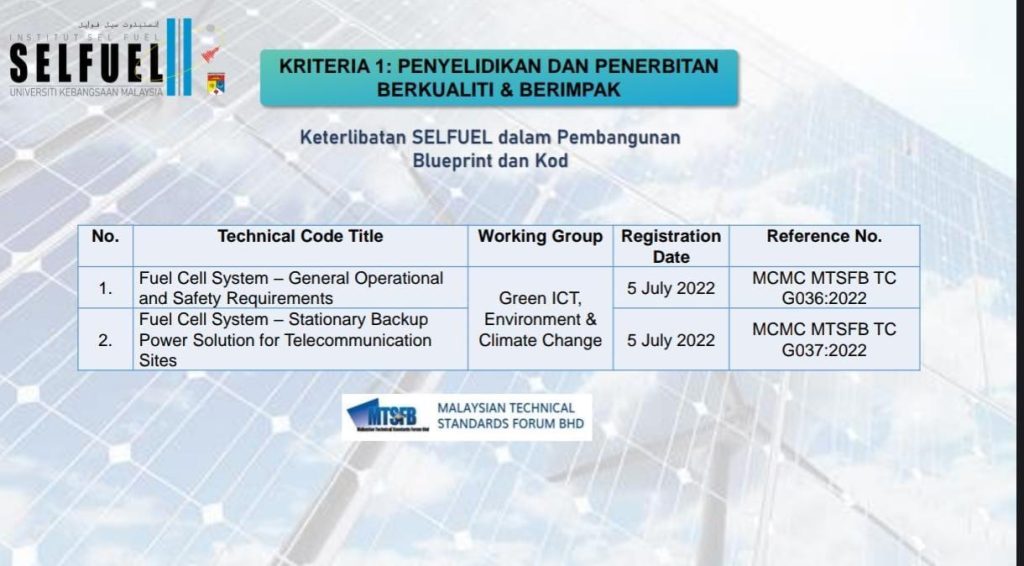
Under the UKM Sustainability 2030 Strategic Plan, UKM has also outlined the objective in developing affordable energy with initiatives such as using low-carbon transport on campus including hybrid cars, electric vehicles as well as hydrogen vehicles.


UKM Sustainability 2030 Strategic Plan; One of the initiatives addressing the encouragement on the use of low carbon transportation.
In addition, UKM also provides zero-emission transportation facilities to students with 250 e-Scooters unit that can be accessed within the campus area.
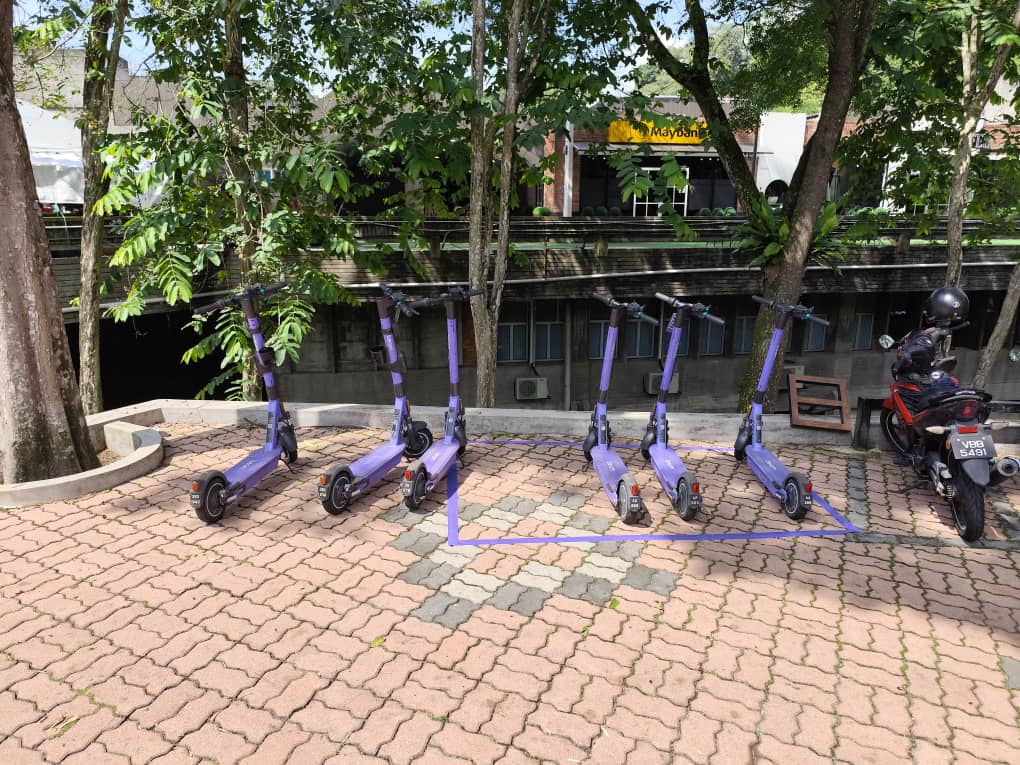
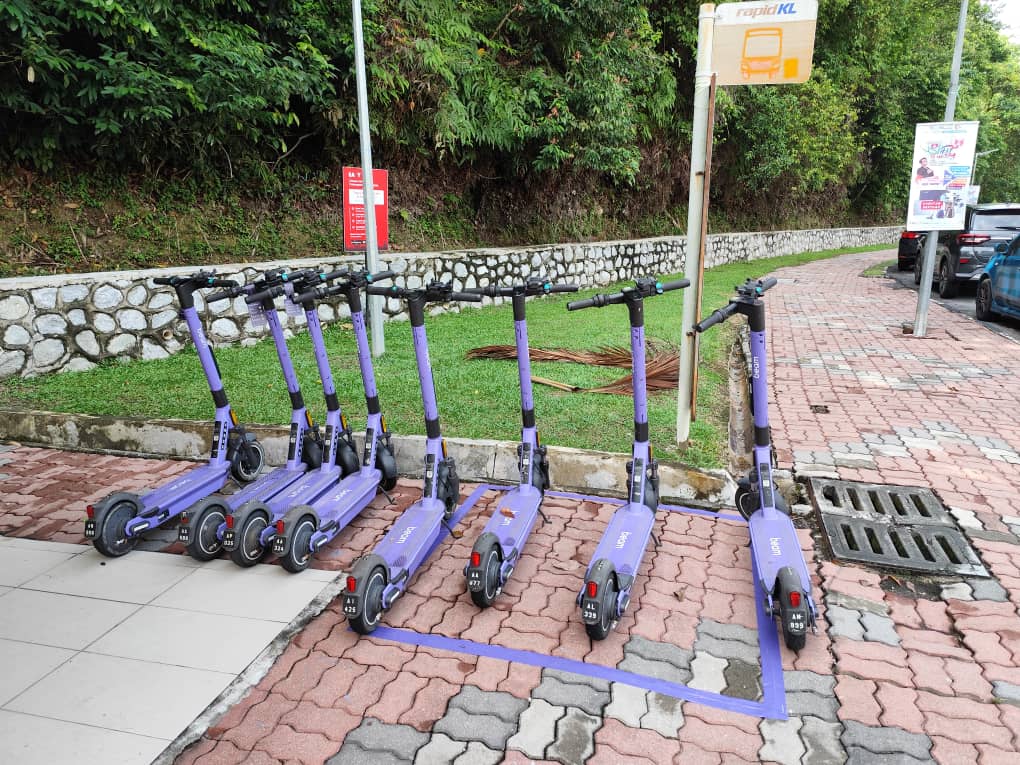
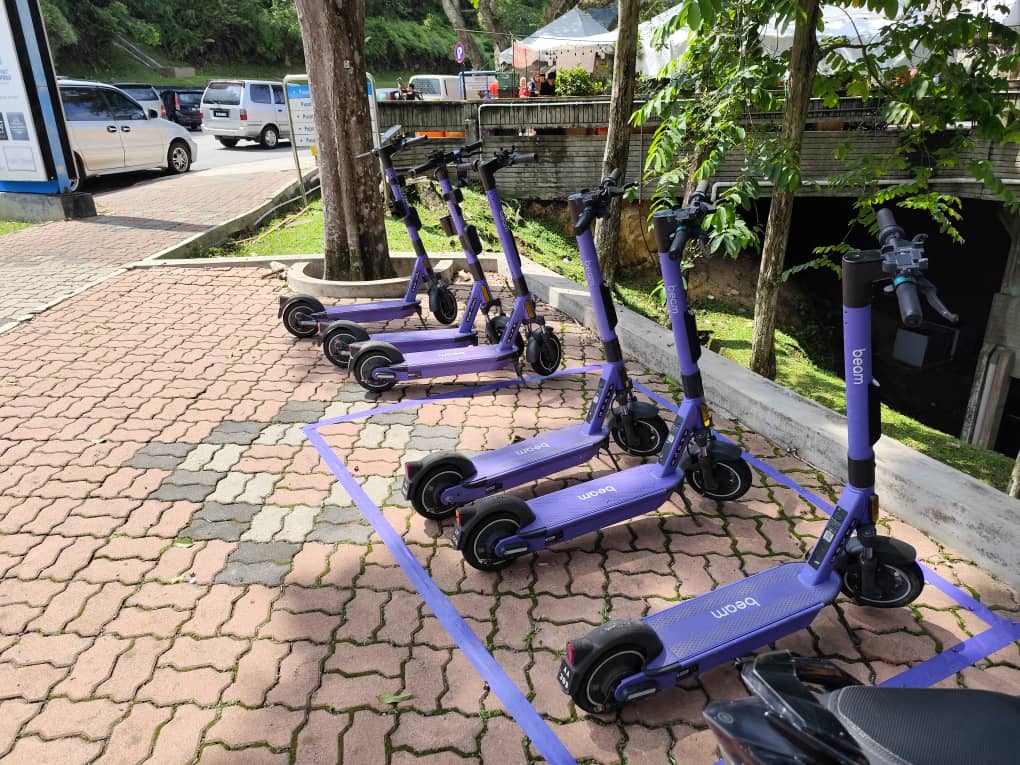
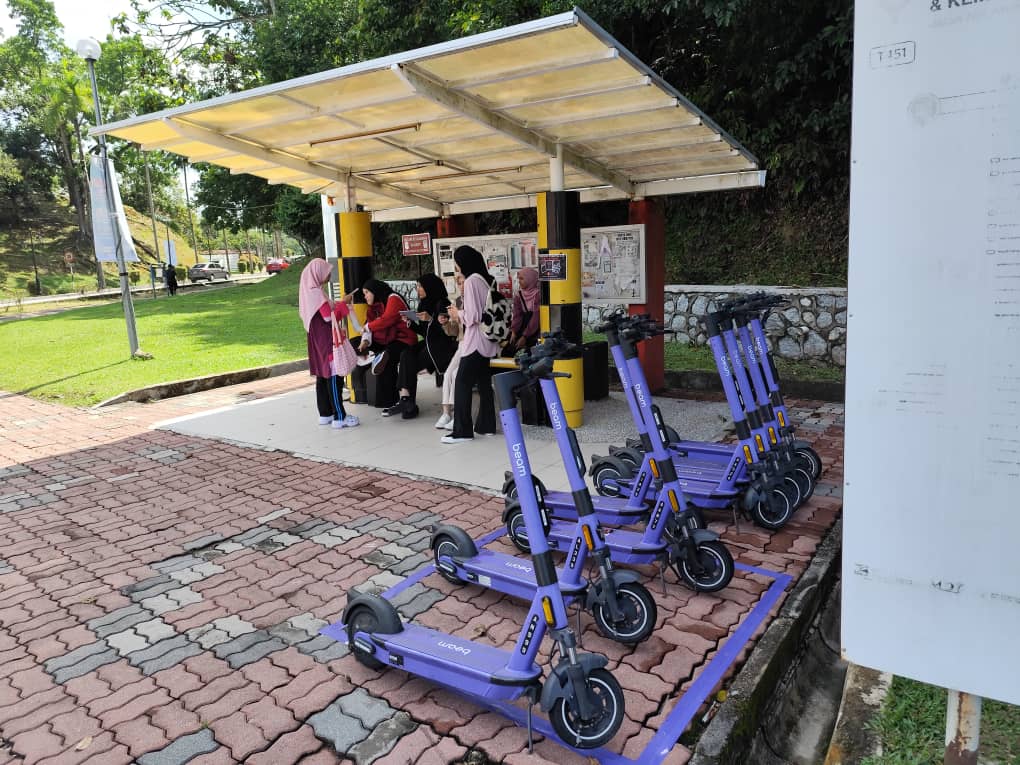




UKM Electric Bicycles; One of the 30 bicycle stations in the campus area
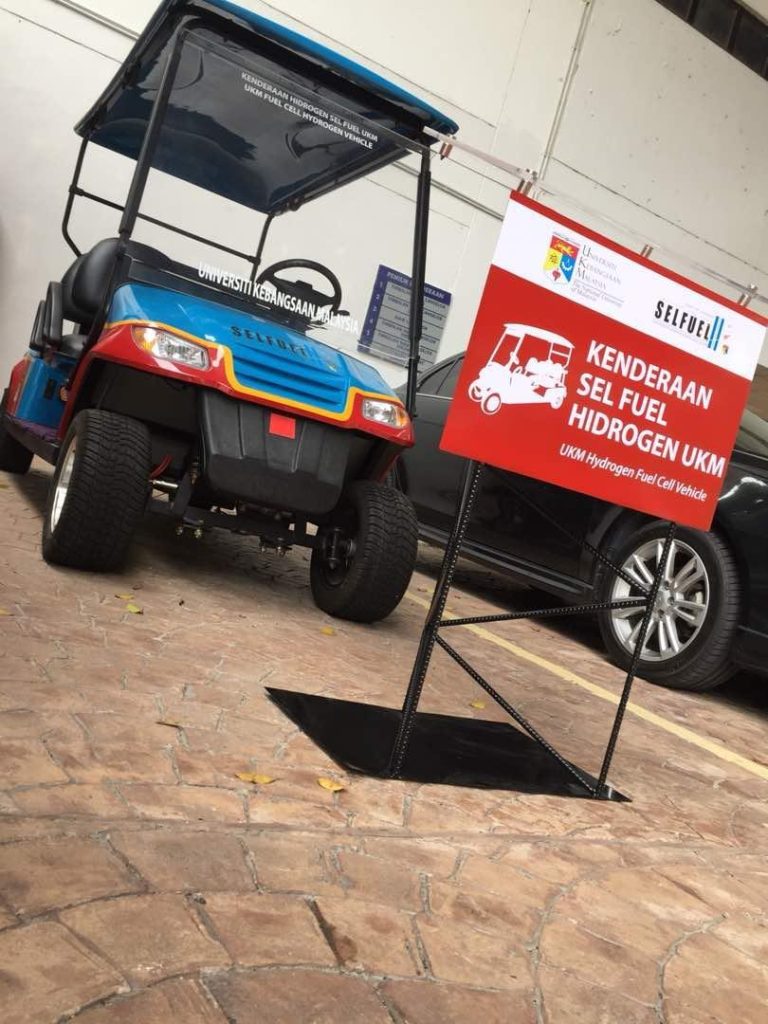

Fuel cell golf buggy, one of the zero-emission vehicles developed in UKM
Electric buggy ride facilities in UKM
Electrical vehicle to reduce carbon emission use buggy ride facilities in UKM

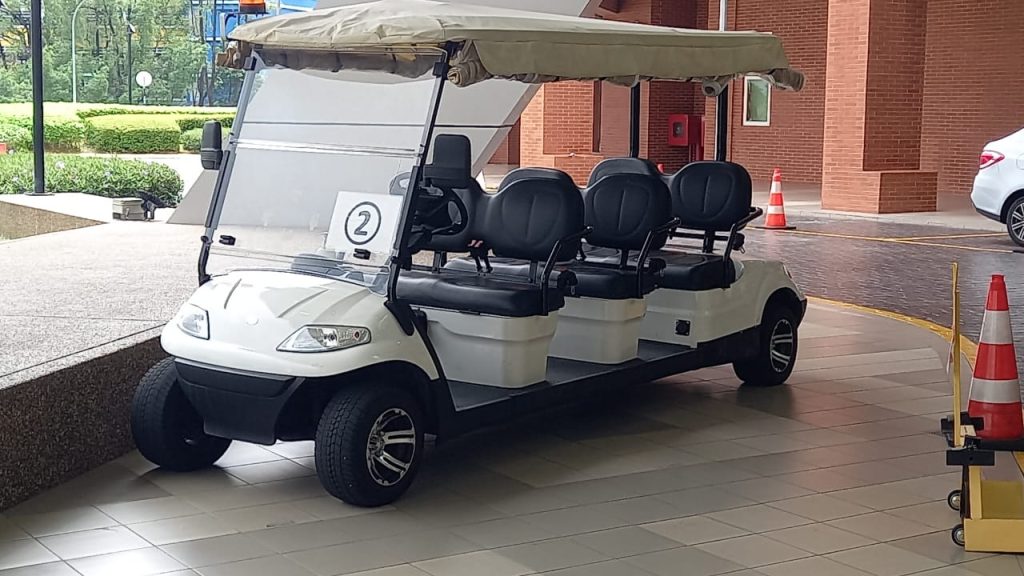
Housing Facilities for Employees
The University owns, operates and maintains a variety of on and off-campus accommodation facilities.
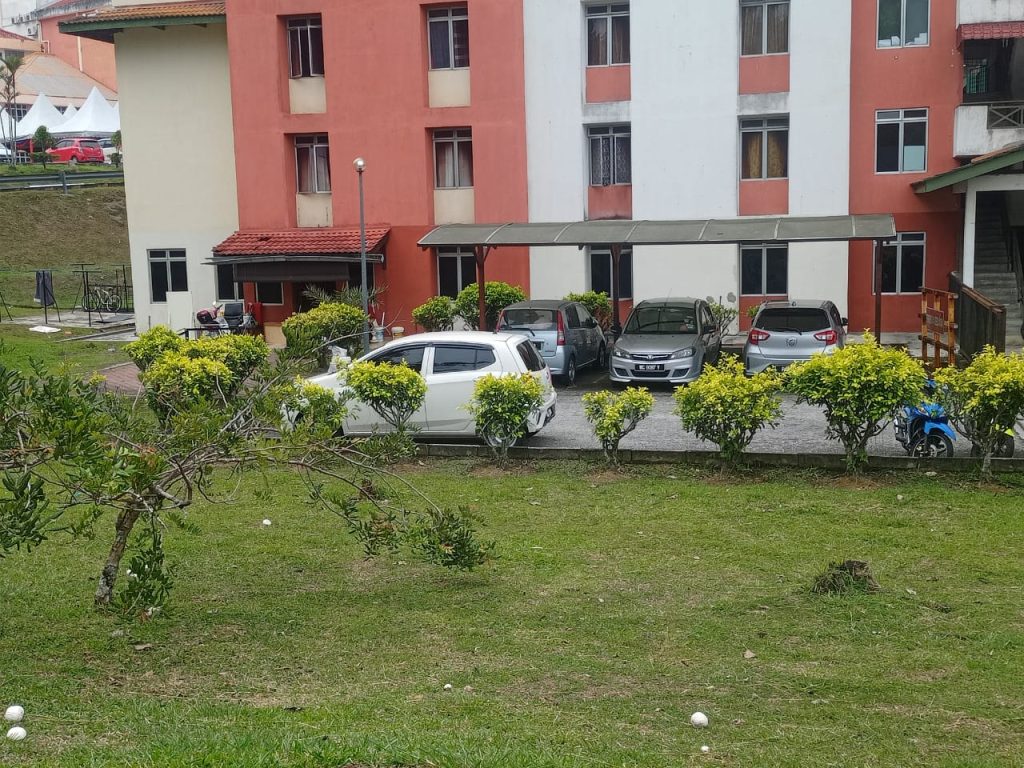
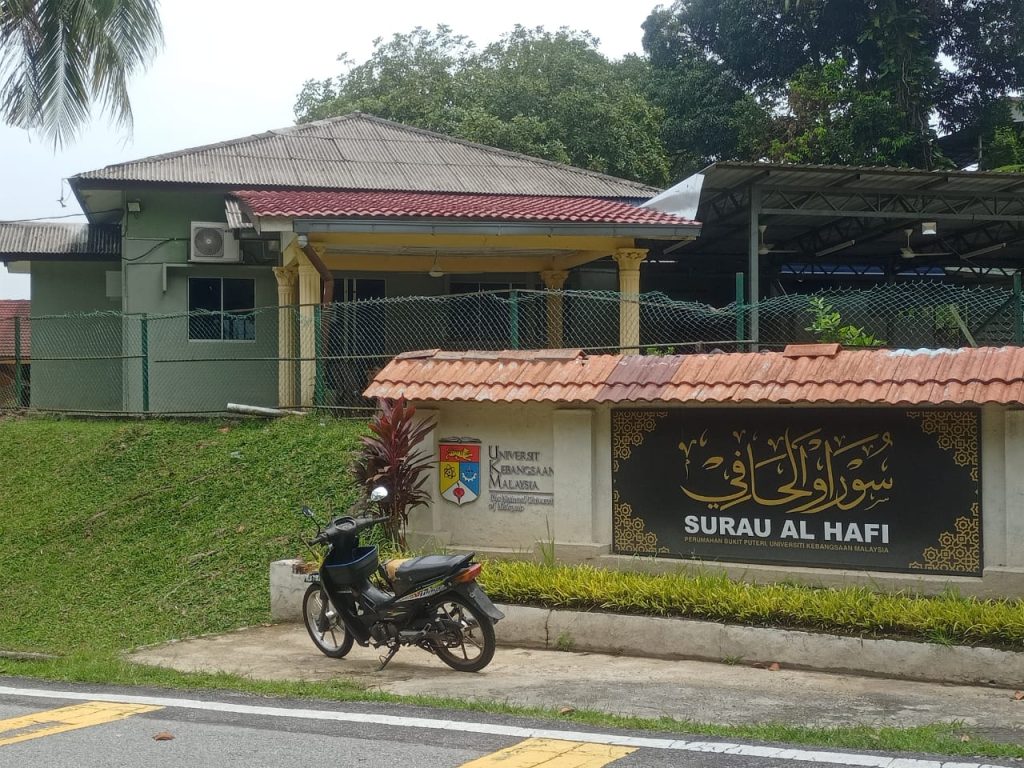
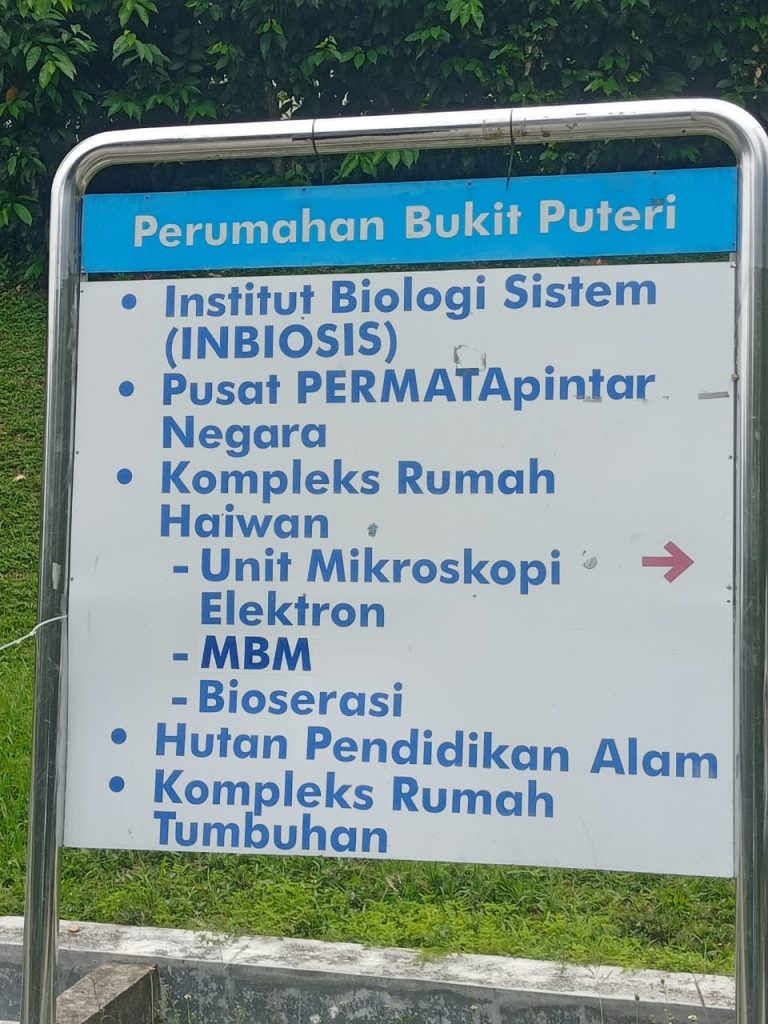
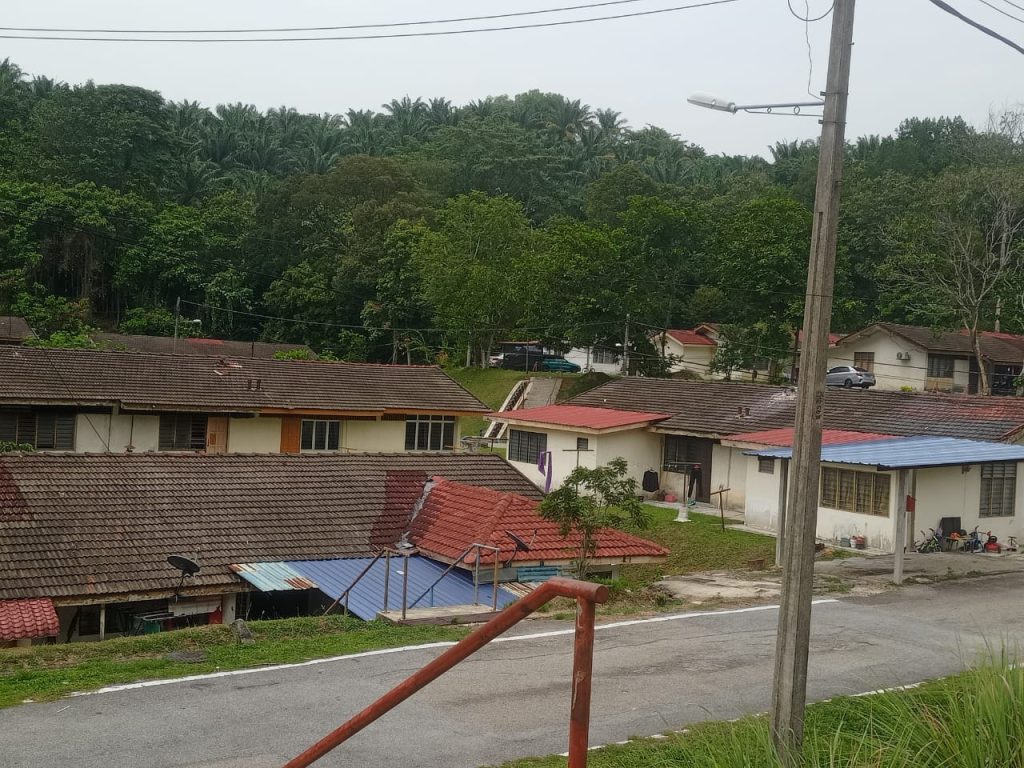
Affordable housing for students
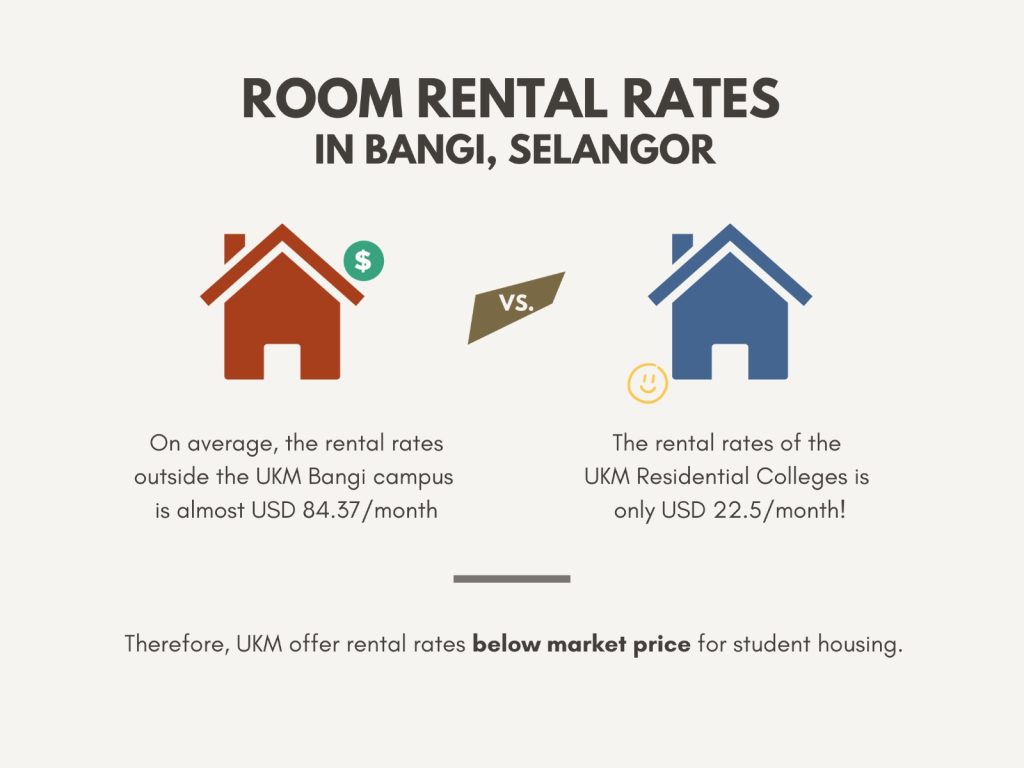
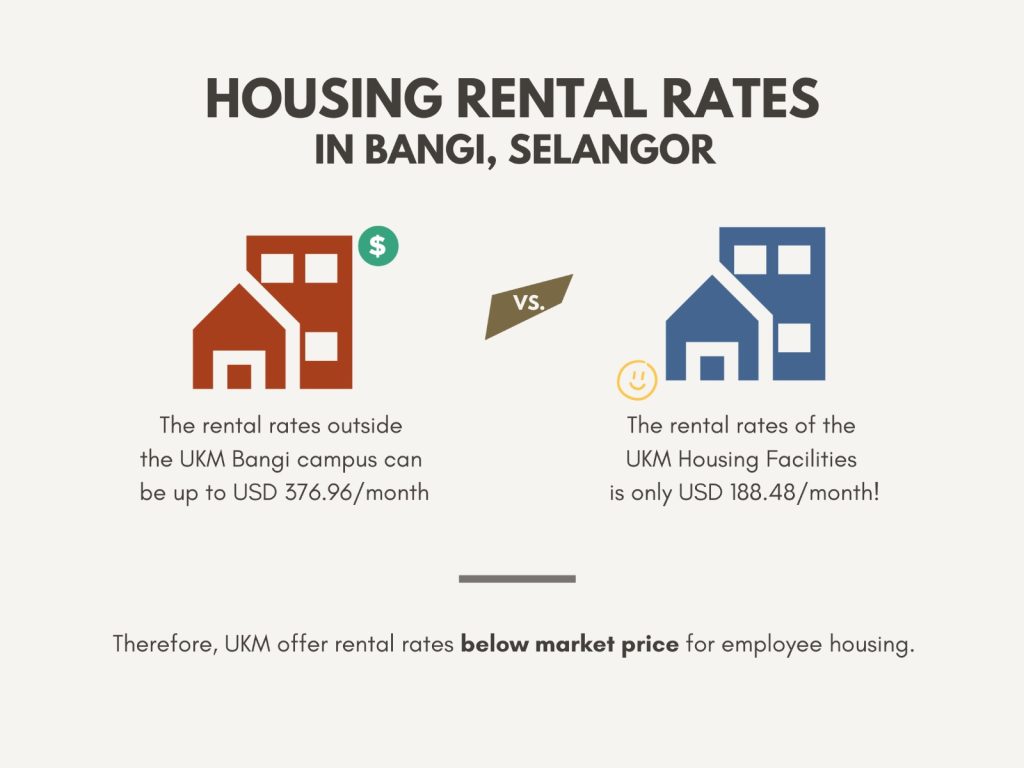
Pedestrian Pathway
- Separator between road for vehicle and pedestrian path.
- Main area for pedestrians has a covered walkway such as at Jalan Canselori
- Street lamps for pedestrians at night. UKM bangi has more than 2000 street lamps
Pedestrian Area UKM

Pedestrian Pathway Jalan Canselori, UKM




Pedestrian Pathway Jalan Temuan, UKM




Zebra Crossing
A pedestrian crossing is a facility designated for pedestrians to cross a road in groups, so that they can be seen by the motorists. Pedestrian crossing is also used by them to cross safely across a flow of vehicular traffic. However, accidents still occur among pedestrians even though there are provisions for pedestrian crossing facilities. The purpose of this research is to identify the level of motorists’ compliance towards pedestrian crossing at Universiti Kebangsaan Malaysia (UKM) which is located in Bangi, Selangor



